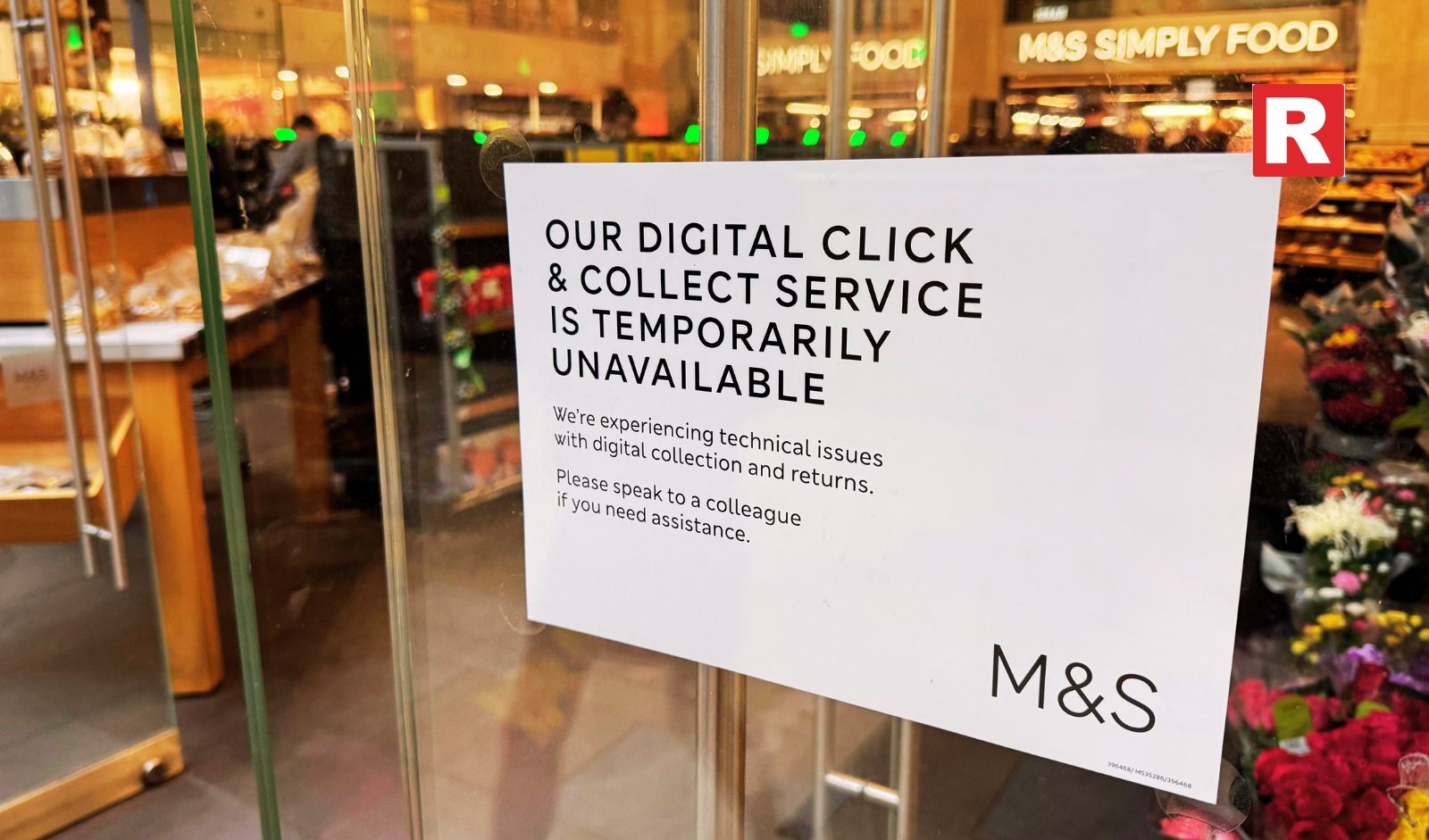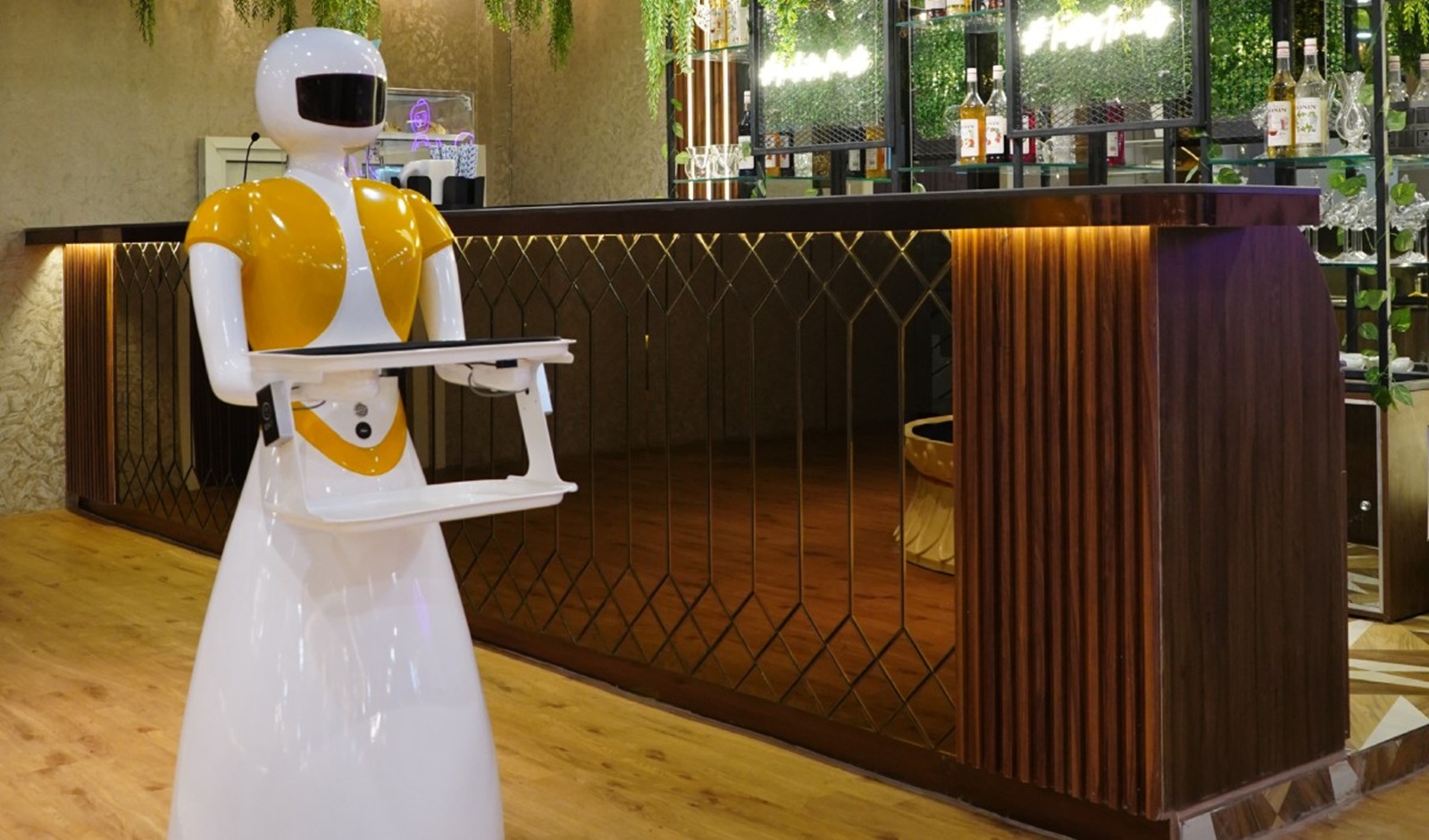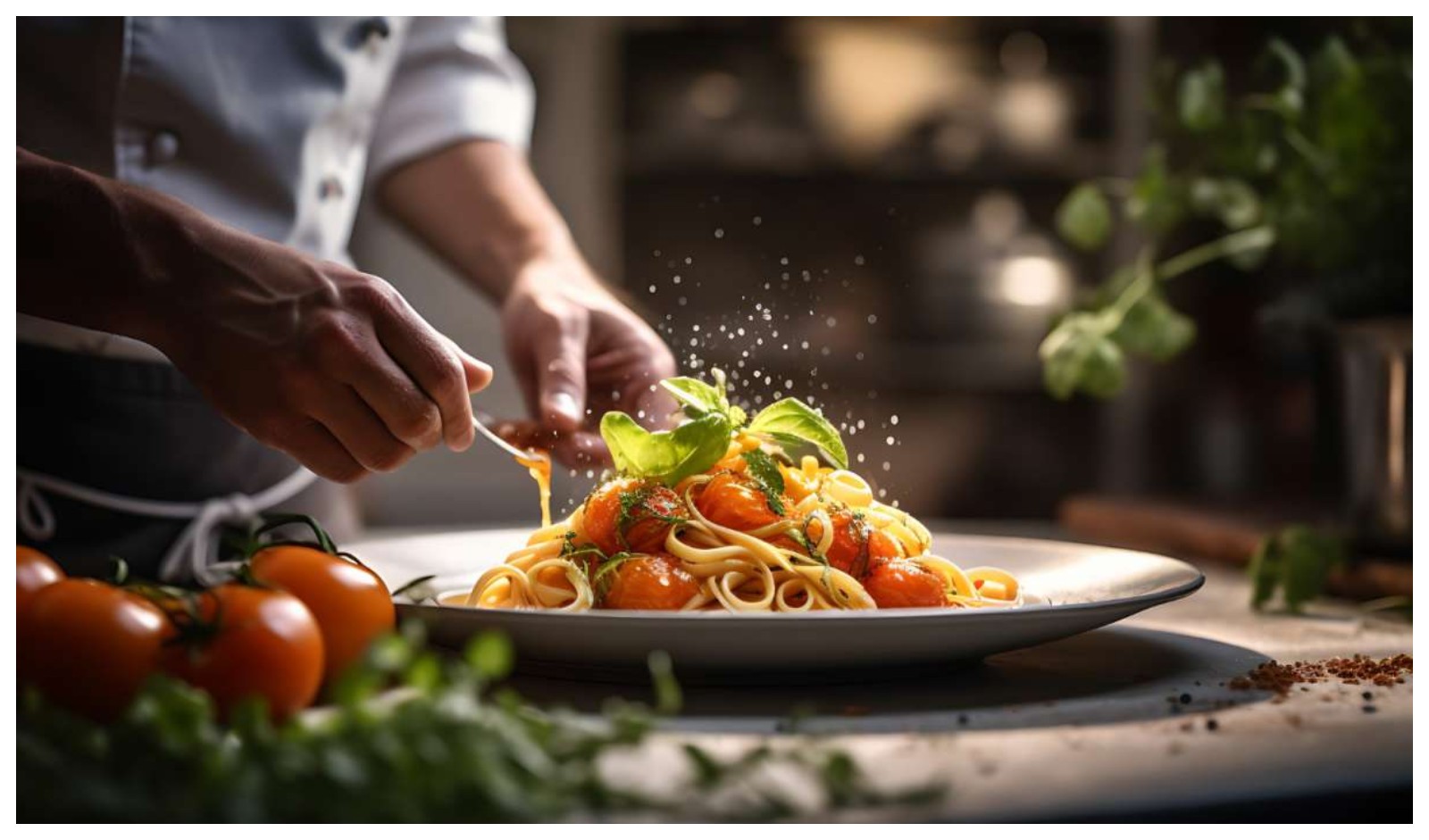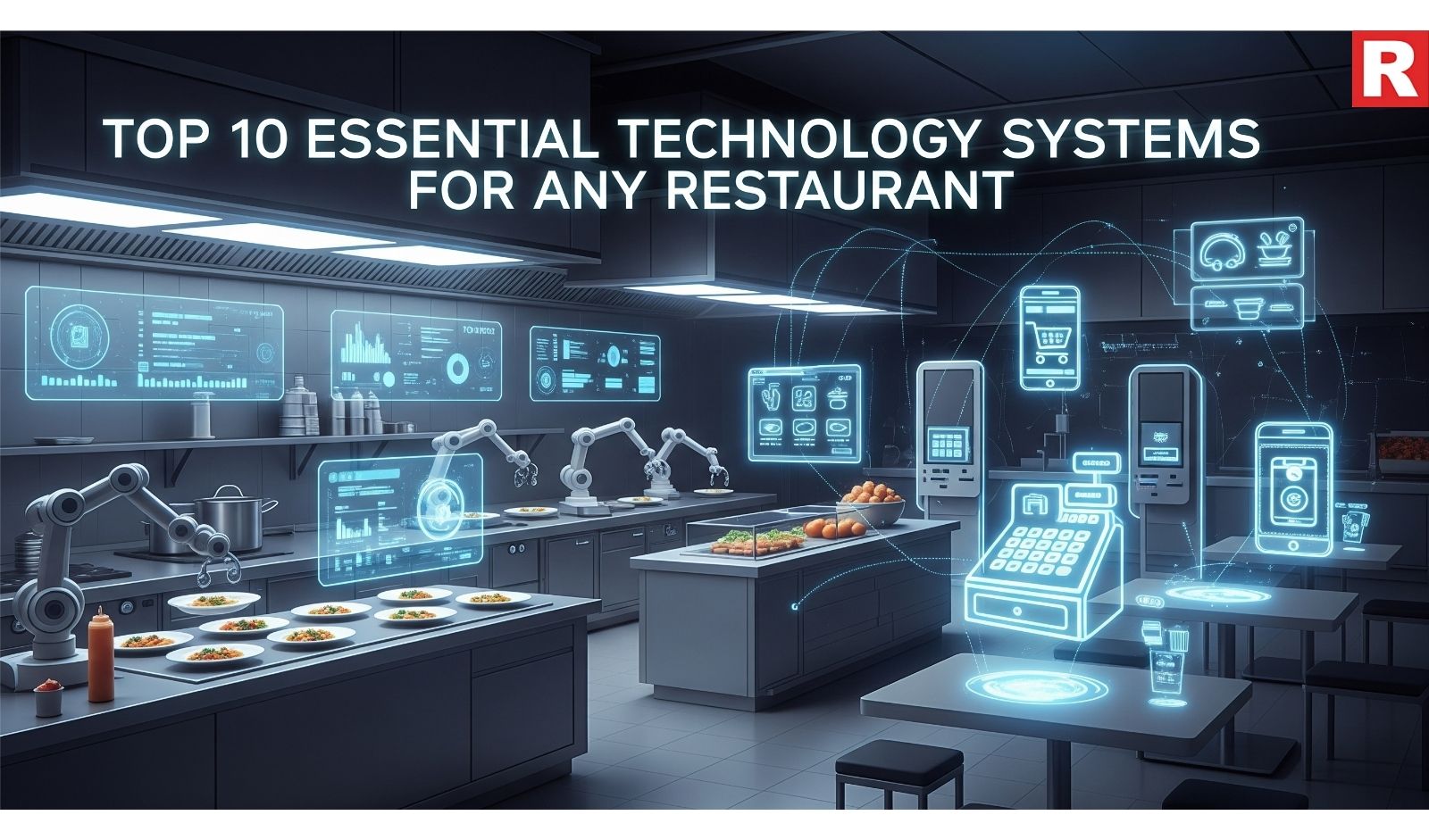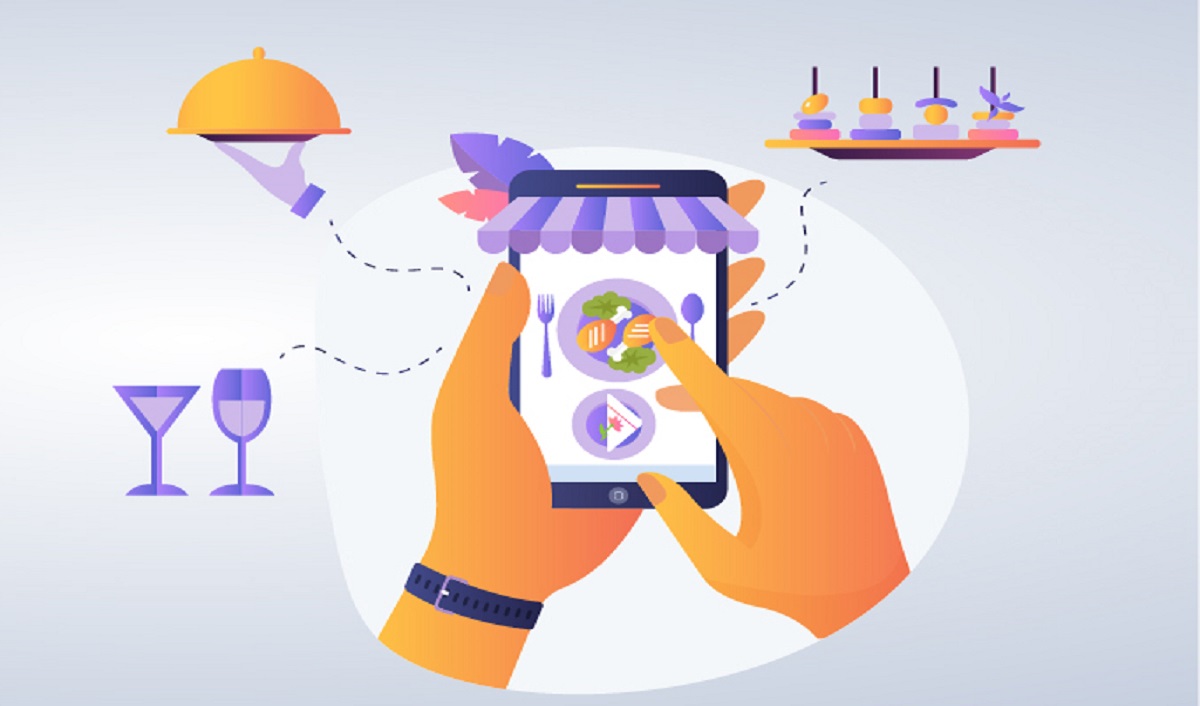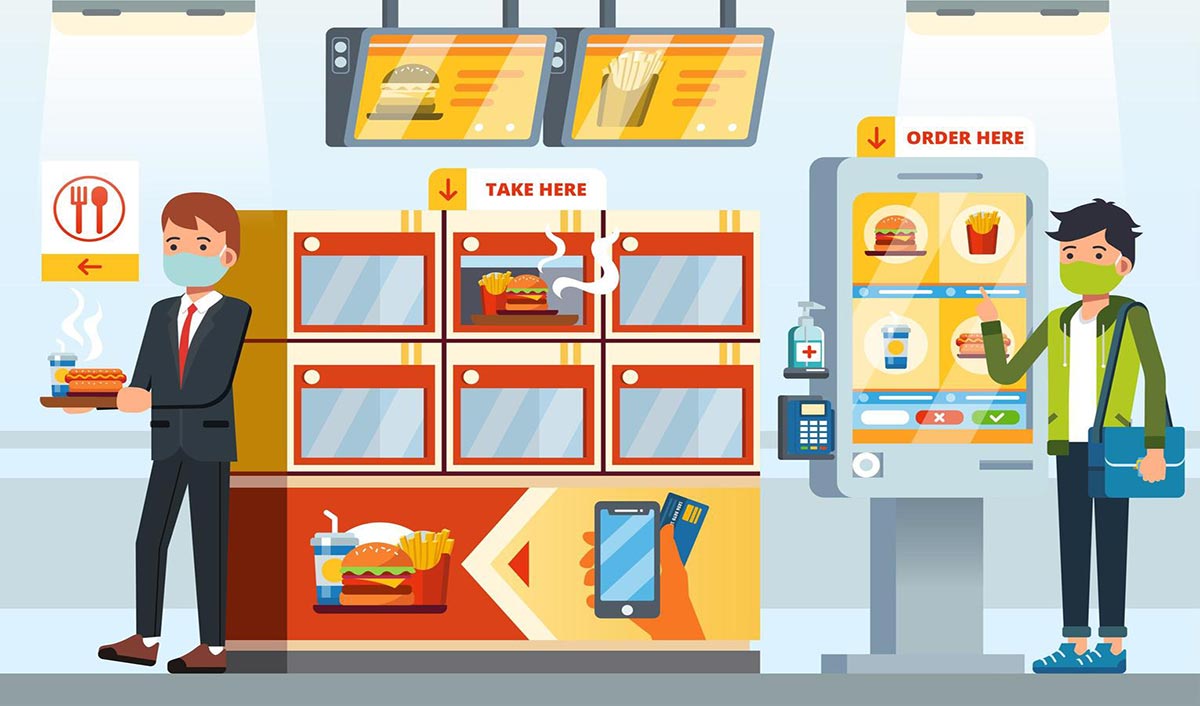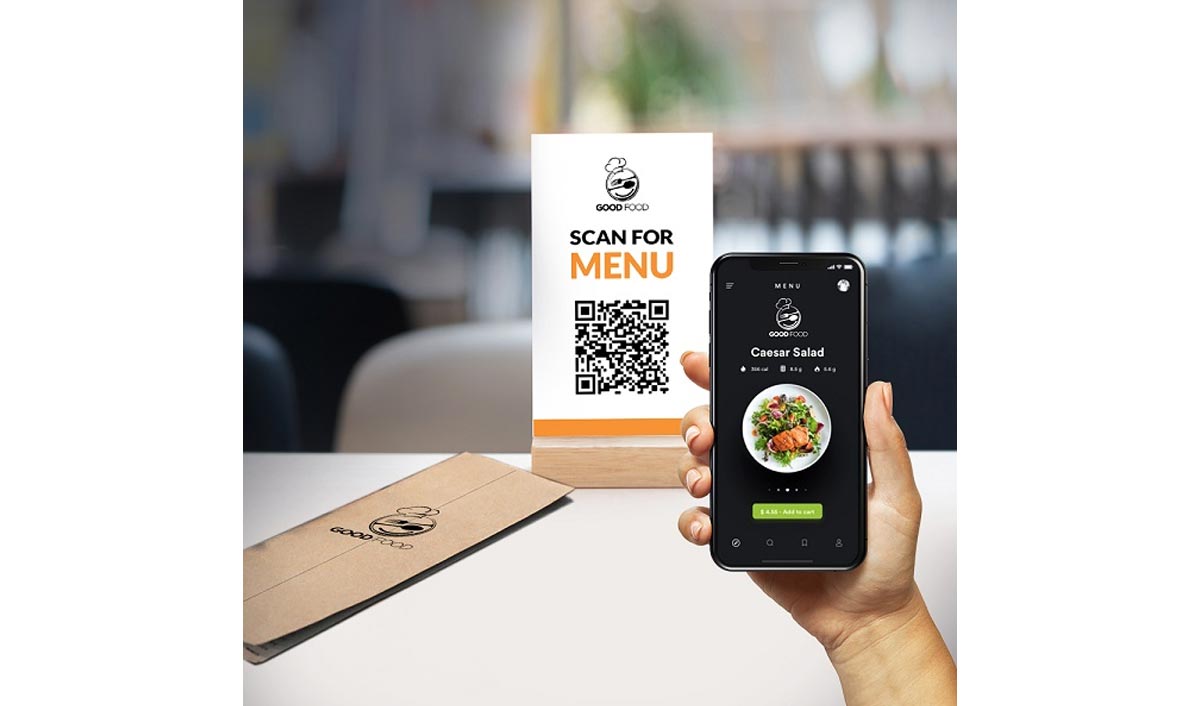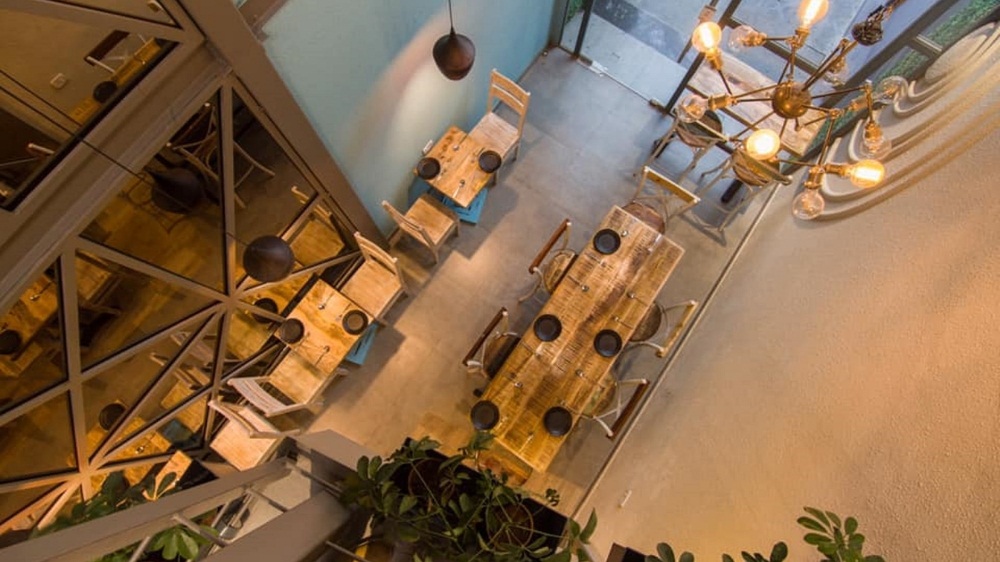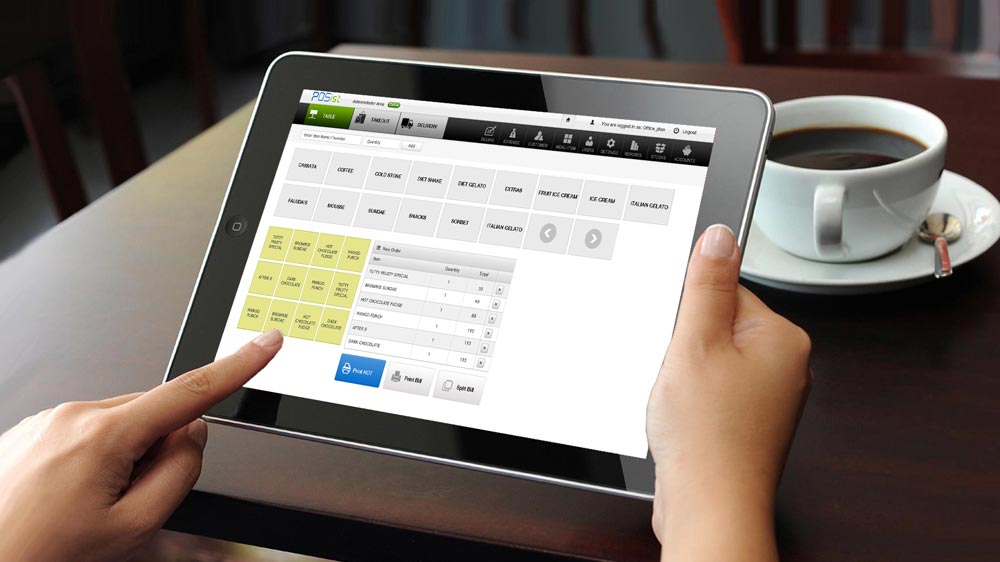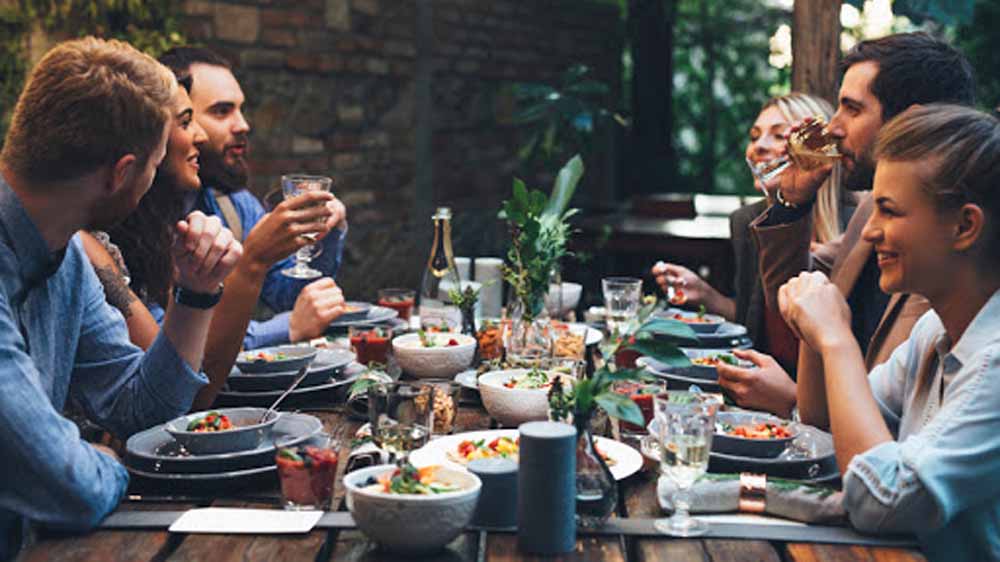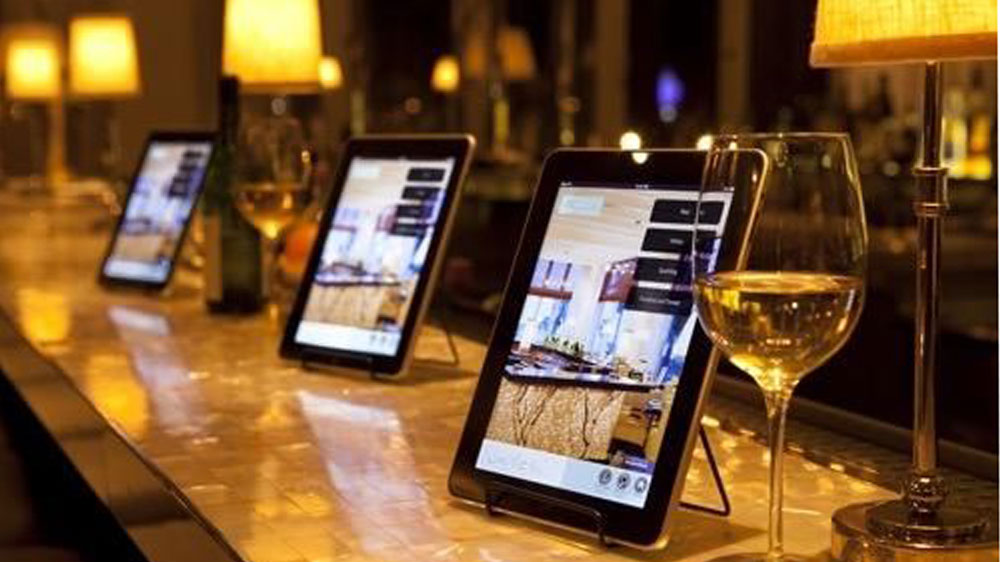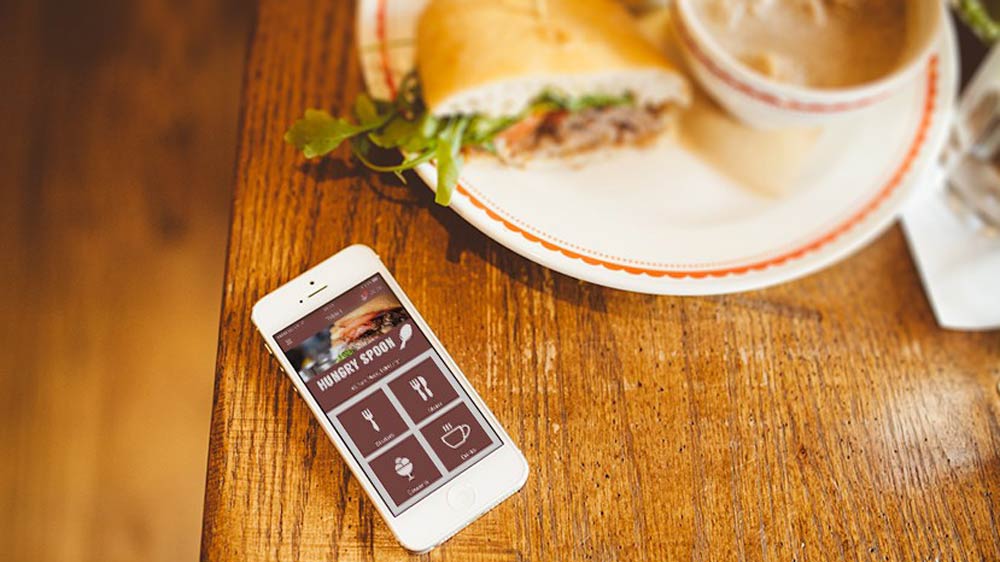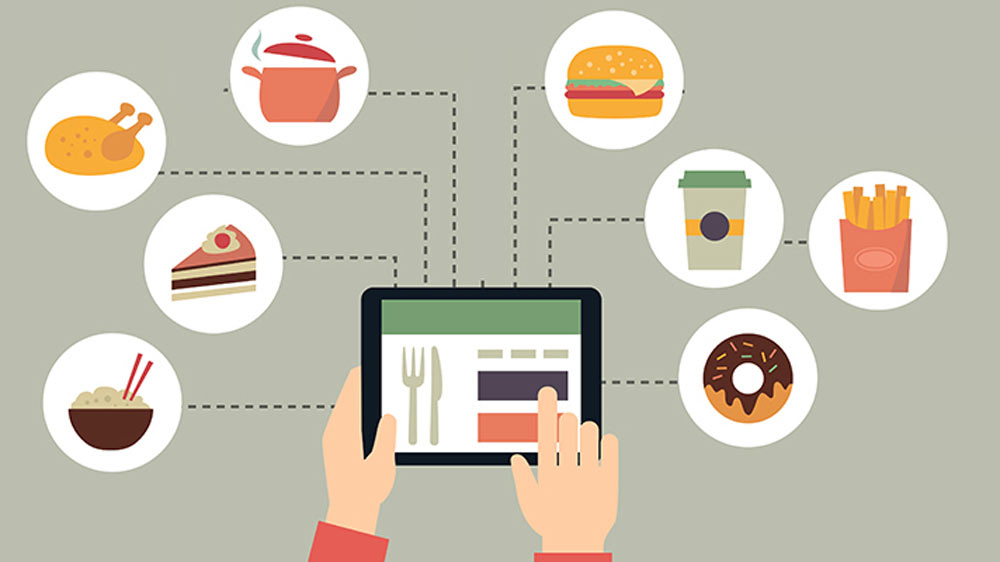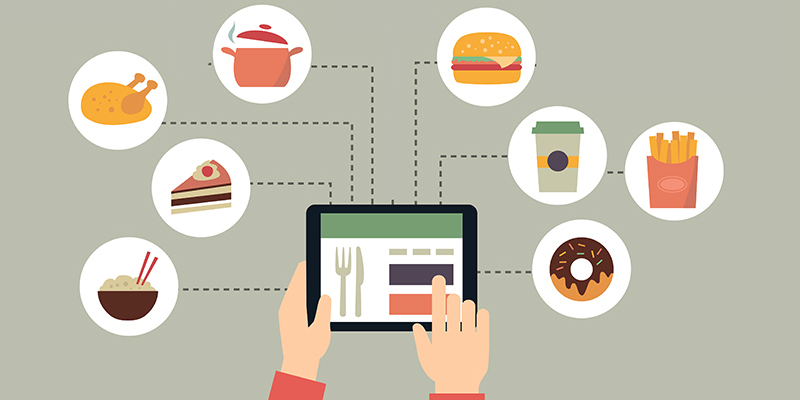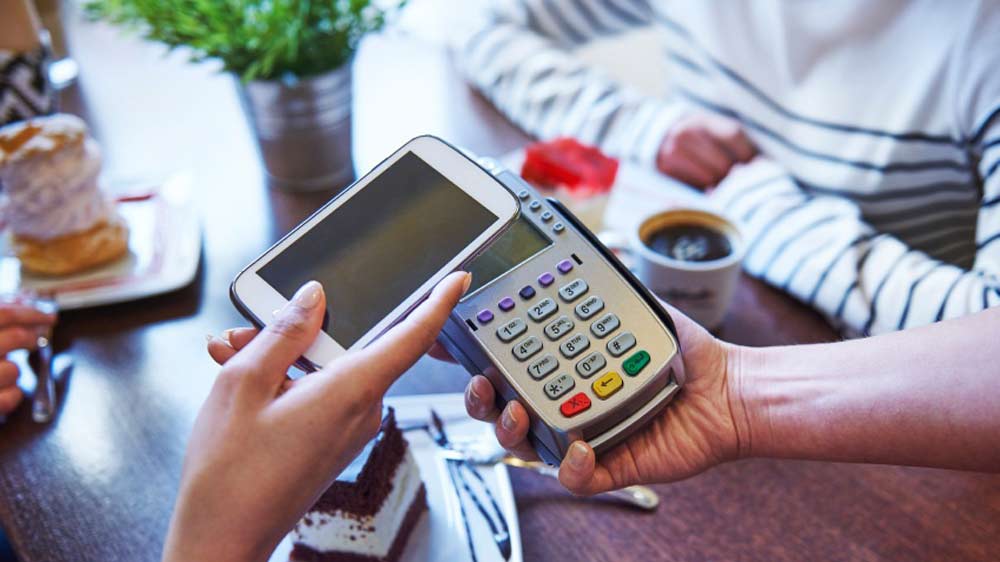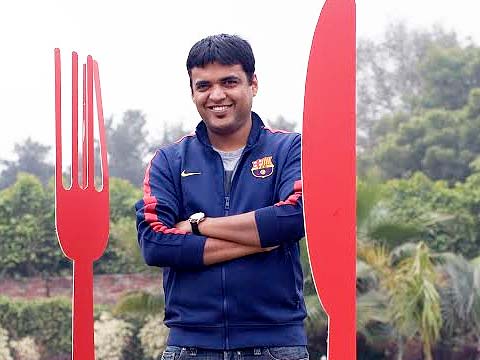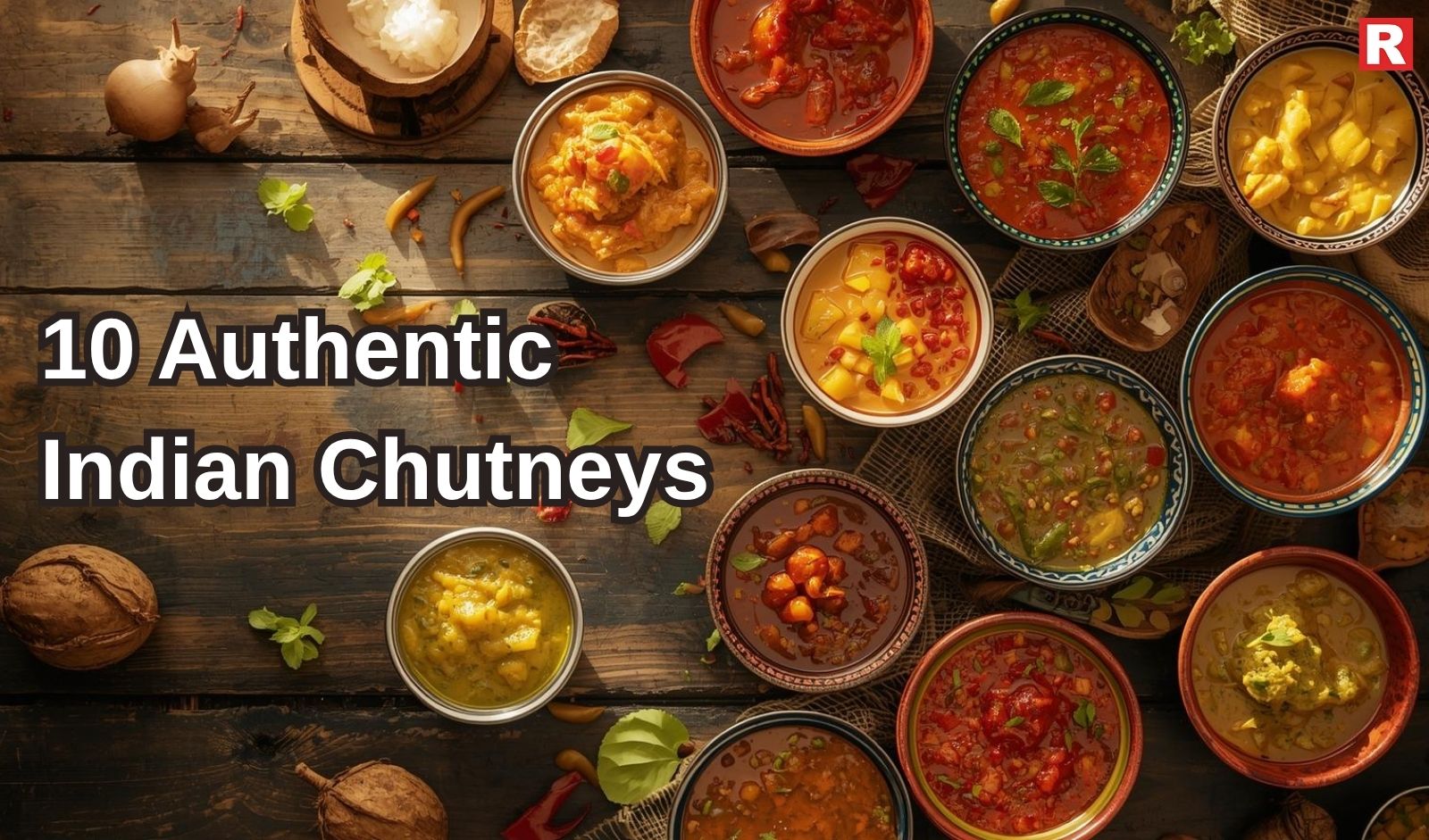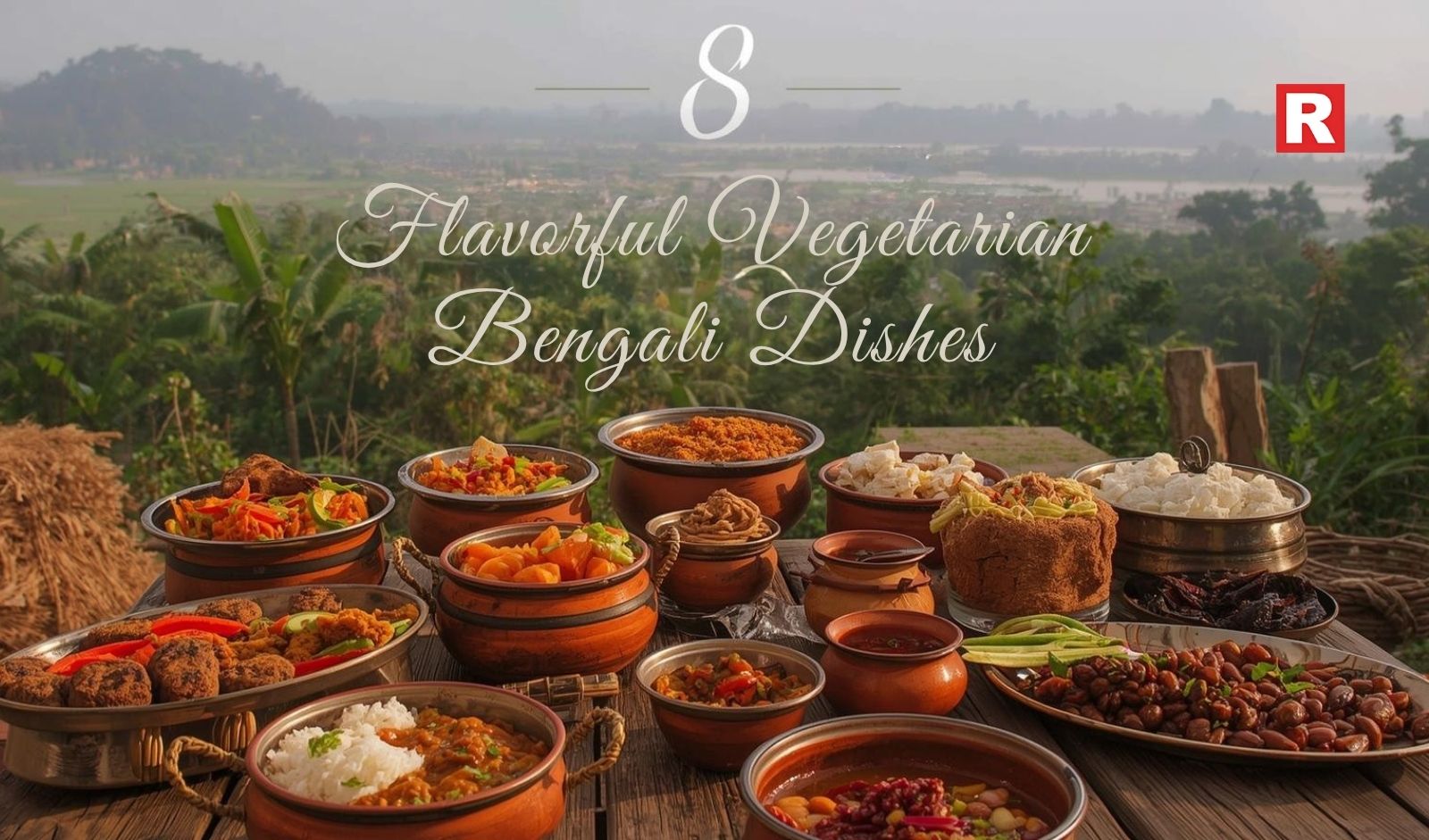
When a retail giant like Marks & Spencer faces a cyber-attack severe enough to halt online orders and disrupt store operations, the shockwaves are felt far beyond the UK. For restaurant owners in India, this isn’t just an international headline — it’s a wake-up call. The lessons are clear: data protection and customer trust are no longer optional; they are essential parts of running a modern food business.
Why This Story Matters to Restaurants
In April 2025, Marks & Spencer suffered a major cyber-attack that forced temporary shutdowns in online ordering, loyalty programmes, and in-store payments. The estimated financial hit ran into hundreds of millions of pounds, but the real loss was customer confidence.
For restaurants, the parallels are obvious. You collect guest details every day — through delivery apps, loyalty cards, QR-code menus, reservation systems, and WhatsApp marketing lists. A single breach could mean not just downtime, but a permanent dent in your reputation.
The New Face of Cyber Threats: People, Not Just Technology
The M&S incident wasn’t caused by a technical flaw alone. It reportedly began with social engineering — attackers pretending to be senior staff and tricking IT helpdesks into granting access.
This is the modern hacker’s playbook: no brute-force break-in, just a well-timed phone call. Restaurants, often with smaller teams and shared logins, are especially vulnerable. The weakest point is rarely the software; it’s the human who resets a password or approves a login request without verifying the caller’s identity.
The Real Damage: When Trust Breaks
For any consumer brand, data breaches are trust breaches. Once customers suspect that their contact numbers, birthdays, or payment details are exposed, they hesitate to return. Imagine your POS going down during a busy dinner service, or your regulars getting scam messages pretending to be from your restaurant’s loyalty club.
The cost isn’t just in rupees — it’s in reputation, repeat business, and online reviews. One breach, one viral tweet, and years of goodwill can evaporate overnight.
8 Lessons Every Restaurant Owner Should Apply Now
1. Secure POS and Billing Systems
Stop using one common login for all staff. Assign individual IDs for every cashier or server, enforce strong passwords, and activate two-factor authentication for administrators. Rotate credentials every 60 days and disable logins for ex-employees immediately.
2. Train Staff to Recognise Social Engineering
Never reset passwords or share credentials based solely on a phone call or WhatsApp message. Verify identity through a second channel — like a known email or manager confirmation. Conduct short quarterly training sessions so that everyone knows what a phishing or impersonation attempt looks like.
3. Audit Your Third-Party Vendors
The M&S breach began with a service provider — a stark reminder that your partners can be your biggest risk. In restaurants, vendors include POS providers, loyalty platforms, delivery integrations, and payment gateways.
Ask them directly: “If you’re hacked, can that compromise my customer data?” Ensure your contracts demand quick disclosure of any breach and liability protection.
4. Minimise and Protect Loyalty Data
If you’re collecting customer birthdays, addresses, or email IDs, ask yourself whether you actually use them. Store only what’s necessary and encrypt it. The fewer details you keep, the smaller your exposure in case of a breach.
5. Clean Up Marketing Lists
Guest data often sits unprotected in Excel sheets or WhatsApp folders. These are gold mines for hackers. Centralise your data in one CRM with limited access. Delete old lists every few months and keep only verified, consent-based contacts.
6. Prepare for “Offline Mode”
Cyber-attacks can disable billing and payment systems. What’s your plan if that happens during a Saturday dinner rush?
Create a one-page Standard Operating Procedure (SOP):
- Use manual KOT slips.
- Keep a backup card machine or alternate payment option.
- Inform customers transparently through signage or social media.
Preparedness keeps chaos from turning into crisis.
7. Explore Cyber Insurance
Few restaurants think of insurance for digital risks, yet even a small breach can lead to lakhs in costs — refunds, downtime, and PR clean-up. Look for policies covering data loss, vendor failure, and business interruption. It’s not just for tech companies anymore.
8. Restrict Access for Former Employees
Always remove access immediately when someone leaves the organisation. That includes POS logins, delivery dashboards, CRM accounts, CCTV feeds, and social media business managers. Former employees are among the most common entry points for internal breaches.
How to Communicate If a Breach Happens
If your systems are ever compromised, honesty is your best defence. Tell customers clearly what happened, what data was affected, and what steps you’re taking. Avoid corporate jargon — use plain, direct language.
Offer guidance, not panic: “Your payment data remains secure. Please change your password and watch out for scam messages.”
Finally, show that you value their trust. Offer reassurance through transparency, not just discounts. People forgive mistakes; they don’t forgive silence.
The Legal Side: India’s Data Protection Law
India’s new Digital Personal Data Protection Act now defines customer information — names, phone numbers, order histories — as personal data. Mishandling or leaking it can invite penalties. Restaurants must maintain consent records, ensure secure storage, and delete data when it’s no longer needed.
Even if you’re a small or mid-size outlet, compliance matters. Regulators are beginning to treat all consumer-facing businesses equally, and F&B is firmly on their radar.
Final Takeaway: Hospitality Now Includes Data Care
The Marks & Spencer cyber-attack wasn’t a retail problem; it was a trust problem. And in the age of digital dining, that trust is the lifeblood of every restaurant brand.
Your guests don’t just expect delicious food — they expect that their contact number won’t end up in a scammer’s hands, and that their payment data stays safe.
In 2025 and beyond, protecting customer data is no longer the job of your IT person alone. It’s part of hospitality itself. Safeguard your systems, train your people, and earn your guests’ confidence — one secure transaction at a time.

Indian festive seasons usher in a wave of celebrations, parties, and naturally, eating out. For restaurants, it is a double-edged sword with gigantic business prospects but also creating operational hurdles. Fulfilling the demand spikes with the promise of consistent quality of service needs to be managed with more than conventional planning. Artificial intelligence (AI)-backed demand forecasting has now become a revolutionizing tool, helping restaurants effectively plan for festive surges.
Historically, restaurateurs used experience, intuition, or past records to project festive demand. Though these gave an overall idea of customer flow, they were often inexact. Consumer actions in festivals are affected by several factors: cultural affinities, pay periods, weather patterns, current events, and even macroeconomic factors. AI forecasting systems can handle such multifaceted data inputs in unison. They take cues not only from historical sales but also from factors outside of them like social media patterns, holiday calendars, local events, and online ordering habits. The outcome is a more refined, more accurate demand forecasting.
One of the major benefits of AI forecasting is in inventory management. With festive seasons, there is little room for error. Overstocking causes wastage of food, whereas understocking means lost revenues and disappointed customers. AI algorithms study historical buying patterns in addition to existing market conditions to recommend the exact amount of raw material needed. For example, if a city has high demand for traditional sweet dishes or local festival foods, restaurants can pre-order ingredients, arrange more favorable supplier terms, and avoid last-minute runs on inventory.
Staffing is another aspect where AI-based insights are a godsend. The festive season necessitates flexible management of the workforce to manage greater foot traffic, order deliveries, and longer working hours. AI can forecast peak hours and days of a festival week and assist restaurants in dividing staff in the kitchen, service staff, and delivery staff according to the correct number for each shift. This avoids overstaffing that increases expenses unnecessarily and understaffing that affects the quality of service. In an industry where customer experience dictates loyalty, such precision is crucial.
Tools driven by AI also assist in dynamic menu engineering and pricing plans. Festivals usually witness changes in consumer food habits; families might prefer big combos, corporate parties might require catering services, and young customers might prefer festive-themed products. AI models can monitor these changes in real time, leading restaurants to adjust menus, package bestsellers, or roll out limited-time seasonal specials. Moreover, AI can assist with price-based decision-making by monitoring competitor behavior, consumer expenditure habits, and willingness to pay during busy times. This enables restaurants to optimize profit without pushing away price-conscious consumers.
The emergence of food delivery apps has further heightened the significance of AI forecasting. Orders surge sharply on festival days when traffic jams or social obligations discourage people from eating out. AI systems can be made to interact with delivery platforms in order to project spikes in certain neighborhoods or time slots. Restaurants can make their kitchen operations and delivery logistics accordingly to ensure quick order fulfillment, cut down wait times, and steer clear of customer frustration.
Notably, AI-based demand forecasting not only favors the operations of restaurants, but it also leads to an overall improved customer experience. Restaurants, being well-equipped with the right menu, appropriate staff, and in-time service, allow customers to have smooth festive eating without disappointments or delays. In the digital-first era, where visibility on social media and review ratings can define or destroy a brand, such readiness generates a competitive advantage.
In the future, the position of AI in the restaurant business will only expand. As machine learning algorithms advance, they will be capable of considering hyper-local patterns, dietary choices, and even micro-segmentation of client groups. Restaurants that adopt these resources will not only endure festival spikes but also excel during them converting moments of peak pressure into opportunities for durable customer loyalty.
In its essence, AI-enabled demand forecasting is transforming the way restaurants treat the festive period. It changes planning from guesswork to accuracy, from reactive management to proactive strategy. Through balancing technology with tradition, restaurants can make sure that the celebrations are fun not only for the customers but also for the businesses that serve them.

In today’s fast-paced dining scene, technology plays a key role — from digital reservations to contactless payments. But irrespective of all these advancements, restaurants aim to create experiences that guests remember for long time. Technology may eventually bring customers to your door, but it's the human touch that keeps them coming back.
Personal Touch is Irreplaceable
“We believe the personal touch is irreplaceable. A warm welcome, a conversation about the dish or a smile from the chef— that’s what guests remembers. Tech can enhance convenience, but hospitality is still about human connection,” shared Srikar Shetty, Founder & CEO, DJRS Hospitality.
There’s no denying that it’s about creating an everlasting impression on the guest.
“At Eve, we’ve always believed that hospitality should feel personal. Technology has made operations seamless, reservations quicker, and communication sharper — but what guests really carry with them is the feeling of being looked after. That’s why every visit begins with a welcome drink at the entrance, setting the tone of care that continues throughout their time with us,” mentioned Sumit Govind Sharma, Director at Monarch Liberty Hospitality.
Integrating Tech
Tech helps us reach guests faster and operate smarter, but it’s the human touch that builds loyalty. Balancing the two is key where tradition shape's identity and innovation keep the experience fresh without losing its soul. “We use tech as a support system, not a replacement. It helps us streamline operations, but the essence of our service remains deeply personal,” added Shetty.
Technology is a support system, not the main act. It helps to manage the reservations and guest preferences efficiently, but it’s the people who bring warmth to the table.
Namokar Jain, Founder of One Window Hospitality said, “Technology makes things easier, online reservations, digital menus, AI-driven suggestions, but guests don’t come back for the tech, they come back for how they felt. A smile from the team, a server remembering your favorite dish, or a story shared at the table, that’s the real magic.”
Technology helps in serving better and explores new techniques, but the essence of hospitality is still human. A perfectly designed plate or a smooth ordering system means little without the warmth of the person bringing it to the table.
“Failures happen, Wi-Fi drops, apps crash, but that’s when our people step up. Their expertise, reassurance, and personal attention remind guests why dining is an experience, not just a transaction,” added Jain.
Power of Visual Storytelling
Restaurants are rooted in tradition with their ingredients, techniques and storytelling. Visual storytelling ties it all together.
“Innovation comes through how we present, curate experiences, and share our journey visually. Whether it’s a thoughtfully plated dish or a story shared on social media, visual storytelling helps us connect emotionally with our audience,” shared Shetty.
Jain stressed upon the fact that guests eat with their eyes first and every element, the plating of a dish, the ambience of the space, even a short reel tells a story. “It’s not just about how things look; it’s about how they make you feel. That emotional connection is what keeps people coming back, beyond the food or the technology.”
While, the future will be focused on smart operations like AI driven forecasting, guest convenience, immersive experiences and data personalization. Furthermore, the unchanging value of human connection remains heart of the hospitality.

No industry can exist without technology in the present era. The restaurant industry is the same. The restaurant industry has seen significant changes as a result of new technologies. These technologies have had a substantial impact on a wide range of operations, from restaurant operations and customer engagement to revenue creation. If you want to be a successful restaurant owner, you must understand the technology you need to include in your business.
Investing in the correct technological equipment is no longer an option; it is a must for every progressive restaurant owner who wants to improve efficiency, streamline operations, promote customer happiness, and ultimately increase profitability. This detailed article will look into the top ten important technologies that may transform your restaurant and put you on the path to long-term growth and success in the digital age.
Why Technology is Crucial in the Restaurant Sector
- Increased operational efficiency: Technology simplifies routine operations, including order processing, inventory management, and table assignment. This lowers manual errors, speeds up service, and enables employees to focus on offering better client experiences.
- Improved Customer Experience: Digital technologies such as online ordering, mobile payment choices, and table management systems provide customers with ease and a consistent experience. This improves satisfaction and encourages repeat visits.
- Data-Driven Decision Making: POS systems and other software offer vital information about sales patterns, popular menu items, and consumer behavior. This data enables restaurant owners to make more educated decisions regarding their menu, personnel, marketing, and promotions.
- Expanded Access and Revenue Streams: Online ordering platforms and social media technologies enable restaurants to access a larger audience outside of their physical location. This creates additional revenue sources from delivery and takeaway services.
- Stronger Brand Reputation: Technology facilitates the management and monitoring of online reviews, social media presence, and consumer feedback. A good internet reputation is essential for gaining new clients and establishing a trustworthy brand.
Read more: Small Spaces, Big Impact: The Rise of Intimate Dining
The Top 10 Restaurant Systems
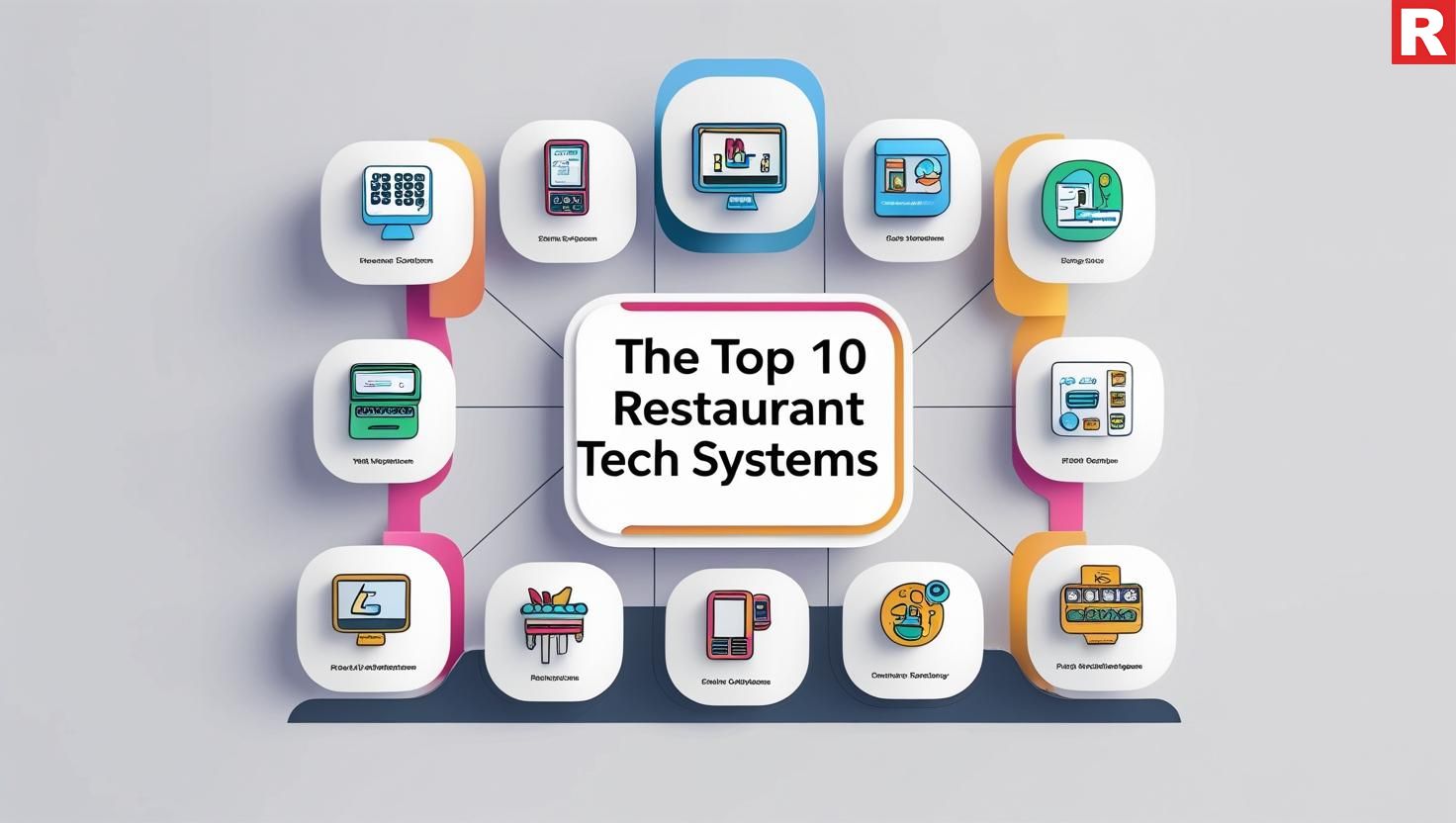
1. Point of Sale (POS) System
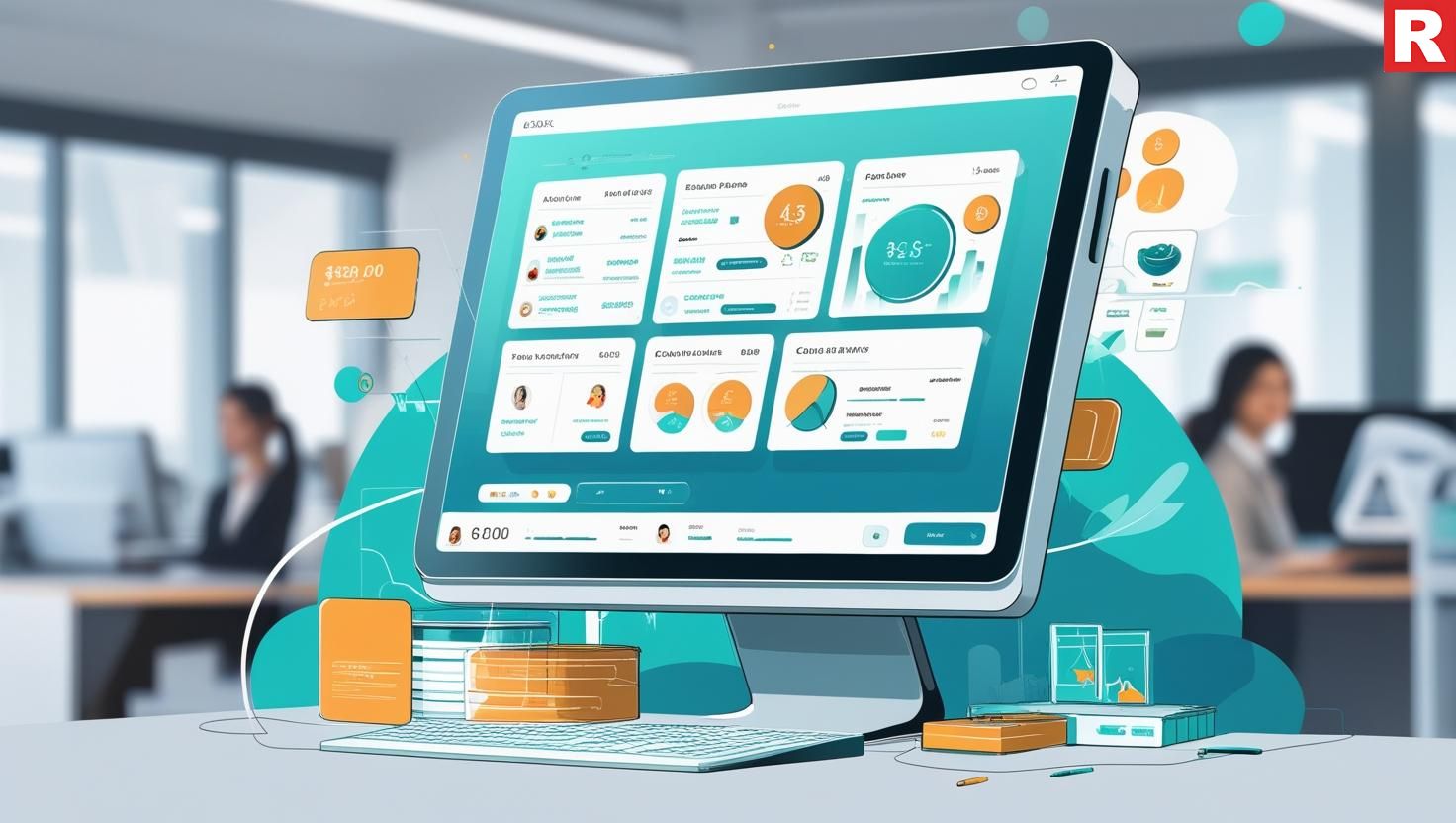
A modern restaurant's Point of Sale (POS) system is essential to its operations. This is much more than simply a cash register; it's the central nervous system that handles orders, payments, sales tracking, inventory management, and delivery of vital data insights.
Benefits for Your Restaurant:
- Efficient Order Taking: Streamline order entry, eliminate errors, and improve service, particularly during peak hours.
- Seamless Payment Processing: Accept a variety of payment options, such as UPI, digital wallets, credit/debit cards, and cash, to accommodate your clients' varying payment preferences.
- Inventory Management: Real-time tracking of stock levels, reorder points, and food waste minimization is critical for effective cost management.
- Staff Management: Track employee hours, performance, and tips to increase efficiency and responsibility.
- Detailed Reporting and Analytics: Gain important insights into sales patterns, popular menu items, customer preferences, and peak traffic periods, allowing you to make data-driven decisions about menu, staffing, and promotions.
2. Online Ordering System
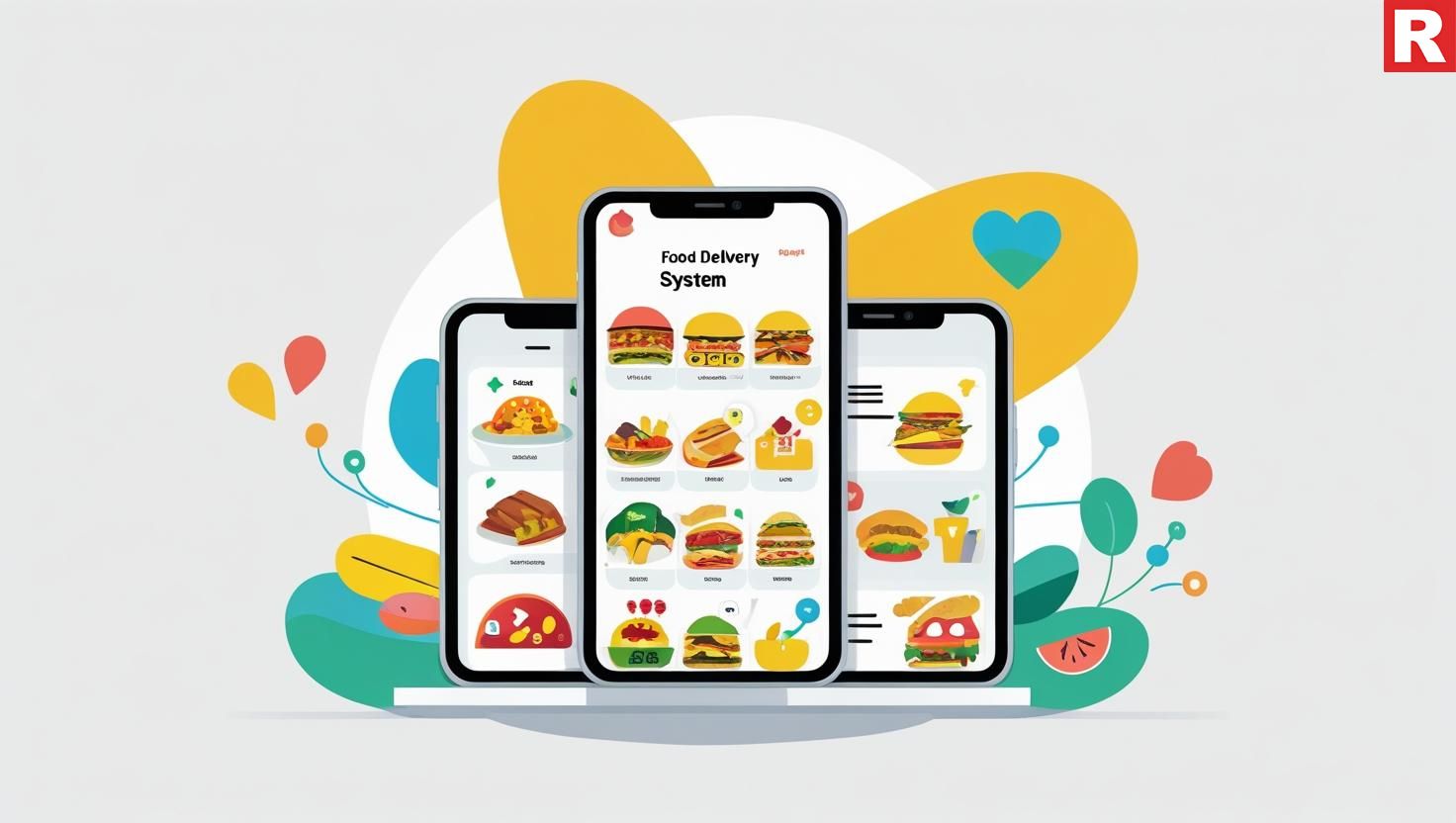
Customers today expect to be able to order food online for delivery or takeout. An interconnected internet ordering system is no longer a luxury but rather a requirement.
Benefits for Your Restaurant:
- Expanded Reach: Reach a larger consumer base in the nearby areas that prefer the convenience of online ordering.
- Increased Sales: Accept orders outside of your real restaurant's working hours or capacity.
- Reduced Order-Taking Errors: Customers can immediately enter their orders, reducing errors and enhancing accuracy.
- Streamlined Operations: Sync online orders straight into your POS system for more efficient kitchen management and fulfillment.
- Data Collection for Targeted Marketing: Collect client data (with their permission) for targeted promotions and loyalty programs.
Know more: 10 Shocking Ways Restaurants Repurpose Leftover Food
3. Table Management System
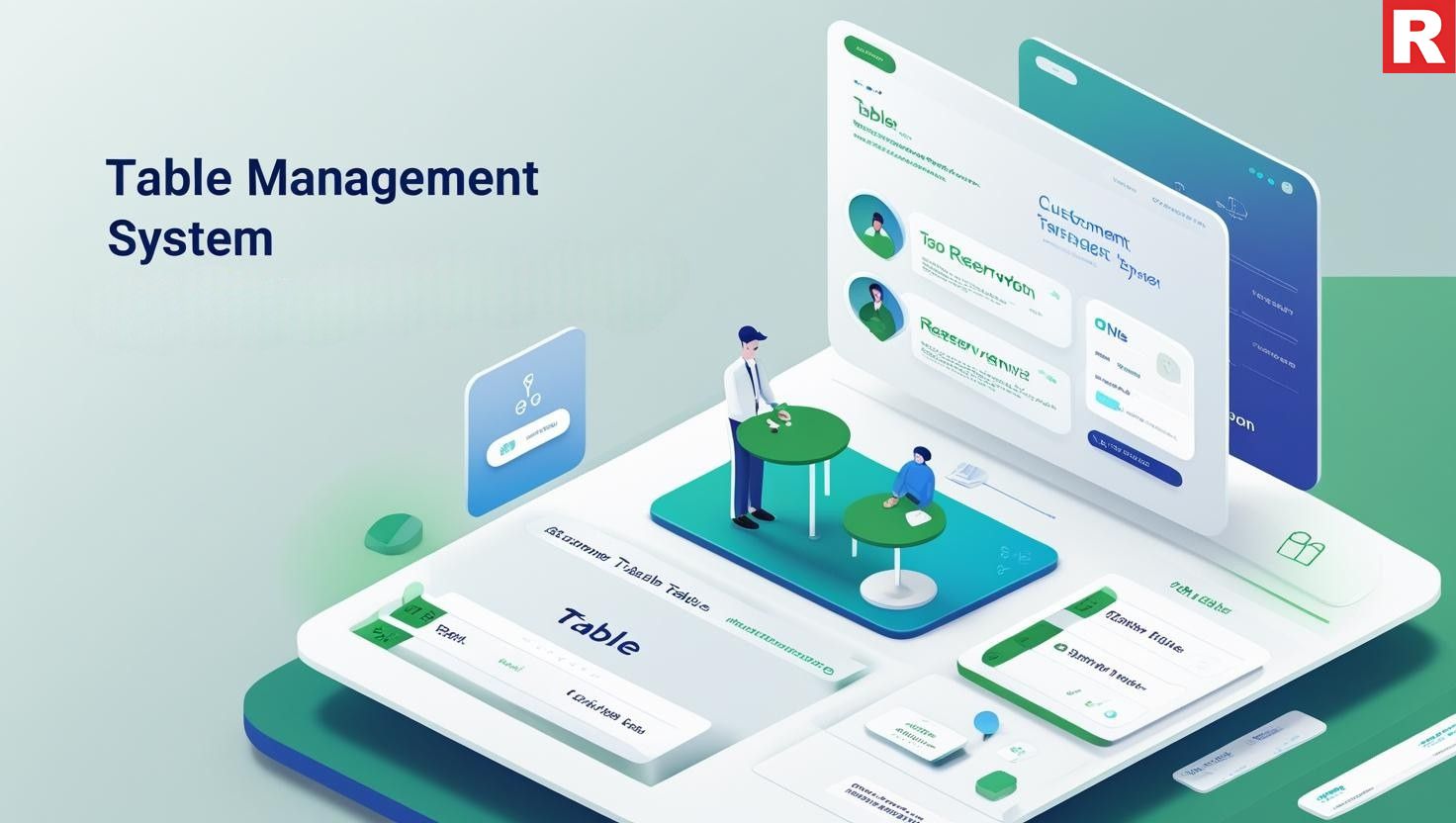
A table management system can considerably increase efficiency and customer satisfaction in restaurants that offer dine-in service.
Benefits for Your Restaurant:
- Efficient Seating: Maximize table utilization, reduce wait times, and effectively manage reservations, particularly on busy weekends.
- Real-Time Table Status: View a clear visual representation of table availability, guest status, and server assignments.
- Waitlist Management: Easily manage waitlists, provide anticipated wait times, and notify guests when their table is ready via SMS or in-app notifications.
- Improved Customer Experience: Eliminate the frustration associated with waiting and enjoy a more organized dining experience.
- Data on table turnover and guest preferences: Monitor table turnover rates and collect information on guest preferences for seating arrangements.
4. Kitchen Display System (KDS)
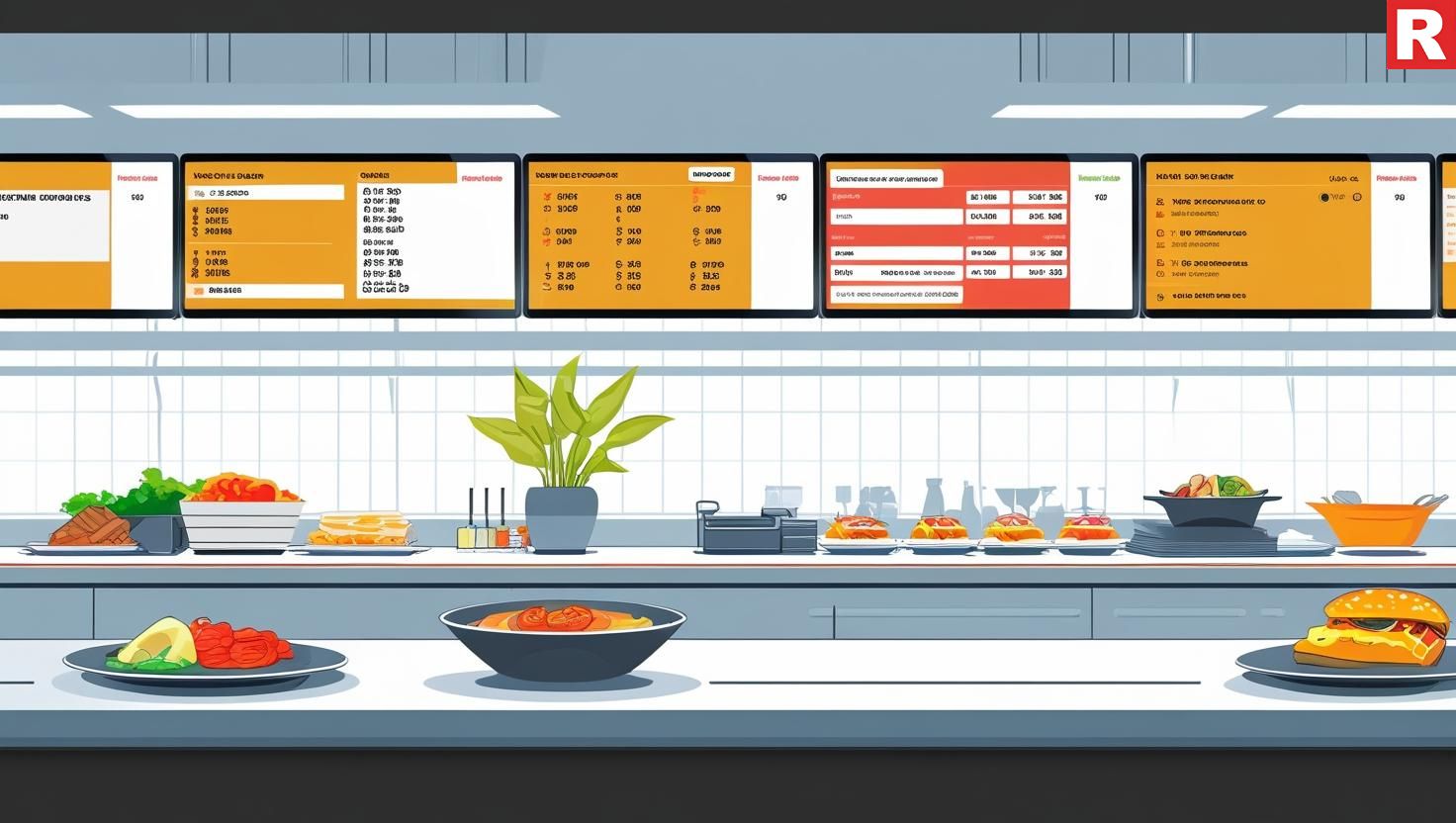
Replacing traditional paper tickets with a Kitchen Display System (KDS) can improve your kitchen's efficiency and accuracy.
Benefits for Your Restaurant:
- Clear and Organized Order Flow: Display orders digitally on kitchen monitors to eliminate messy paper tickets and improve order visibility.
- Reduced Errors: Ensure order correctness and reduce miscommunication between front-of-house and kitchen personnel.
- Improved Speed and Efficiency: Simplify order preparation, track cooking times, and coordinate order fulfillment to provide efficient service.
- Real-Time Order Status Updates: Give front-of-house employees real-time updates on the status of each order.
- Data on Kitchen Performance: Monitor kitchen efficiency, identify problems, and improve productivity.
What's new: How to open a pet-friendly restaurant in India
5. Inventory Management Software
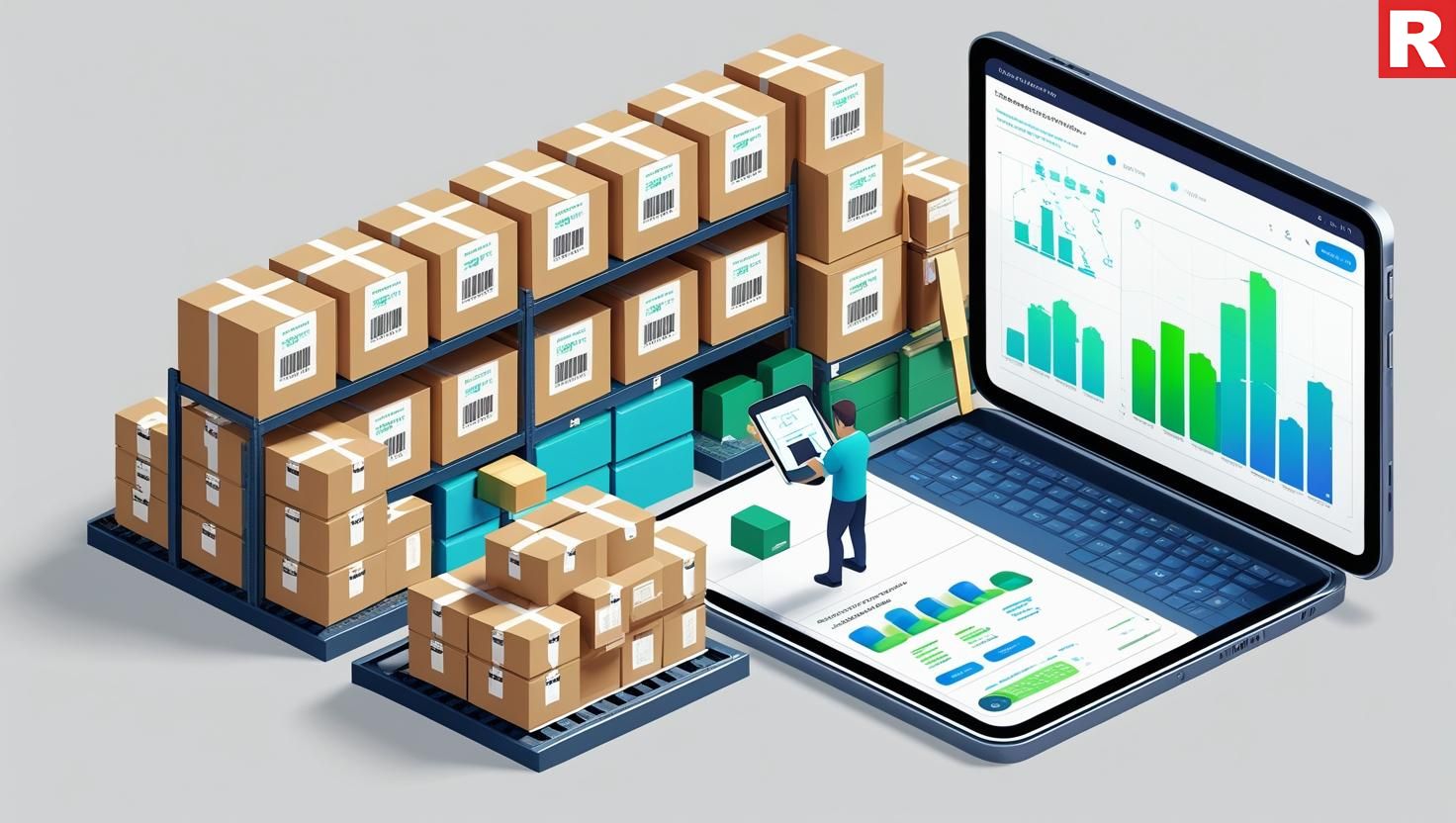
Effective inventory management is critical for minimizing costs and increasing profitability in the restaurant industry.
Benefits for Your Restaurant:
- Real-time stock tracking: It allows you to monitor ingredient levels, measure usage, and identify goods that are running low.
- Automated Reordering: Create automatic points for reordering to avoid shortages of vital supplies.
- Waste Reduction: Monitor food spoilage and waste patterns to pinpoint opportunities for improvement in purchase and storage.
- Cost Control: Improve visibility into ingredient costs, discover potential savings opportunities, and efficiently manage vendor relationships.
- Recipe Costing: Determine the exact cost of each meal based on ingredient pricing, allowing you to determine profitable menu prices.
6. Customer Relationship Management (CRM) System
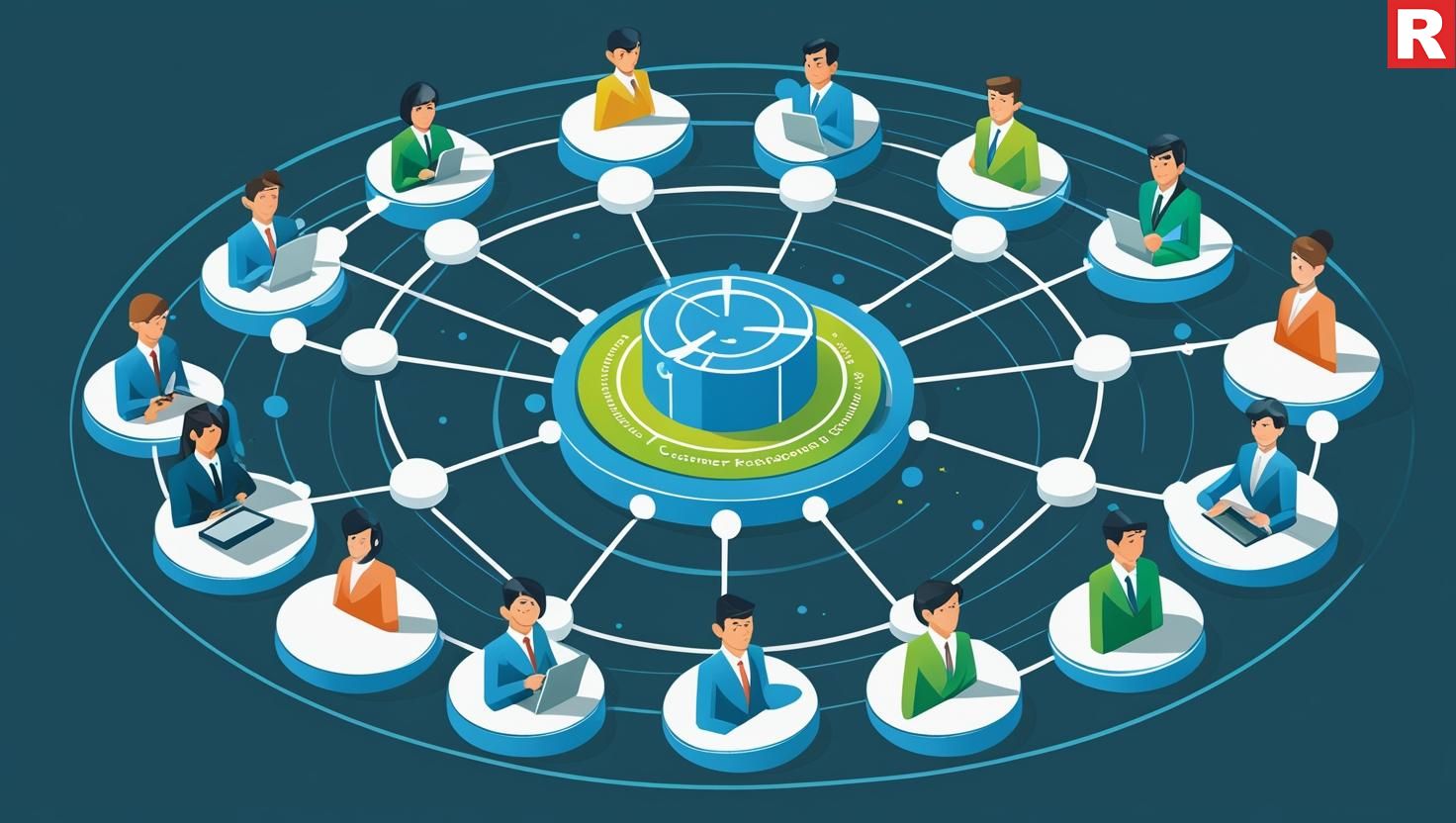
Building solid ties with your consumers is essential for long-term success. A CRM system allows you to better understand your clients and personalize their experience.
Benefits for Your Restaurant:
- Customer Data Collection: Collect information on customer preferences, order history, and contact information (with consent).
- Personalized Marketing: Create personalized email marketing, SMS promotions, and loyalty programs based on consumer preferences and previous behavior.
- Improved Client Service: Use client history to make personalized recommendations and promptly resolve any difficulties.
- Loyalty Program Management: Easily manage and track customer loyalty points and awards.
- Feedback Collection and Analysis: Collect consumer feedback via surveys and online reviews to discover areas for improvement.
7. Online Reputation Management (ORM) Tools
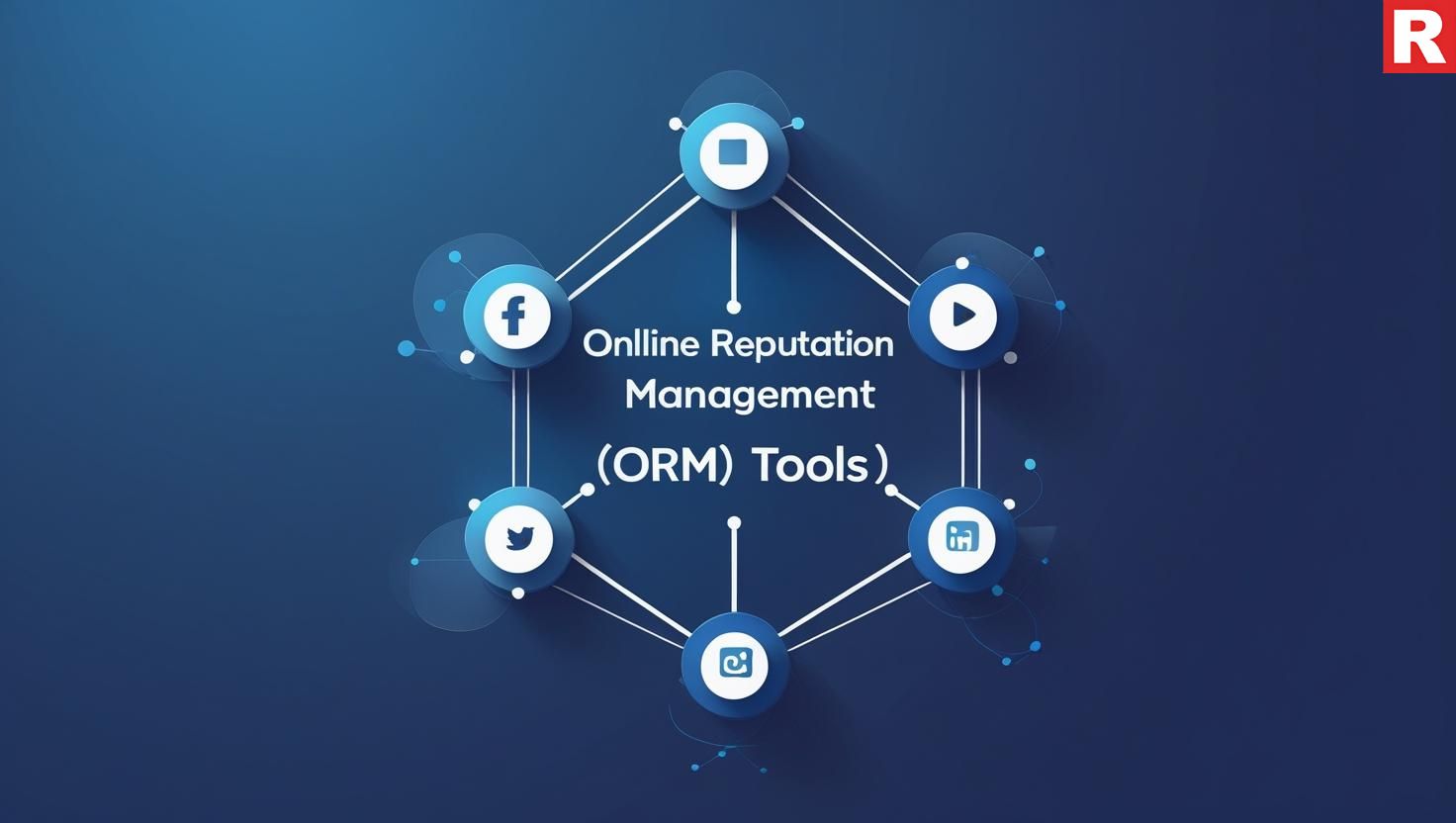
In the era of internet reviews, your restaurant's online reputation is crucial. ORM technologies allow you to monitor what consumers are saying about you and respond to their feedback.
Benefits for Your Restaurant:
- Real-Time Monitoring: Monitor online reviews and mentions on several platforms (e.g., Google, Zomato, TripAdvisor).
- Prompt Response to Comments: Respond to customer evaluations and issues in a timely and professional manner, demonstrating that you respect their comments.
- Identify Areas for Improvement: Analyze client feedback to identify areas where your restaurant can improve its food, service, or ambiance.
- Create a Good Online Presence: Actively manage your online reputation and encourage good feedback.
- Competitive Analysis: Analyze your competitors' web reviews to determine their strengths and weaknesses
Check out: What Type of Water Do Restaurants Prefer to Serve?
How to Source Local Ingredients for Your Indian Restaurant Menu
8. Digital Menu Boards
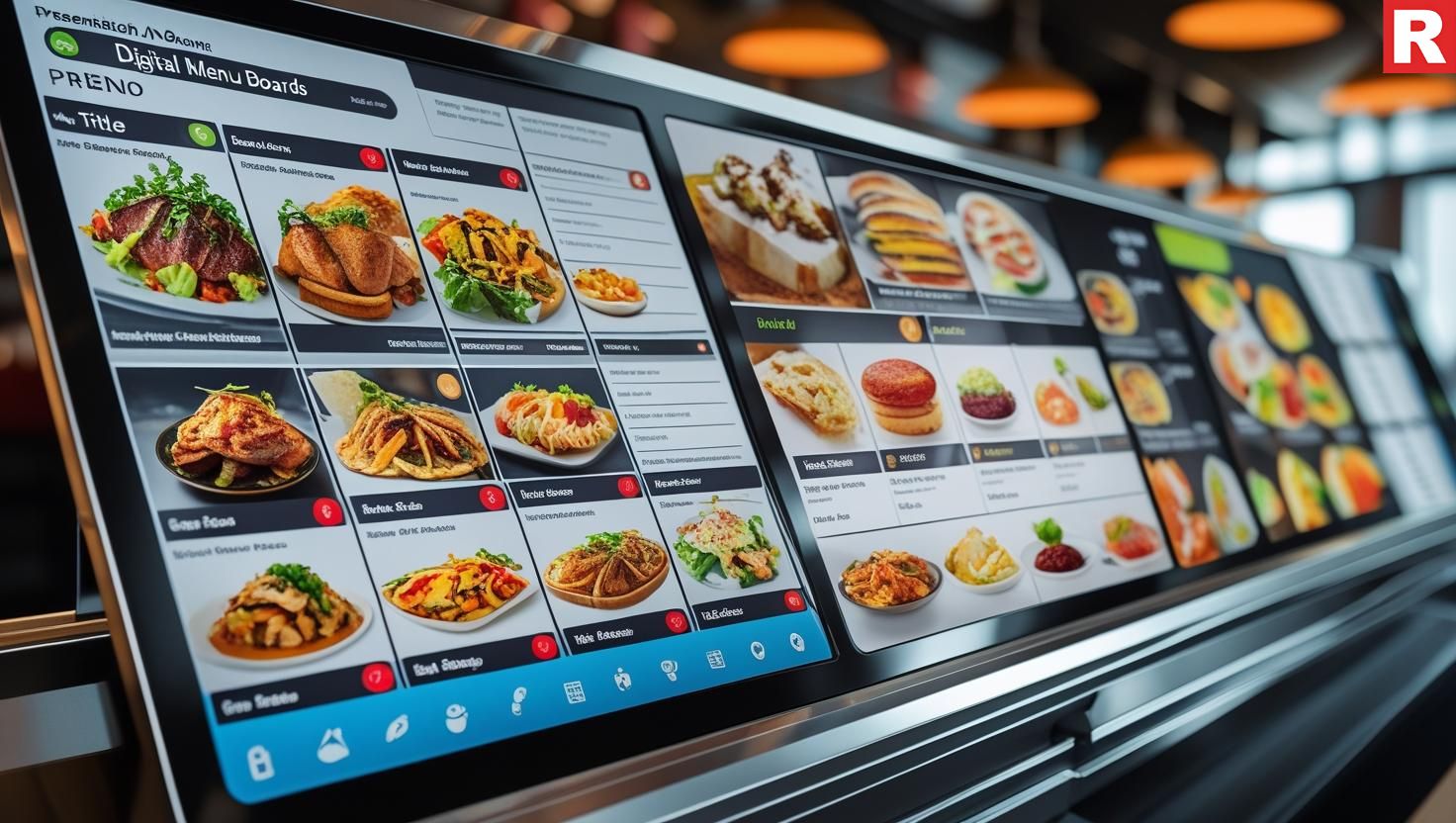
Replacing traditional static menu boards with LCD screens has various benefits.
Benefits for Your Restaurant:
- Dynamic Content: Easily change menu items, prices, and specials in real time without the expense and inconvenience of printing new boards.
- Visually Appealing Presentations: Use high-quality photographs and videos to highlight your meals and attract customers.
- Promotional Opportunities: Emphasize daily specials, specialty dishes, and seasonal items prominently.
- Cost Savings: Eliminate the endless costs of printing and updating traditional menus.
- Flexibility for Different Dayparts: You may easily switch between breakfast, lunch, and dinner menus with a few clicks.
9. Staff Communication Tools
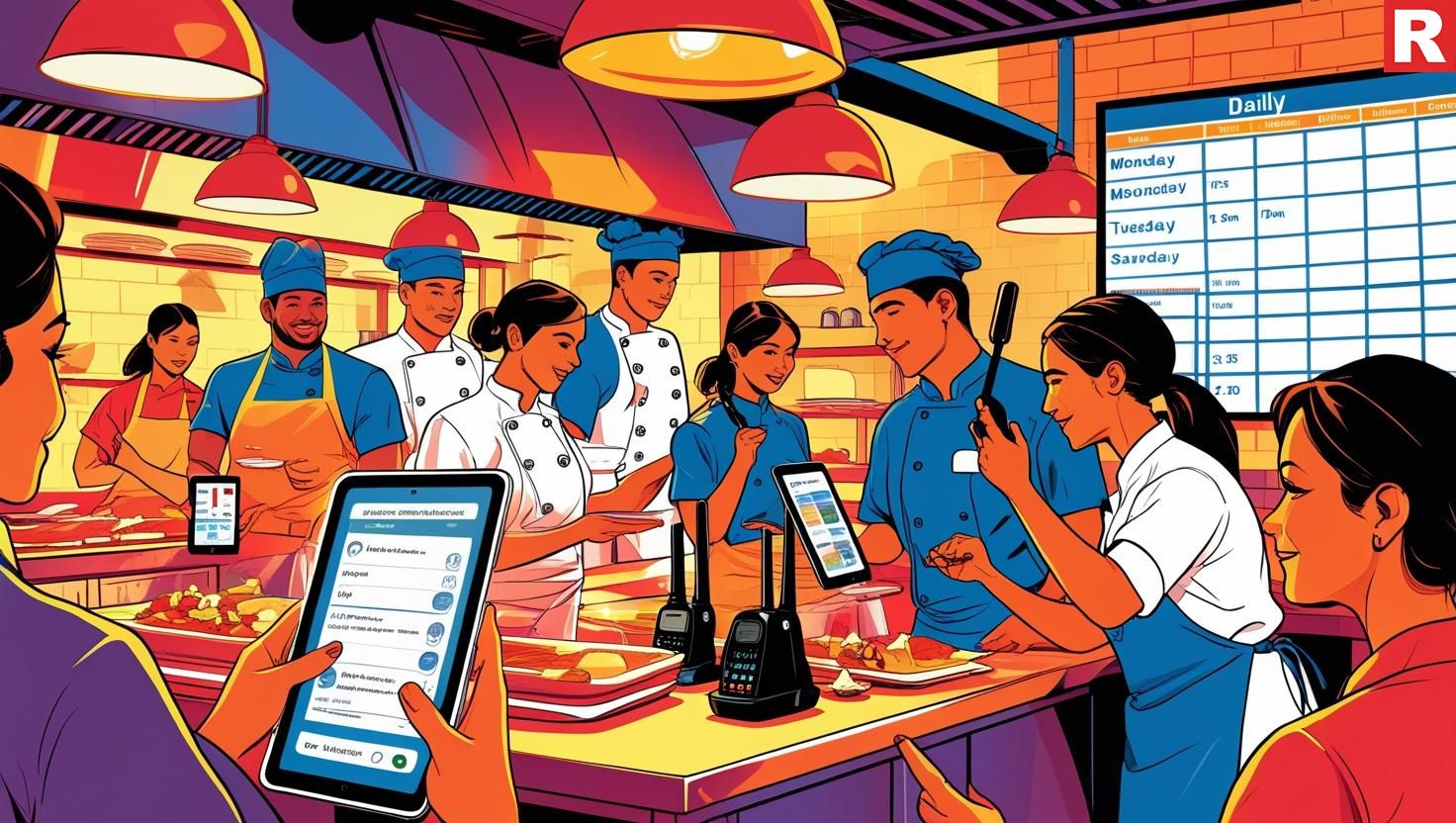
Efficient communication among your restaurant's employees is critical for successful operations.
Benefits for Your Restaurant:
- Real-time messaging: It allows for rapid and easy communication between the front of house, kitchen, and management.
- Order Status and Notifications: Keep employees updated on order status, table readiness, and customer requests.
- Task Management: Assign and track tasks efficiently to ensure that everything goes well.
- Reduced Errors and Miscommunications: Increase clarity and reduce misconceptions among team members.
- Improved Teamwork and Efficiency: Promote enhanced cooperation and a more efficient workplace.
10. Mobile Payment Solutions
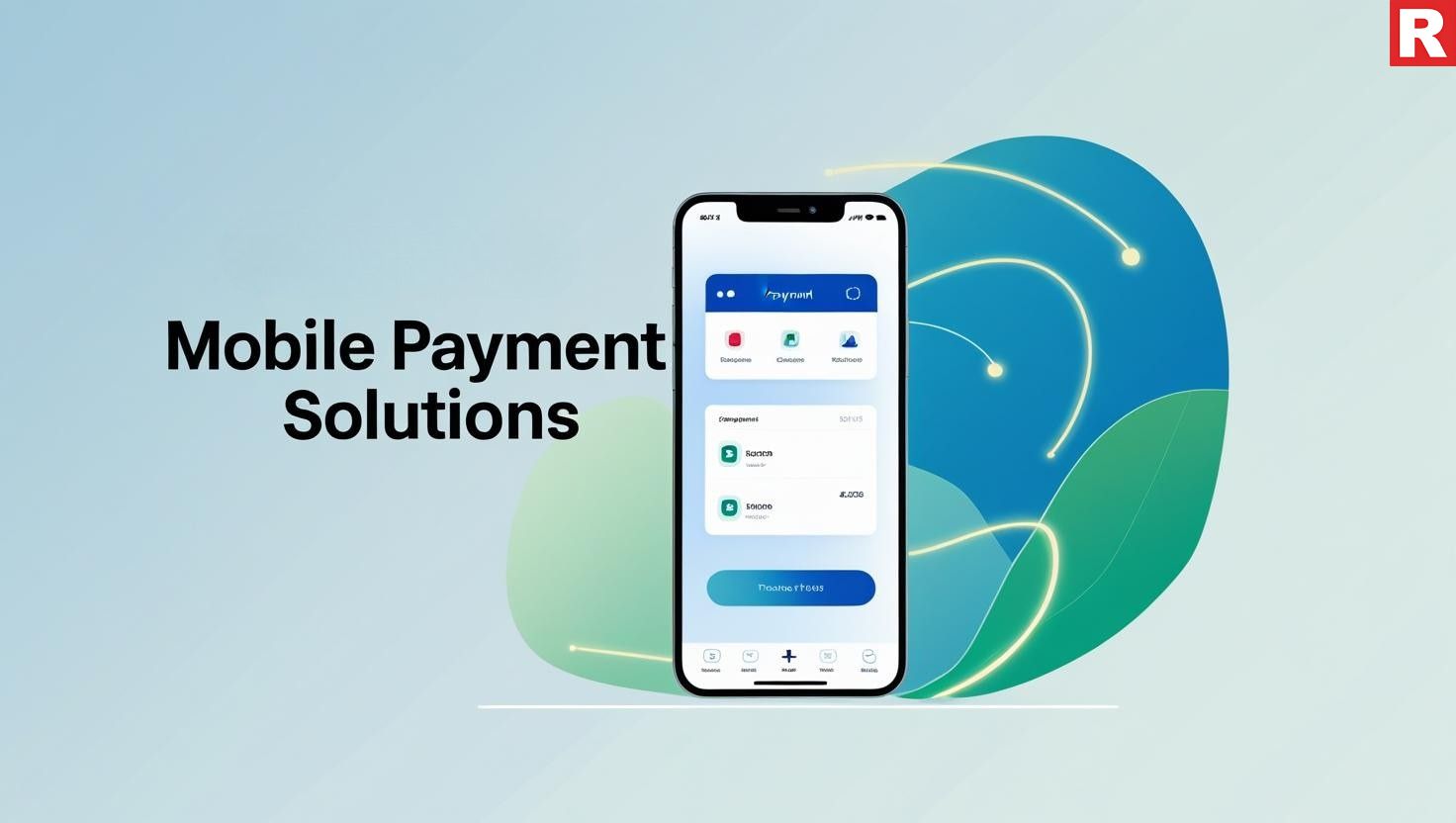
Offering a range of mobile payment methods responds to your consumers' changing demands.
Benefits for Your Restaurant:
- Convenience: Allow clients to pay with their favorite mobile wallets (Paytm, PhonePe, Google Pay), QR codes, and contactless payment methods.
- Faster Transactions: Shorten the payment process, lowering wait times and increasing table turnover.
- Reduced Cash Handling: Reduce the dangers and complications involved with managing large sums of cash.
- Improved Hygiene: Contactless payments provide a safer and more sanitary payment method.
- Data Collection on Payment Preferences: Learn how your consumers want to pay so you can optimize your payment infrastructure.
Read this: 10 Fastest-Growing Alcohol Brands in India’s HoReCa Sector
Conclusion
To summarize, for restaurateurs, adopting these top ten key technologies is no longer a distant goal, but a strategic need for navigating the new culinary setting. Investing in a strong POS system, online ordering capabilities, efficient kitchen management tools, and effective customer engagement platforms can help you simplify your operations, improve customer satisfaction, build a stronger brand, and achieve long-term growth and profitability in the vibrant restaurant industry. Your restaurant's future lies in the smart and strategic use of technology that feeds both its flavors and its efficiency.

Your restaurant’s Point of Sale (POS) system is more than just a tool for billing—it’s the central hub for managing orders, tracking inventory, processing payments, and streamlining daily operations. In today’s fast-moving food and beverage industry, every second counts. An outdated or inefficient POS system can slow down service, create errors, and damage your customer experience. If your system lags during rush hours, lacks integration with delivery platforms, or fails to provide accurate data, it’s not just inconvenient—it’s costly.
Imagine losing orders during peak dinner hours or having staff spend extra hours reconciling inventory manually. These small inefficiencies quickly add up to lost revenue, unhappy customers, and frustrated employees. The right POS system should make operations smoother, not harder. It should support your growth, offer real-time insights, integrate with third-party platforms, and improve service speed. If your current setup feels more like a problem than a solution, it might be time to make the switch. In this article, we’ll explore five signs that your restaurant needs a new POS system—and how to choose the right one for your business.
Read more: 10 Effective Tips for a Chinese Restaurant Menu Card Design
High Protein Indian Meals You Should Try
1. Your POS is Slower Than a Monday Lunch Rush
Speed is everything during peak hours. If your staff has to wait for the system to respond, it’s slowing down your service. That means longer queues, annoyed customers, and lost orders. Many restaurants still use legacy systems that freeze, crash, or lag, especially when the restaurant is full. This not only frustrates the staff but also affects the guest experience. In one restaurant in Delhi, a five-minute POS delay during a Saturday night dinner led to a lost Zomato order worth ₹3,000. Situations like these hurt revenue and reputation. If your system takes too long to load, crashes often, or needs constant rebooting, it’s time to upgrade.
2. It Doesn’t Play Nice With Others
A modern restaurant needs more than just a billing system. It needs smooth integration with food delivery apps, payment gateways, loyalty programs, CRMs, and inventory tools. If your POS doesn't support integrations, you’re likely managing everything manually. That means higher chances of errors, time-consuming processes, and double the work for your staff. For example, a Bengaluru-based café had to update its Swiggy and in-house menus manually on two different dashboards. After switching to a POS that auto-syncs all platforms, their staff saved three hours a day. A good POS system should be the control room of your restaurant—handling every system and platform in one place.
Know more: How Cloud Kitchens are Disrupting the Indian Restaurant Industry
3. Reporting Feels Like Solving a Rubik’s Cube Blindfolded
If your POS system doesn’t give clear and quick reports, you’re flying blind. You need real-time sales data, order reports, staff performance, and inventory levels to make good business decisions. Old POS systems often show confusing or limited data. Some only offer end-of-day reports. Some don’t even break it down by product or staff. One restaurant owner in Mumbai said he couldn’t track what dishes sold the most because his POS didn’t offer category-level reporting. After moving to a cloud-based system with smart analytics, he noticed his highest-selling dish was underpriced, and increased profits by 12% with one pricing change.
Better reporting = better decisions = more profits.
4. You’re Paying Too Much, But Getting Too Little
Many outdated POS systems charge high monthly fees but offer limited features. If you’re paying for basic billing and manual reports, you’re not getting full value. Some POS systems also have hidden charges for software updates, customer support, or integrations. Modern POS solutions offer much more—mobile access, real-time updates, integration, cloud backup, and support—at lower or transparent pricing.
For example, one restaurant in Pune was paying ₹5,000/month for a POS system with no online ordering sync. After switching to a newer system at ₹3,500/month, they got integrated online orders, inventory tracking, and loyalty program support—all in one dashboard. Always check if you're getting value for your money.
5. Your Team Secretly Hates It (And So Do You)
A complicated or clunky POS can lead to staff errors and high training costs. If your team avoids using certain features or complains often, that’s a red flag. Modern POS systems are designed with user-friendly interfaces. They have clean layouts, drag-and-drop menus, and easy-to-navigate dashboards. This reduces training time and allows your team to focus more on service. One newly opened restaurant in Jaipur had to spend 10 days training its staff on an outdated system. After switching to a modern POS, training time dropped to 2 days. If your team finds the system hard to use, it’s slowing down your business.
How an Outdated POS Can Burn Your Profits
Your Point of Sale (POS) system should make operations smoother, not harder. If it’s outdated, it likely slows down service, leads to billing errors, and frustrates your team. These issues don’t just impact your staff—they directly affect your customers. In a fast-paced restaurant environment, even a small delay during peak hours can lead to poor reviews and lost sales. Over time, these silent losses add up and hurt your bottom line. A modern POS system improves speed, reduces errors, and supports your team with better tools. Upgrading isn't just about technology—it’s about protecting your profits and customer experience.
Also check: 12 Delicious High-Protein Foods to Eat Daily for a Healthier You
Fine Dining Plating: 12 Essentials That Elevate Every Dish
How Many Orders Are You Losing Per Minute?
If your Point of Sale (POS) system can’t keep up with the speed of your orders, you’re losing both time and money. Whether it’s a walk-in customer or a Swiggy order, every second counts in the restaurant business. Delays in processing or sending orders to the kitchen can lead to slower service, unhappy customers, and lost revenue. A modern POS system supports real-time order tracking, instantly updates the kitchen, and can even notify customers when their food is ready. This level of efficiency not only speeds up operations but also improves customer satisfaction. The faster your system, the more orders you can handle—and the more satisfied guests you’ll serve. In short, speed drives success.
Why a Modern POS Should Be Your Best Side Dish

Here’s what a good POS should offer:
- Cloud-based access
- Mobile/tablet compatibility
- Real-time inventory updates
- CRM and loyalty features
- Integration with online delivery apps
- Offline functionality for power cuts or poor Wi-Fi
- Simple, clean UI
- 24/7 customer support
These features don’t just make your life easier. They improve your brand’s service quality and consistency.
Check more: Grilling 101: Everything You Need to Know to Master the Grill
Top 7 Food Safety Practices Every Restaurant Should Follow
What the New-Age Restaurant System Looks Like
Old POS:
- Heavy desktop machine
- Works only on-site
- Manual backups
- Minimal data
Modern POS:
- Works on mobile, tablet, and desktop
- Access from anywhere
- Real-time backups on the cloud
- Deep insights and smart analytics
Making the switch doesn’t just solve problems—it gives you new tools to grow your business.
Time for an Upgrade? Here’s What to Look For
When choosing a new POS system, make sure it is:
- Cloud-based and accessible from anywhere
- Easy to learn for your team
- Capable of integrating with your existing tools
- Secure and regularly updated
- Backed by responsive customer support
- Offering detailed sales and inventory reports
You’re running a fast-paced restaurant. You need a system that can keep up with you.
Final Thoughts
Running a restaurant comes with daily challenges, but your Point of Sale (POS) system shouldn’t be one of them. If your current system is slow, outdated, hard to use, or costly without delivering real value, it’s probably doing more harm than good. A modern POS system can speed up service, cut down on errors, offer real-time insights, and even help boost your profits. It integrates smoothly with delivery apps, tracks inventory automatically, and simplifies staff training. Pay attention to staff feedback and performance data—they often reveal what the system lacks. If your POS is slowing your operations or frustrating your team, it’s time to move on. Choose a system that supports your growth. Your restaurant deserves better tools.

In the dynamic world of food and beverage business, especially restaurant business where taste matters the most and the experience lasts longer, the role of emotional intelligence cannot be over ruled.
Today, restaurants are not just limited to serving a good food and delivering an everlasting experience, it also involves a deeper connection, empathy and an understanding of what they require. And, that’s where Emotional Intelligence enters into the picture by transforming a good service into a wow! Experience.
What is Emotional Intelligence?
Emotional intelligence refers to the collection and analysis of data on food consumption, preferences, and trends to gain insights into consumer behavior and the food market as a whole.
It encompasses understanding the journey of food from farm to fork, including production methods, supply chain logistics, and sustainability practices. By leveraging technology such as big data analytics and artificial intelligence, Emotional intelligence helps businesses make informed decisions about product development, marketing strategies, and inventory management, ensuring that consumer needs are met efficiently and effectively.
Creating a Personalised Touch
From a warm welcome at the door to the personalised touches throughout dining, every interaction is packed with warmth, attention to details, leaves guest not just feel satisfied but valued in a long run.
“With Emotional intelligence, restaurants can create customized menus based on customer preferences. For instance, by analyzing data from online ordering platforms or loyalty programs, they can identify each customer’s favorite dishes and make menu recommendations tailored to their tastes,” shared Chef Dheeraj Mathur, Cluster Executive Chef, Radisson Blu, Kaushambi, Delhi NCR.
Commenting on the same, Gopichand Cherukuri, Co-Founder, ICB, pointed that, “For centuries food or beverage has always been an emotional need as much as they are functional need. So it's quite important for brands to understand the customer's mood, preferences and what enables them to make certain choices.”
He also mentioned that a recent survey in Bangalore shared that more than 65% of the customers prefer personalization. “We are not just catering to their functional needs, emotional needs are also equally important for them to decide on where to dine, what to consume. So, emotional intelligence plays a vital role, mapped to the data. And the best part is, AI is a great help in this regard. And ICB is working towards this development to delight our customer base,” he further added.
Sharing a similar insight, Aji Nair, CEO, Mirah Hospitality shared, “Prioritising guest preferences is both a science and an art. It is about knowing what the guest wants—even before they do. Restaurants today blend data analysis with a human touch to anticipate preferences. By tracking dining patterns, guest feedback, and emerging food trends, we create menus that resonate with our customers. But beyond data, it’s the art of reading the room—understanding a guest’s body language, mood, or subtle cues—that allows us to personalize their dining experience. The right mix of insights and intuition helps us craft meals that feel both thoughtful and memorable."
Helping Menu Design
Staying ahead of emerging trends, fluctuating consumer needs, and tastes is essential for success. One of the crucial aspects of adapting to this is effective menu planning, which involves creating innovative, appetizing, and visually appealing dishes that cater to a diverse clientele.
“Our commitment to sensory-driven innovation—whether through umami-rich ingredients, natural sweeteners, or immersive tableside finishes - ensures that every dish tells a story and every meal becomes an experience to remember. In a city where food trends evolve rapidly, we stay attuned to local tastes and global influences, creating meaningful connections through food that touches the heart as much as it delights the palate,” pointed Gagandeep Singh Sawhney, Executive Chef & Culinary Centre of Excellence Cuisine Specialist, MEIA Region at Shangri-La Group.
By using the power of real-time analytics, data-driven insights, and artificial intelligence, Emotional intelligence is transforming the way culinary professionals approach menu planning.
"The dining experience extends beyond food—it’s about forging emotional connections. At Hitchki, emotional intelligence is integral to menu development, allowing us to craft offerings that resonate deeply with our guests. By decoding moods, nostalgia triggers, and cultural influences, we design menus that evoke comfort, excitement, and curiosity. Whether it’s curating seasonal specials that spark memories or reinventing flavors to align with evolving preferences, our approach ensures every dish feels both personal and refreshingly innovative,” added Nair.

When it comes to creating, growing and sustaining a successful restaurant business in this era, brands will have to tap AI to drive expansion, success and establish strong leadership to survive difficult times.
Over the last 2-3 years, AI has not just helped enhance the customer experience but has also reduced operational costs for some of the top global chains that have adopted AI and Emotional Intelligence early into their business.
“AI over the recent few months has significantly helped GOPIZZA to reduce its operational costs by helping us with innovative solutions across departments. From tracking inventory for timely shipment, automated POS systems for taking orders and understanding customer order pattern, AI driven GOVEN and GOBOT which helped us with training and SOPs to ensure consistent taste of our pizzas, effective manpower shift planning so that our team is not overburdened to accurate sales forecasting for reducing food wastage and efficient use of resources,” shared Mahesh Reddy, CEO, GoPizza India by adding that AI is playing a very important role in the restaurant industry today.
Not only this, restaurants are heavily investing in technology and hiring people to look after the same. And, these teams are adopting tools rooted in artificial intelligence to better control their operating costs, undertaking initiatives that will continue to pay benefits no matter how economic conditions unfold.
From automating work, to helping in understanding the customer mind better and driving growth, AI is helping saving the costs associated with the inventories and labor.
“AI has unlimited potential to automate tasks across industries, and while we’re in the early stages of its integration, its impact is already evident. The computing power exists, but customized applications are still evolving. At Burger Singh, AI is enhancing efficiency and cutting costs,” pointed Rahul Seth, Co-founder, Burger Singh.
One major development in AI is the emotional intelligence via chatbots and voicebots that manages customer query by eliminating the extra workforce that earlier use to manage and look after the data that came from the customers.
“Chatbots and voicebots manage customer queries and franchise leads, reducing manual effort. AI-driven analytics optimize call-center performance, improving conversions and sales. Additionally, AI streamlines operations and enables smarter, data-backed decisions,” added Seth by mentioning that though the full-scale automation is still ahead, but AI is already transforming the food industry, driving productivity and cost efficiency.
Similarly, Blue Tokai has partnered with Umwelt.AI’s intelligent platform for deeper workforce insights, enabling timely actions based on employee feedback. By streamlining HR processes, measuring engagement more effectively, and personalizing employee interactions, the collaboration aligns with Blue Tokai’s commitment to building a high-performance, people-first work environment.
“Our vision has always been to create a workplace that fosters growth, inclusivity, and well-being. Partnering with Umwelt.AI gives us the opportunity to take a much more proactive and tech-driven approach to employee experience, ensuring our teams really feel valued and empowered. This will reflect our commitment to innovation not only in coffee but also in our workplace culture,” said Sujit Bose, Chief Human Resources Officer at Blue Tokai.
And, hence, restaurant operators should view today’s inflationary habitat as an opportunity to pause and take a closer look at their operating costs to identify areas to reduce expenditure. Meanwhile, restaurant that will adopt AI technology to reduce their operational costs rather than investing heavily will definitely grow and position themselves as one of the top brands getting loyal and regular customers.

Head of Brand and Marketing, Mirah Hospitality Sep 24, 2024 / 7 MIN READ
Over the past decade, dining has been transformed by technology, revolutionizing everything from reservations to payments. The shift from paper menus to digital formats, accelerated by post-COVID safety standards and customer preferences, has streamlined operations and enhanced the dining experience. Digital menus now offer guests instant access to detailed descriptions, images, and allergen information through a simple QR code scan, enabling direct ordering and easy digital payments—all from their smartphones.
This shift towards transparency and convenience has empowered customers to make informed choices, enhancing overall satisfaction. Additionally, the adoption of digital menus has proven cost-effective for restaurants, reducing the need for printing and reprinting physical menus and promoting hygiene by minimizing contact points. The environmental benefits are equally significant; the reduction in paper usage aligns with the growing emphasis on sustainability within the hospitality industry.
The rise of delivery apps has further revolutionized the dining experience. Technology now places the best restaurants in the city right in the palm of your hand. Whether you’re craving a wood-fired pizza or a flavourful biryani, these apps deliver piping hot meals from your favourite establishments directly to your home. They also cater to late-night cravings, ensuring access to delicious food without stepping outside your house.
While technology has undoubtedly enhanced the dining and delivery experience for customers, it has also significantly improved operational efficiency for restaurants. Running a restaurant involves managing a multitude of tasks, from finances and inventory to overhead costs and employee satisfaction. Technology has become an invaluable asset in this regard, simplifying complex processes and enabling smoother operations. Imagine smart refrigerators that alert chefs when ingredients are running low or need to be discarded, or intelligent ovens that adjust temperatures based on the specific dish being prepared. From multi-functional cooking appliances to automated, AI-powered kitchen equipment, modern technology has made restaurant kitchens smarter, allowing restaurateurs to deliver quality service more efficiently.
Technology also plays a crucial role in customer engagement, helping restaurants identify and respond to customer preferences. Through data analytics, restaurants can track peak times, popular dishes, and loyal customers, allowing them to tailor dining experiences and foster customer loyalty.
Training and development have also benefited from technological advancements. Virtual reality (VR) and augmented reality (AR) technologies enable chefs to teach new culinary techniques and provide comprehensive kitchen training remotely. These technologies can also be used to create immersive dining experiences, allowing customers to feel as if they’re dining in Madrid while seated in Mumbai.
Looking ahead, technology promises to further enhance the dining experience. Innovations such as 3D food printing are already a reality and could soon become commonplace in restaurants. With advancements in robotics, we might see a future where restaurants resemble a scene from a science fiction movie, although the human touch will remain irreplaceable. Self-order kiosks are increasingly prevalent in quick-service restaurants (QSRs) like McDonald’s and Taco Bell, reducing the need for queues and enhancing the efficiency of service. The ongoing AI boom is also driving sustainable practices, with innovations like hydroponic gardens allowing restaurants to grow fresh herbs right in their kitchens.
In conclusion, the future of dining looks incredibly promising, not just because of the food but because of the technological innovations that continue to redefine our culinary experiences. The next time you dine out, take a moment to observe the subtle yet profound ways in which technology is reshaping the dining landscape, offering a glimpse into the future of gastronomy.

Bengaluru as a city has given many firsts to the Indian dining and delivery scenes. From being the first city to accept the global flavours to becoming the largest nightlife and brewery hub, it was also the first cosmopolitan city to accept the delivery and cloud-kitchen model in the country. From brands like Empire that is running the business from last six decades starting the delivery model to Freshmenu becoming one of the first brand to experiment with cloud kitchen model, we have seen and witnessed many firsts in the city. Now, that we see brands and restaurants are looking at giving an omni-channel experience to their customers by being available on both the platforms and models, we can surely say that going forward ‘phygitisation’ will surely be the keyword in restaurant and dining space.
Recently, Restaurant India hosted its Bengaluru Edition of the Restaurant India Conference Awards on 1st May at Sheraton Bengaluru, where it discussed and talked about being omni-channel. Here are key highlights from the session:
Focusing on Consistency: “Today, for any restaurant business, the biggest challenge is handling people, labour. And we see technology already replacing humans at countries like Korea, Singapore and others. Though in India, the labour cost is not as high as other countries but the consistency is a challenge as you expand. So, consistency has to be taken care of and that was the prime objective on how do we take care of this by using technology,” shared Mahesh Reddy, CEO, GOPIZZA India that invested a lot in the backend technology to focus on consistency, standardisation of the product. Today, the brand has 50 outlets and are looking at 100 outlets by this year end.
Automation is Important: “We are helping our partners For any biz, if you have acceptable product, price and profit and that’s when we say it’s a sustainable, profitable model. The most important thing we follow is the collaboration. We are not directly involved with customers but QSR partners and understanding what consumer is asking for,” pointed Sumit Nair, GM, IFFCO Group that is focusing a lot on automation by technology and embibing it in becoming a great product company. The brand has also minimised human intervention by using automation.
Relying on Data: “Some of the things that we as a company do is to enhance the online ordering experience for the customers and data has allowed us to do way better in terms of managing consumer timelines, restaurant cancellations, menu availability, forecasting orders and what should you be prepared of because you have a pattern of orders and acceptations and I think the use of data in combination with learning over the years has helped us optimise the online customer experience,” mentioned Rashmi Daga, Founder, Freshmenu.
Accessibility is the Key: Empire is a brand that is there in the business for almost six decades now. “We always want to be recalled and we serve a very neutral rather a habitual cuisine. So, we have a certain key factors that Empire is always accessible to its customer,” shared CEO, Shakir Haq of NKP Empire Ventures as it was as early as in 2007 that they introduced the home delivery at that time, having their own bikes, riders. “We went investing in right ways in technology, various systems, and processes. So, today omni-channel is the strategy for the older brands,” he added as they have now entered into the cloud kitchen segment with their brand Easybites by Empire.
Collaborating for Growth: “Our aim is product innovation and innovation by application. We are collaborating with restaurant chefs to create unique recipes and consistency in the products. Our focus is always to work closely with restaurant partners to create standardisation and consistency in the product,” added Jaineet Kalra, Key Account Manager- South, Nestle Professional.
Innovation is Constant: “At Sheraton, innovation is constant for us. Health comes in picture first of all, giving the variety is the other important thing as we have eight FnB outlets and we also accept every customer and believe in creating experience,” concluded Mahesh Padala, Culinary Leader & Director of Operations, Sheraton Grand Bangalore Hotel at Brigade Gateway.

QSR or Quick Service Restaurants are the fine dining options for the Gen Z—who are always on the move – be it with career or food, thus creating a multi-million-dollar business opportunity. According to credit rating agency ICRA, the industry is expected to grow by 20-25% in FY2024 in India, on account of steady demand uptick and increasing penetration driven by a rapid expansion of stores. India currently has 428 functioning QSR brands, and in the last two years, this segment has attracted investments worth $1.3 billion through 64 deals. As QSR the industry charts out its growth path, technology is slated to create a 360-degree impact on the way this industry operates.
Traditionally built on a strong technology foothold, the QSR industry is intensive users of tech-powered production techniques, information and communication resources, smart logistics, marketing avenues, and sound e-commerce technologies. Separately to manage the backend integration of accounts and frontend vendors, technology is the only way that offers affordable solutions to the QSR outlets.
Where is QSR using the Tech
The tech-savvy users have created a demand for the most recent technologies to be adapted for raising footfalls, creating campaigns, and raising the firm’s profitability. Today tech-equipped fast-food facilities likes enhanced services, tech-driven food ordering, and traceable food delivery.
QSR owners are looking for new and innovative ways to deal with the waste product generated out of the outlets to managing the supply chain. Speed, convenience, and value are the three points that are driving the tech adaptation and demand for more.
Moreover, Generation Z and Millennials –both groups are now craving and demanding technology-centric dining experiences--both groups expect technology to be a part of their dining experience, even if it is something as basic as free wi-fi. The basic function of technology in QSR is to improve the customer experience along with increasing operational efficiency. Thus, the technologies being pursued could be considered more evolutionary rather than revolutionary.
Emerging Usages
Voice Ordering- in line with Amazon Echo and Google Home is the next big thing to impact QSR segment. Robotics like Chatbot Sally, the Salad Robot are expected to be the future whereas Artificial Intelligence rightly deployed, is an anticipated tool that will help businesses predict footfalls and demand –thus leading to efficient business management. AI business intelligence tools forecast industry shifts and help make proactive changes to the company’s marketing, merchandising, and business strategies. This impacts supply chain planning, as well as pricing and promotional planning.
Similarly, kiosk is a concept that has been adapted by QSRs, who are now investing in improving the customer experience along with streamlining their employee task. As per the latest research conducted on the QSR diner, 47 per cent of them preferred to opt for a self-service technology such as a kiosk for customising their orders. The kiosk is ultimately the new-age technology that can help firms manage their workforce by reassigning employees to more value-added tasks like ensuring happy customers and improving their experience.
Likewise, at the backend digital food safety measures are helping avoid food safety disasters. Digital tools help restaurant owners serve fresh food with quick temperature probes, automated temperature monitoring, and food and date labelling. Digital food safety helps restaurants be compliant. Technology in food packaging has revolutionized the shelf-life of food industry including QSRs.
The deployment of chatbots helps the QSRs to manage the payment received from various channels for tax and receivable’s purposes. As payments are received through multiple channels like banks, cheques, Paytm, Bhim Pay, Phone Pay, Cred, and many others --- it needs dedicated software to organize and account for the money
Summing Up
As QSRs are fast-moving eateries, it is pertinent that they have to be efficient in order to survive. Technology at all levels—chatbots for accounting to AI for business predictions to food safety measures all are functions of Smart Tech in today’s world—not to mention tech-enabled quality maintenance and inventory management. Infrastructural investments like Smart supply chains and automated sensor-driven food displays will become the future of every food industry.
Choice and deployment of ‘Competent Technology’ is going to be the next phase of the challenge with too many tech choices for the business owners for distribution, product line maintenance, and customer experience. As the backend integration of payments and receivables continues through smart bots, it will leave a fairly good time for business owners to focus on customer experience and comfort, thus ensuring business expansion.

With the rise of digital commerce and the demand for a frictionless omni-channel dining experience, the market is going through various modifications and customer needs are evolving rapidly. To ensure that restaurants are fully equipped to be able to compete for their loyal clients in the digital realm, today's restaurant ecommerce platforms are becoming more digitalized. The digital solutions are blending in with traditional business practises with ease, and this digitalization strategy has empowered the restaurant space in India.
The concept of digitally empowered restaurants is business centric, designed keeping in mind the needs of business owners in mind. The use of digital solutions is helping businesses grow and streamline their operations, further enabling the restaurants to achieve greater success. Digital solutions are partially automating corporate operations, enhancing their efficiency and minimizing any room for human error, which is crucial in the modern world. It can be challenging to stay on top of the rapidly evolving restaurant technologies. However, to sustain in the domain of restaurant market, there is a rising need to adjust to the shifting trends, to stay relevant and viable in the larger industry.
Globally, the restaurant management software market size value is expected to reach around 7 billion dollars by 2025. These statistics by the Grand View Research show that the industry is growing rapidly and therefore, restaurants feel the need to invest in similar solutions. Today restaurants acknowledge that the POS system improves business efficiency and it cuts other operational costs increasing customer experiences all together. The new technical software consists of assisting restaurants in managing orders, operations, online deliveries, payment processing, reports and analytics, guest identification, re-engagement and much more, all through the use of ‘one-system.’
Top Tech trends that will dominate the restaurant industry in 2023 include:
Digital menus and ordering: When we talk about digital menus, we are not talking about PDF menus or image-based menus but actual digital menus that enable customers to be able to place orders at their convenience without depending on a staff to attend to them. Digital menus offer agility and convenience. A well-developed digital menu provides restaurateurs the power to not only impact the customer experience and match their expectations at the restaurant, but also significantly impact the potential revenue that it can generate. Additionally, it cuts down recurring costs and enables restaurateurs to run pricing experiments with new menu items, most of which were nearly impossible before.
Unifying Digital Ordering: Restaurants can effortlessly manage their delivery orders from numerous partners using a single dashboard. It allows the restaurant to manage both in-dining and delivery orders from one page, expediting the order acceptance process when combined with programs like Bridge by Explorex.
Simplified checkout processes: The check-out procedure is another hassle and challenge for restaurant patrons. The complicated billing process leads to customers waiting up to 20 minutes just to make their payment and leave. Digital solutions come handy at times like this, making it possible for restaurant patrons to check out in under a minute, speeding up the procedure.
Technology for all: Platforms will democratise technology for eateries of all kinds and varieties in 2023. The time when only the top 5% of businesses could afford all the technological solutions that could benefit their operations is long gone. All types of restaurants will be able to utilise technology this year. Innovative revenue model will allow companies to further offer their solutions at nearly no cost while still generating good revenue thanks to innovative revenue models.
The ongoing development of technology is leading to emerging of new trends in the restaurant space. The industry will always be in demand, and with the aid of digital technologies, it will continue to expand its entire business model. Entrepreneurs in the restaurant industry are adopting cutting-edge technological solutions to grow their companies and stay ahead of the industry curve. The industry now has the chance to successfully deploy digital technologies to empower their companies and providing the push needed to strengthen the business model.

Covid-19 pandemic has given us so much to learn and adopt and among one of the changes that it has brought was the technological advancements across sectors and industries. Restaurant business that has always attracted a large number of investments and has forever been the attention point for investors and entrepreneurs has also embraced the technology like never before. When the lockdown happened throughout the country and restaurants had to shut. What they could rely was on delivery and that’s where technology played a role. Even after the opening of restaurants, the tech-experience got boosted with adoption of QR based ordering, payments, online delivery, robot serving foods and voice based ordering to name a few giving the physical experience a’phygital’ experience altogether.

To enhance customer experiences, restaurants started adopting and innovating the same with new technologies and that’s where conversational AI and messaging came into existence to take the whole experience to a newer heights. Players like Gupshup that sensed the growing appetite of conversational AI and messaging has been a key player in transforming the whole experience. As per reports, the global enterprise messaging industry accounted for 2.7 trillion messages in 2020 and we all couldn’t deny the fact that messaging is a great medium for engagement. It’s instant, and users tend to be much more responsive to messages compared to other media. They also tend to use messaging apps multiple times a day. And, that’s how they worked with restaurant industry helping transform through conversational AI and messaging.
Transforming the customer experience
“Restaurant business is all about customer experience. A lot of you run restaurant but as consumers we all will want our favourite restaurant to know a lot about us, a lot of our differences and if we are trying a new restaurant, we would not step into it if we find that the reviews or the word of mouth is negative. So, it’s really important for the restaurant business to get the customer experience right,” said Srinivas B Vijayaraghavan, VP- Marketing, Gupshup that has brands like Zomato, Radisson Group, Coffee Bean 7 Tea Leaf, Mahesh Lunch Home to name a few as key partners.
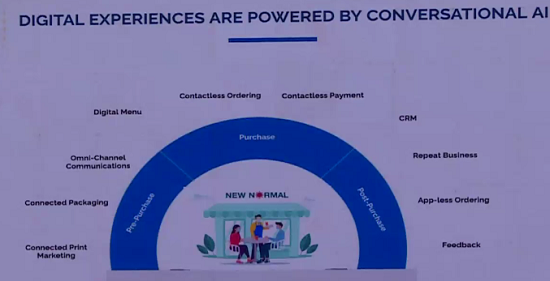
If we look at the response a restaurant get, digital experience has changed the whole ecosystem. For eg; AR Menu, app-less ordering, click-bill pay, omni-channel CRM and voice-technology has all changed the consumer behavior. “I believe that the pandemic has probably crunched may be 5-7 years of digitization cycle,” added Vijayaraghavan who believed that conversational AI has transformed the whole consumer experience. Also, if we dig deep, the nature of a restaurant owner is to converse with their customers as business has been done today or always through conversations. So, with conversational AI there is ability to completely digitalize all three facets of the restaurant business which we call as; pre-purchase where you have lots of marketing and promotions, purchase which is payments and ordering and post-purchase which is sustaining the relationship with your customer, getting them to order more frequently and getting them to provide feedback and reviews on third party and all of these can be digitized with the power of conversational AI.
How this works in action?
“Some of the important thing that you can do with conversational AI is to do personalize digital nudges to order. With this technology you can get restaurants to have a lot of personalized nudges to get an order from you online. So, you can run a sms-campaign with a link to order, you can even launch a whatsapp campaign to your data base and if you have a great following on Instagram you can also do the same with Instagram or any messaging channel where you have a great number of followers,” he added by pointing that the first application of conversational AI is to create these digital nudges to get customers to order from your restaurant.

Restaurants can also adopt these technologies at their physical outlet to make it more competent because it’s not just that the restaurant will become a cloud-kitchen overnight but will also have to enhance its physical experience like QR-based ordering and payments where customer is at the restaurant but is using the digital methods to place an order, payments etc while they are at a restaurant premises. So, once a restaurant has done the nudging, ordering etc it’s also important to continue the conversation with their customer and that’s where the real power of digital comes in/ conversational AI comes in.
Why you should invest in conversational AI?
In order to enhance the customer experience it’s very important to invest in conversational AI as it transforms the whole consumer experience. It can help a restaurant in three ways; It can help you to deliver a very personalized experiences to thousand s of customers, it is applicable to a variety of workflows and use cases in the restaurant segment and it can help you scale your business by finding new customers and support them.

In a world where physical restaurants was, by and large, shut down for months, consumer surveys have since found that many Indian consumers have gone digital, and plan to stay that way even after the pandemic eases. While many consumers believe that buying things online is faster and more convenient, they also find it safer than going to a physical store and risking COVID-19 exposure.
Restaurants like Domino’s, KFC, Pizza Hut and Wingstop are acknowledging the role that voice technology will play in the coming years and are working to make it more seamless for customers. Brands have enabled their customers to use in-app voice-activated ordering, while others have integrated with major virtual assistants — such as Cortana, Alexa or Google Assistant — to accomplish that task.
Also Read: Digital Dining: How QSRs are betting big on voice-based ordering
Tech-play ahead for Self-pickup or Home delivery
The voice based technologies are designed to cater to the end-to-end food ordering needs of customers, be it home delivery or self-pickup. Soultions like Tone Tag enable customers to pick their favourite item from their choice of restaurant, make payment online, and place an order. This seems like a regular online ordering procedure but there is a catch. The customer can do all this by simply talking to their device. The technology integrated into the device identifies the customer and the voice commands and subsequently initiates the ordering procedure. The device will place the order and even make the required payment. Simply put, a person can arrange a home delivery while driving back home and without taking his hand off the steering wheel. Similarly, a user can arrange a self-pickup at any restaurant using the same voice-based ordering system. A user has to simply speak out his order and the technology embedded into his device will identify and execute the command and place the order. The user can make the payment while placing the order using his/her voice. Upon arrival at the restaurant, the user finds his order packed and ready to go.
Though, the technology has enabled a variety of use cases through voice-based commands but the food ordering and self-pickup have created the biggest impact since it enables contactless ordering and payments while ensuring safe transactions and accurate interpretations.
The rise of digital waiters
The digital waiter is a voice and AI-driven solution that acts as a waiter and caters to the dining needs of a user. The digital waiter is a compact hardware powered by sound-based tech that is capable of intuitive interactions with the user. For example, when a person takes his/her seat at the table, the digital waiter automatically wakes up and greets the diner. It displays the menu on the diner’s mobile phone and subsequently accepts the order through voice-based commands. The Digital waiter then relays the order to the kitchen and keeps the diner company through smart interactions such as informing about order readiness etc. Once the diner is done with his/her meal, the digital waiter displays the digital bill, which the diner can pay via the in-App feature or using a voice signature. The whole dining journey with the digital waiter is completely personal, contactless, and digital. Now, it might seem that the digital waiter is eating into the jobs at the restaurant through automation and digital integration but this is not the case. The waiter is still required to serve the food and manage the restaurant physically. The digital waiter only streamlines and digitizes a diner’s experience which in turn helps the staff manage the restaurant better and serve the diner without any hassle or long wait-time.
May Interest: Why more consumers are turning to food delivery amid dining restrictions
Helping a safe and secure delivery
There’s no denying that voice-based ordering is vastly safer and convenient because it offers multiple options for the users in terms of how they want the delivery and the method of payment they are comfortable with. Our tech allows the user to either opt for home delivery or schedule a pick-up from the store. The user can pay using the In-App feature or make payments using other modes (Digital wallets, cards, etc). Suppose the user wants to order groceries from a nearby store, he/she can add items in the cart by simply speaking into their mobile phone and subsequently make the payment the same way. Now, once the cart is ready, the user can decide if he/she wants the order delivered with no-contact delivery to their home or schedule a self-pickup later in the day. The choice of self pick-up works beautifully for people who are always in a hurry, they can simply pick their packed groceries on their way back home without having to even enter the supermarket.

Why are you looking at automation? Is consistency an issue? Are you aiming at quality or a collective data? It’s important that you priortise these problems and benchmark them before you enter into the world of automation. There’s no denying that with more and more restaurants looking at expanding wings, delivery and technology changing the whole behavior of food ordering and kitchen technology, the whole world is looking at automation and kitchen technology as a much faster way to churn their table.
We all know that autonomous technology and data science has completely changed the customer experience by redefining it to altogether a different level. According to the National Restaurant Association’s 2019 State of the Restaurant Industry, a majority of consumers would like to see restaurants add more technology that improves customer service and makes ordering and payment easier. And, we have seen brands like McDonald’s, Starbucks etc including self ordering kiosks etc at their outlets that are especially located at drive-thrus or are available for a curbside pickups.
And, similarly, we saw this trend picking up in India, now that more and more home grown restaurants and technology players are trying to be the McDonald’s and Domino’s of the world, automation and IOT has played a bigger role.
“IOT, automation and robotic is big intimating words sometime but when someone ask you to associate this with kitchen automation, you probably come back and describe and image of super hi-tech convene or a belt and arm preparing your food but it is such a stereotype that automation as a whole has got this notion of being super complex and extremely capital extensive. Automation doesn’t necessarily is always equal to robotics. Robotics might be a sub set of automation but the way we look at automation is anything that can make our life easier,” believed Sagar Mehta of Knox Innovation that is helping India’s largest cloud-kitchen player Rebel Foods in automating its kitchen by making it simpler and easier.
The food industry has really evolved tremendously across the last decade with technology playing an important role in transforming the way the world consumes food. “Restaurants have also gone through a journey of adaptation to stay relevant. Today, if a restaurant needs to be successful from both a top line and bottom-line perspective, it is critical for them to automate a lot of their internal processes to optimise their operations. With the advent of online ordering whose share of revenue has also increased, customer experience is dependent on a lot more aspects that is beyond just the food taste and quality and leveraging technology and automation is a no brainer for restaurants to become more efficient,” shared Renjith Prahladan of UrbanPiper that help brands like Mainland China, McDonald’s, Eatfit to automate their kitchen and restaurant space.
Commenting on the same, Eshwar K Vikas of Mukunda Foods said, “ So far, Restaurants use to thrive on social gatherings, but pandemics changed how it works. As a result, we can see the shift from dine-in to delivery, and the customers seem to be happy with this change. However, the delivery model also comes with its own set of challenges like aggregators would hardly give you 10-15 mins for meal prep, which puts an additional load on your staff, and you might require hiring skilled staff. Maintaining food consistency also becomes another concern with a high dependency on human intervention. This is where Mukunda's automation solutions help them address these concerns and smoothen their operations.” The brand has automated 14+ processes that can help restaurants maintain consistency, reduce dependency on skilled labor and gain operational efficiency.

The restaurant industry in India for a long had been following the traditional way of doing business until the global pandemic stirred things up. Tight margins, low sales and rapidly changing markets demanded restaurants to do something different to get profits back on track.
In order to stay afloat, restaurants across the country took the aid of technology to create a better customer experience, hygiene and safety, increased sales, and improved operations. To allow guests to order and pay for food without a physical exchange of employees, most chains and independent restaurants upgraded their digital systems and back-end. Standing at the forefront was the concept of no-touch ordering and payment methods, largely driven by QR codes in the form of digital menus.
Also Read: Is QR Ordering Solution Future of Restaurants post Covid
According to the estimates from the PRIME (POSist Restaurant Industry & Market Evolution) Report, nearly one-third of restaurants in India are actively using QR code ordering technology since the Covid-19 hit. It has been further speculated that 80 per cent of restaurants in the country will adopt QR codes and other online ordering technologies by the end of 2021.
“Contactless dining tools such as QR codes, touchless payment options, and digital receipts help restaurants maintain basic hygiene as well as optimize their resources,” said Ashish Tulsian, Co-founder, POSist who believed that QR code technology has remained an underrated technology to connect and transact in India.
Adopting QR-based technology
In terms of the restaurant’s digital presence, QR codes can easily be implemented across the front of the restaurant, website and social channels. This makes the operation seamless for the customers in terms of adding themselves to a virtual waitlist, booking future reservations, checking out menus before dining in or ordering right away without waiting for the waiter.
“The digital menu acted as a saviour for us during the pandemic. We introduced the QR code menu as a safety measure in July and luckily, our customers and staff appreciated given the circumstances. We have realised that along with providing safety, the digital menu has helped us stay professional and has made us more efficient, all while saving paper,” pointed Tenzin Thardoe, Founder and Director of Ama Café.
QR code features are highly customisable which comes as an advantage for a restaurant. One can personalise the look and feel and edit the menu as frequent as possible. QR codes can also be used to market more products to customers. For instance, a diner orders today’s special, which only consists of an appetizer and main course. Since the process is digital, restaurants can choose to up sell other food items which may eventually help boost sales and profits.
“While these menus allow guests to only remain in contact with their personal gadgets, from an operations perspective we can constantly add items that are more seasonal in nature that allows us to keep us with the ethos of seasonal tastes,” added Amanpreet Matharu, Director Food and Beverages, The Westin Gurgaon, New Delhi.
Dishes that are not available cannot be efficiently removed from the physical paper menu and becomes a costly affair to re-print everything. However, through the QR menu, the list can be updated with complete efficiency at any time, instantly, and without the customer noticing it.
“Guests at my restaurant prefer a digital menu over paper menu books. In the age where everything is coming online then why not menus," commented Jeewan Kwatra - Founder and Owner, Bob's Den Café.
Hence, we say that the technological revolution that started out of the fear of virus spread is here to stay as not just the owners but the customers also like the idea of it.
Edited By: Nusra

Long Range Systems (LRS) is a US headquartered industry-leading technology solution provider that helps service-based businesses like hospitality, education, retail, healthcare, restaurant, and manufacturing segment provide a better customer experience. Akhil Bagga, CEO, LRS India when introduced the paging/buzzer system in India, he had a strong belief that this innovative product will change the way the hospitality industry works in India as nothing along these lines existed before. And, LRS India bagged its very first order just after its inception in India, it was October 2010 when they installed the guest paging system in one of the largest sweet shop chains in India. Further to which there was no looking back for them, they not only ventured into QSR but also installed their paging systems into corporate kitchens, outdoor resorts, luxury hotels, corporate board rooms, manufacturing plants, government agencies and much more. “LRS India now has a presence in more than 24 states across India and we feel fortunate to have worked with over 100+ brands & have successfully installed more than 10,000 paging systems to our happy & loyal customers. Some of our prestigious clients include Haldiram, Reliance Industries, Bikanervala, McDonalds, CII, P&G, Chaayos, Osho International, Westin Hotels, Cafe Coffee Day, Gopal Sweets & many more,” added Bagga. Excerpts from the interview:
How LRS product range is enhancing customer experience in Covid times.
LRS devices seek to restore the confidence of customers that eating out is now possible in a safer manner, our products were effectively used to cut down the rush at counters by 80% as now their esteemed customers could relax and enjoy with their families and only come to the counter when their order was ready for pick up.
Also Read: 5 Food & Technology Trends That Will be Big in 2019
Why LRS innovations will play a critical role in helping customer-facing businesses communicate better with their customer base in Covid and post Covid scenario?
During pre & post Covid times customers were and are looking to eat out with no/minimal human contact. LRS paging evices are sanitised & cleaned after each use and handed over to the next customer making sure the safety and hygiene is well maintained. This has helped customers gain confidence in their eating out experience and believing that the LRS paging system helps them to know when their order is ready and only then they need to go to the counter to pick up their order.
How such technology is supporting restaurant businesses in these challenging times. What benefits are restaurants getting?
LRS paging systems not only gives the customers a comfortable dining experience but also helps the restaurant businesses to reduce their wastage by more than 70% as the customer is immediately notified as soon as their order is ready which means that they are served hot & delicious food increasing their customer satisfaction. Our system also helps navigating and finding the desired customer at his exact location without any delays. Another strong sustainable benefit of using our pagers is that the staff members are now having less human contact and enables them to swiftly manage their crowd and customer expectations.

LRS expansion plans
We at LRS India are looking to expand our reach in TIER 1, 2 & 3 cities, as well as expand to areas where paging systems can be the new way to communicate, for this we are also looking at appointing resellers and dealers to make the business grow and spread across the country
Upcoming innovations and the new range of products
LRS India has launched its latest cloud-based tool connecting proprietary hardware, smartphones, and even third-party IoT devices to an interactive dashboard for enhancing operations for various industries. LRS Connect enables any business to quickly and easily deploy list management and task management for real-time operational efficiency and analysis of those tasks over time to further optimize and scale business processes. Some of the key features include an easy to use guest on-boarding module allowing customers to be added to the list, quoting an estimated wait time, and recording specific preferences and requests – all in a matter of seconds. Guests – and even staff - can also receive notifications on their mobile devices including countdown alerts, status and action alerts. Another new brand launch for LRS is VEN U which offers real time location services using bluetooth technology. Our VEN-U brand enables any business to engage, manage, and monitor guests, staff, and sites using RTLS (Real Time Locations System). Combined with in-depth data reporting, VEN-U provides instant insight and analysis for businesses to enhance guest engagement and maximise operational efficiency. Apart from all this, LRS constantly believes and adapts to market changes and launches new versions of its existing products as per market needs.
May Interest: How This Restaurant Chain Infuses Technology To Stay Ahead In The Industry
New trends in the area of customer experience in the restaurant business
Customers are now looking at private dining and contactless hospitality experiences and to enable this journey for the customers LRS has solutions at every step with our guest pagers, push for service systems, real-time location and table tracking devices.

It’s as if most of us have even forgotten the pre-COVID-19 times when socializing and meeting friends and family was absolutely normal. We used to wait for weekends to make those short trips or just while away the entire evening over cocktails and chats. Those days are gone now and no one knows for how long. The pandemic has definitely put a long pause to our normalcy and all we can do right now is to accept the new normal and change things accordingly.
The pandemic already has and will continue to bring an irrecoverable loss for the hospitality industry. It has put the whole world under complete lockdowns. Governments were forced to impose strict restrictions for our battle against the virus. Though we are still fighting the virus, the process of unlocking is at the rise and we are all working together in cooperation to get the businesses in line again.
Must Read: "Contactless dining is here to stay", says Sanjay Mahtani of Hard Rock cafe
Adopting the #Newnormal
The hospitality industry has taken a huge hit due to coronavirus and continues to remain in loss. The virus has made the entire F&B industry suffer as these places had to be shut down. While we are all putting our best efforts to make things as safe and clean for all the customers, it is never going to be the same for a while even with 100x efforts. The industry is and will go through a ginormous transformation and is going to face numerous challenges along the way. The processes are going to change and demand a system that can help the people achieve their goal of social distancing while they enjoy outside.
Though people are all set to continue with the new normal, it requires a great deal of effort and insistence to get the customers again and make them feel comfortable and safe. The post-corona era is changing the way we looked at things and it is bringing with it a modern way of dining in.
We, now, need advanced technical support to keep people socially distanced while they enjoy their time with their loved ones outside without the fear. The millennial generation thrives on socializing and hence its modernization was necessary. Apps with an AI-enabled Self-checkout system aimed at enabling a contactless and queue less process for the easy functioning of business processes is the need of the hour. These apps are digital and come with a dynamic system that uses a QR mechanism to make the ordering and payment contact-free, feasible, and user-friendly. People are working day in & day out to make these apps the next generation engagement platform for retail & food places where buyers can level up their experiences & business can get better opportunities to sell.
Taking a contactless route
In the last few years, contactless technology has made great progress due to the increasing popularity of smartphones. Contact-Less is now a reality that is about to transform consumers' daily activities such as ordering, paying for purchases in retail. This new technology will immensely become successful post lockdown, due to social distancing, hygiene, infection spread. Such technological integration in the system is moving with a clear approach to convenience. This means that they are not forcing anyone, instead, the aim is to create an organic necessity for the product.
The millennial generation is highly dependent on their smartphones and technology-driven devices and now the AI-supported dining-in experience will only act as an extension. From where I see, now onwards, the priority of every customer while stepping out from their house would be to lounge at a place that focuses highly on hygiene and minimal contact. While restaurants are working at half capacities to maintain hygiene, with the integration of technology, they can minimize physical contact and prevent the chances of community spread.
Also Read: Why QR based ordering is the perfect solution for restaurants during the new normal
When the customer knows that a certain restaurant is taking care of the minimum touch points and giving the same service then people will want to come and eat. So self-checkout platforms are the need of the hour, especially for the hospitality industry. The plus point of these apps is not just they let you order digitally but also gives you a safe payment passage. This helps in preventing waiting time, queues, and unnecessary contact as well. They are beneficial for customers as well as restaurants that partner with such apps.
The restaurants that use the apps can get all their orders digitally directly into the kitchens, where the food is prepared. Once the order is served, the payment will directly reach the restaurant's account.
This is not only fast-forwarding the entire process but is working as an attractive element for restaurants to get better footfall.

The restaurant industry in India seems to be in a flurry of change as customers’ tastes, dietary needs, lifestyle and preferences are rapidly evolving, not to mention the shift to digital media. Technology is rapidly changing every aspect of our lives - and the restaurant industry is no exception. Due to globalization and availability of 4G, the restaurant sector is undergoing a big change in India. From partnerships, bringing reservations and search and discovery platforms to the increased utilization of guest data and data security, the past few years brought several opportunities for technological integrations in the restaurant industry.
Below are some thoughts on what this year has in store for restaurant operators in India:
Voice Ordering
With the arrival of Alexa, people are using voice technology to do everything - from turning on the lights to finding dinner recipes. This year voice technology will be integrated into the restaurant industry, too. The application of voice technology will make it easier to communicate for the restaurant staff and keep track of guests more smoothly. This will provide a better experience to all the diners as well. Customers who use Grub Hub can ask Alexa to use one of their last three orders again. With the prevalence of Alexa and Siri and others voice command tools, the ability to order items via voice command will likely trend in 2019.
Mobile Payment
Consumers are opting for cashless transactions which provide convenient ways to transfer money across bank accounts. We all have used mobile payments while ordering food online but now customers in many restaurants in India can use the United Payments Interface (UPI) app on their smartphones. This app uses Quick Response Code (QR)-code enabled to pay the bill which makes the payments stress-free. Now, instead of waiting for your waiter to get the bill and EDC you can just pay the bill with one touch on your smartphone. This way the payments can be done without any cash involved at restaurants. This mode of payment in restaurants is quite popular across the globe and the trend is catching up fast in India.
Self-ordering Kiosks
People have become more and more comfortable with technology in India and the restaurant and food industry are making the most of this digital connection to improve the overall consumer experience. The company that operates McDonald’s in West and South India, Westlife Development Ltd has plans to convert at least a third of its 281 restaurants to be digitally-enabled with self-ordering kiosks, free wi-fi and wireless chargers according to industry sources. Consumers can customize and place their orders at self-ordering kiosks and get table service. Self-ordering kiosks already account for a fifth of the overall sales for stores that have these machines across the globe. It is expected that it will be quite popular in India, too, not just in the fast food segment but also in fine dining.
Cloud Kitchen and Ghost Restaurants
With the rising competition and technological developments, new inventions are kicking in every day. Several restaurants have forgone guest service and are focusing only on delivery. These restaurants don’t have a physical seating arrangement for guests but only a kitchen that prepares orders placed online for delivery. With the pace at which the restaurant industry is growing, cloud kitchens will be the next big thing in India.
In the past few years, the restaurant industry has flourished like never before as it embraced new technologies and innovations. Before the evolution of the internet, Facebook, YouTube and Live Videos, restaurateurs made it big through word of mouth and advertising. But now thanks to social media they have better and more approachable ways to reach their target audience. Social media and digital marketing for restaurants will continue to play a key role in defining their popularity. The ever-changing needs of the consumer and their exposure to global trends make it inevitable for restaurants to constantly innovate and bring in new ways to keep the customers coming to them.
About the Author
Apeksha Kamath is the Co-founder of Taiki Restaurant. She completed her MBA, Marketing and HR from Alliance Business Academy and did a stint in Doray HR Solution as a Director-Recurrent and Business Development. Apeksha's vision is to bring pan Asian cuisines to Namma Bengaluru across multiple locations.

Technology has been the front-runner in driving engagement and experience in consumers’ shopping journey. Apart from understanding consumers’ behavioural insights through advanced data analytics, emerging technologies such as IoT, AR and VR, Artificial Intelligence (AI), bots and drones, beacons, cloud-platforms, etc. have played a key role in enhancing consumers’ engagement more than ever.
With Food and beverages comprising 17.1% of the retail business alone, technology has given a new meaning to the technological advancement that’s happening at the restaurant front. We see lots of restaurants adopting web-based services and ordering. Globally, technologies like beacon technology is a mega hit at restaurants. Beacons are small, battery-operated wireless devices that transmit coded messages to nearby paired smart-phones using Bluetooth Low Energy (BLE). Beacon technology has been slowly catching up in the consumer business since its introduction in 2013. “While major consumer companies continue to explore its applications, the technology has been estimated to have driven retail sales worth over USD44 billion in the US in 2017,” shared a Deloitte report. Since beacons deliver hyper contextualised content to users based on their location, they provide an extremely personalised experience to consumers and enhance their engagement with the brand. The technology is also leveraged majorly for proximity marketing and personalised recommendations, where consumers receive brand advertisements and suggestions if they pass through a nearby brand store.
Case study : A major fast food chain witnesses an increase in its conversion rate with the use of beacon technology
A major global fast food chain installed beacons at its select restaurants and partnered with a shopping app to distribute coupons amongst the app users. The company found pleasing outcomes of its technology drive:
- As a result of its proximity campaign, 30 percent of the consumers who received promotional content through beacons, visited the restaurant to buy beverages.
- The company estimated the conversion rate of this drive at around 20 percent. Similarly, a UK-based major FMCG company and major retailers across the US installed beacons and offered special privileges and discounts to consumers using the technology-enabled app. Retailers also leveraged the technology to enhance in-store experiences by linking it to their loyalty programmes and providing access to special in-store events.
Driven by technology and modernisation, the retail sector in India is at the cusp of evolution. Disruptions throughout the value chain – sourcing, manufacturing, transportation, procurement, warehousing and inventory, distribution, marketing and advertising, selling, logistics, delivery, after sales servicing, etc. – are driving this evolution, not just in retail but throughout the broader consumer business practices. While the consumer businesses majorly include consumer product focused sub-sectors such as food & beverages etc, added the report.

Who would have ever thought that the growing dependence on technology andthe technological innovations would make its way into the kitchens? Yes you heard it right, robotic kitchen and chefs are new innovation by the UK based Moley, has built a robotic kitchen that learns recipes, cooks, and cleans up the mess. Not only this, with such mind blowing innovation we might see the job of chefs coming at danger wherein robots are fulfilling the needs of the customers easily at some of the top restaurants globally.
Spyce, a restaurant based in Boston, replaced human cooks with robot chefs to extend their customers’ taste buds. Similarly, Japanese restaurant Nagoya is planning to use robots to attract customers while driving labour efficiency. And, it is no far when we can see Indian restaurants adapting to such changes as these robots not only cook great food but also impress and lure customers with their services.
MUST READ: Why AI Can Lead To A Dynamic And Smarter Restaurant Industry
“Robots may take the restaurant space to drive convenience. But the basics are bound to come back and there is no way that the job of a chef is in danger,” said Ashish Kumar Sanyal, Executive Chef, The LaLiT Bangalore.
Recently, Indian F&B company Travel Food Services (TFS), has unveiled the latest in technology Mitri, the Robot, to make the experience of travelers interactive and fun.
Mitri will be engaging with customers at TFSs DilliStreat outlet at Indira Gandhi International Airport, New Delhi.
“We are always on the lookout for latest innovative technologies that can enhance the experience and satisfaction of our customers. We are extremely excited to present Mitri at our DilliStreat outlet at the Delhi Airport, shared Gaurav Dewan, COO and Business Head, Travel Food Services.
MAY INTEREST: Travel Food Services Introduces the Futuristic Robot at DilliStreat, Delhi Airport
Can Rebots Replace Chefs?
We are not far away from seeing robots spearheading kitchen game. And, we can say that we are very close to seeing robotic kitchens at restaurants and hotels by replacing the chefs and cooks. We have already seen that at some restaurants globally the robots are already doing the cooking. It might happen
With automation and convenience taking up the restaurant space, the restaurants are looking at providing best services to its customers’, stay relevant in today’s fast-paced world, and to build an impeccable image in the fast evolving food scenario where restaurant owners are embracing robotic kitchens. Tech-innovations are creating roadblock for old restaurants by saving more on labour cost and coming up with cost intensive features and technologies. Digital POS (point of sale) systems, online food ordering applications, AR-based software providing customers with a video of the food preparation process and so on are common examples of how food is getting influenced by the digital disruption. However, robotic kitchen is still a jaw dropping innovation globally.
ALSO READ: Which Restaurant POS Is Suited Well For Your Business, Here’s A Ranking
“Robots will be part of our cooking but the chef’s indulgence has to be there. The final cooking and food can be tasted only by humans. Yes, they will help us, support us, but the role of chefs will still be alive,” shared Robin Batra, Executive Chef, Oberoi Hotels & Resorts.
Hence, we can say that though robots can provide efficiency at the work front, kitchen would always remain a domain of the chef.

It is very important in today’s time to have the best POS (Point of Sale) system to run your restaurant business smoothly. Not only this, these POS manages almost every one of these costly problems including inventory to store management and customer service, that is tailored made to specific restaurant needs. And, hence, it is sometimes difficult to find the right kind of POS depending on the kind of the business you are running. Restaurant India has come up with a list of the top used POS by restaurants in India:
POSist: POSist is the most trustful POS system which provides restaurants different features with 24x7 support. POSist is a cloud based software which works offline and online both and the restaurant owners don’t have to worry about data Loss. With a price valuation of around one lakh, it has become restaurants favourite. “It’s super smooth in terms of scaling as it’s easier to create new offers and add items. It Gives a better visibility of table level transaction. And it has anti-theft which is very useful as we can control everything from stock, billing, attendance,” shared Varun Puri, Owner, Duty Free and Imly, adding that it provides 24*7 support to the business.
Commenting on the same, Susmitha, Co-Founder at Carrots, India’s first vegan restaurant added, “We use POSIST at Carrots Restaurant. We’ve never really tried any of the others so I can’t compare and say this is a favourite. But we’re comfortable using POSIST and are satisfied with their customer service.”
Romio Technologies: The major expectation from any POS system is to be customizable, efficient, reliable and simple to use. Romio provides all that plus it has many intuitive features like a full featured KDS, third party order integration, theft management, multiple payment mode along with a robust MIS system that's works great with our multiple outlet setup. With a price valuation of about 35000 per terminal, it has become restaurants favourite too. “A restaurant these days is all about providing a complete dining experience. A well executed POS works in the background to support seamless operations to achieve that. Beginning from seating a guest and table assignment all the way to raising a bill,” pointed Deepankar Arora, partner at Tawak, adding that Romio has a smooth multi-department interaction interface that enhances a guest's experience by ensuring a quick, smooth and quality dining experience along with maintaining guest preferences and loyalty program in its CRM module.
FMS: FMS is one if it’s kind in the world which is used to manage franchisees comprehensively. It takes care of everything from projects to raw material ordering, capital goods ordering, inward, profit and loss statement, referring SOPs, recipe cards and raising issue. Hence, it is an integrated medium of communication between restaurants and franchises as it helps us in easy monitoring and reports. With a price valuation of approx Rs10-15k per year depending on the features used, it is preferred by top QSRs brand globally. “We use our invoice POS which is also integrated with customised franchise management system. It’s customised by hot dog technologies. There are various touch points like suggestive up selling, recipe cards etc which help us to keep a standardized restaurant operations without relying only on manpower skills. Our software takes care of training’s and has inbuilt right prompts which help to maintain consistent customer experience,” said Karan Tanna, CEO, Yellow Tie Hospitality that operates restaurant brands like Bombay Blue, Genuine Broaster Chicken, Wrapchic to name a few in India.
Strawberry POS: More than a POS. More than online ordering. An integrated system to reward loyalty, connect with customers, and increase sale Starwberry is personalizing dining experience. However, it is unable to win heart at the restaurant front. “We are using strawberry and it is just okau. We realized we need to develop our own POS for being one stop solution for SCM, POS, and a few more tech integrations like audit. Honesty not satisfied with any POS so far. All POS in market are vanilla,” added Pankaj Judge, CEO 7 Co-Founder at Chai Thela, rating 5.5 out of 10 to the Strawberry POS. “We paying 2000 per month per location for POS and it’s just satisfactory,” he added further.

Technology has become very integral part of our lives – but with the emergence of mobile devices and cloud computing is making more of an impact than ever. These advances have made an impact everywhere, and one of the places we’re seeing more and more technology is in the food and restaurant industry. Between the arrivals of mobile devices on the table, online reservations, social media, and new payment methods, technology has infiltrated the food and restaurant industry like never before. Consumers are now wanting to see the new technology they use integrated into their dining experience. Thus, we are not wrong if we say that the next frontier for social media and smartphones may well be the restaurant table.
“I think India is at par with global markets as far as technology is concerned and it is evolving every day. The technology needs to go hand-in-hand with the mentality of the consumer and the evolution of the restaurant operators. As far as the way the operations are done currently and the understanding of consumer on technology is concerned, I think India is at par,” says Karan Tanna, CEO, Yellow Tie Hospitality.
Being the franchise model company, technology has played a crucial role in shaping up Yellow Tie Hospitality’s business. The company has developed their in-house technology to be in close interaction with their franchisees. “Our franchisees can order raw material, do their profit & loss, refer the recipe card SOP and raise an issue with us if required. This helps in a very transparent approach and swift communication with franchise for their problem solving,” Tanna adds.
Talking about some of the recent trends in technology up gradation, we can now see variety of iPad mounts invading the kitchens and dining areas of restaurants. Besides replacing menus, tablets have also the potential to help hosts deal with incoming patrons who may have reservations.
“Recently we came across the concept of cloud POS. Earlier it was a hectic job to manage the revenue and track the flow when you have multiple properties all across the world. Now we can track the same on our phones any time with a single touch. All on the same page with live status of the revenue generation. This gives us the time and helps us to manage the resources at its best. The changes of errors and error rates decreases by 90 percent,” said Deepak Bhatia, Vice President - Punjab Grill, Lite Bite Foods.
Some of the advances will serve to improve the experience — both for the industry and for the patron. Yet with every new advance comes a new challenge, and with technology moving faster these challenges can seem insurmountable. Gaurav Shetty, Managing Director , Banjara restaurant, Goldfinch feels that there is still a long way to go asto improve client retention and diner frequency with more app base loyalty programme.It’s how the industry deals with these advances — and the challenges that accompany them — that will determine the fate of many restaurants, regardless of what’s on the menu.
“India is probably one of the leaders when it comes to adapting technology for use in FNB. Obviously, we have the giants Zomato and the Swiggy, but there no dearth of startups coming up with innovative products customised to the needs to the needs of restaurant owners,” KabirJeet Singh, Founder & Chief Executive Officer, Burger Singh comments.
Mobile devices also come into play in a variety of ways, and what happens with them while in the customer’s hands both inside and outside the walls of a restaurant can have a huge impact on an establishment’s success.With a better understanding of the technology, the industry has better chance of thriving. And in tough times, those restaurants who are on the right side of the equation have a better chance of surviving.

Food bloggers today are seen as experts on the issue of restaurants and their verdict is always taken as a guarantee of great experience and good quality of food. Because of their presence on social media, they have the capability to increase your website reach and they make sure that people at least know who you are. Food bloggers are far cheaper and more approachable than celebrities even if a minor one. Instead of spending a huge amount of money on a single campaign, you can engage with 3-4 different bloggers, cover a wider audience base and maintain a relationship with them so they will keep covering and posting about different events and updates in your restaurant. Not only do bloggers write about your restaurant like a newspaper advertisement but also talk about the experience, what they found great and what sort of connection they felt at your restaurant. This gives your restaurant a personality for people to relate to and an image even before they visit it.
“In the restaurant industry, food bloggers are the most relevant social media influencers. They are influencers who have a certain fan following and cover topics of their interest. Food bloggers are seen as experts on the issue of restaurants and their verdict can be taken as a guarantee of great experience and even better food. Because of their presence on social media, they can even increase your website reach and ensure that people at least know who you are,” shares Vaibhav Bhargava, Corporate Chef at Drunken Botanist.
Choosing Your Bloggers: When it comes to choosing whom to approach, there are a number of factors that must be kept in mind. You are not just featuring your restaurant as a one-time thing and chances are you will be engaging with the same blogger again. You cannot just haphazardly pick anyone or give the job to the first person that agrees. The first question that you must ask yourself is how is the chosen blogger relevant to your restaurant and brand image that you are trying to create. Bloggers have their own interests and fortes and most of them specialize in kind blogging. This means that they cover certain kinds of foods and restaurants. The next thing to consider while deciding your blogger is to look at the audience they cater to. If their target audience does not match yours, it would be a wasted pitch. The next thing to consider while deciding which blogger you want to engage with is the page views and reach that they garner totally and on individual posts. It makes no sense to engage with a blogger who does not have the required brand pull even if they are talented. Finally, it is very important for the interests of the blogger you engage with to match with yours. Engaging with a blogger is similar to getting a business partner or a new colleague. Hence, for the betterment of both your restaurant and the blogger it is necessary and important that your interests match.
Inviting the Food Bloggers: Now that how to choose a blogger has been dealt with, next thing is how to invite your chosen bloggers. Most bloggers are very easy to contact and approach. Take a close look at their blog and you will find an email address or a phone number that you can contact them on. It is better to create a healthy relationship right from the first email. Value their time and efforts, talk to them, tell them about your restaurant all this will make them connect to the restaurant better and the result will be a better feature for you. Bloggers love experiencing and featuring newer concepts and innovations. If you plan to invite someone for a regular feature, chances are that they will agree but it will not be as satisfactory. Instead, give them something extra to cover. This way not only are you adding more light to your restaurant but actually exposing it from a different point of view. On the upside, more bloggers will be interested in your venture if you give them something unique to cover as they prefer not simply covering your restaurant but showing it from an angle.

Technology has always been the driving force for innovation and creation among all the industries. Specially, within the past few years, technological innovations have been shaking up the food-business sector. Forward-thinking and fast paced restaurants are already aware of the immense impact technology has made on the food industry. It has made extreme differences for both restaurateurs and consumers.
An industry that is forecasted to reach $3 trillion by 2021 is heavily driven by technology and forward-thinking restaurants and businesses. “Technology, quality and efficiency go hand in hand. Technology helps to cook faster and produce larger. It enhances the work efficacy and is very important in the food industry right from the beginning making restaurant operations quick and convenient,” shares Vicky Ratnani, Culinary Consultant & Celebrity Chef Gourmet Gyan Hospitality.
Most restaurants have realised the importance of incorporating and utilizing technological advantages to leverage their position against their competitors. The food & beverage Industry is constantly changing and while there are many different aspects that could be analyzed, here are some major points that both Restaurants and Suppliers should pay attention to:
Technology-Driven Accountability: In the past, brands could get away with misleading customers by erroneous labels or clever copywriting, but in today's connected and aware world, it is almost impossible for companies to do so. With the advancement of Smartphone and social media, consumers have become more aware about the harmful effects of certain ingredients, the source of different products, and how things are made. This interconnectedness and consciousness is demanding accountability from the food giants like they have never seen before.
Research Is Changing The Market: Technology has enabled researchers to make new discoveries that are changing our perception on nutrition. Big data in particular has been able to reveal the consequences of certain foods that scientists did not previously understand. The FDA in recent years has been forced to issue updates on what is healthy and best for consumption. “Business technology helps to improve the communication process. It has positive effects on global business. Technology helps to improve products, create products, expand markets and profits shares,” Navneet Singh Rana, Co-owner of Binge Cafe and Donalds chain of cafe and bakery.
Reviews: Shared experiences and opinions over products on social media represent a major influence on today’s consumer’s purchases. The only downside is that sometimes it gets harder to meet expectations, not only as a Restaurant but also as a Supplier. In fact, with the decision making power now unquestionably inclined toward guests, both sides have to work incessantly to improve customers’ experiences and deliver a higher value to a never-satisfied clientele.
Awareness: Due to the massive amount of data and information available through the Internet, consumers are becoming more and more demanding and cautious. There is not only an increased focus on food sustainability, healthy eating and consumption of organic food, but also a remarkable shift in the ingredients being consumed by individuals. This aspect is extremely important from a Restaurant point of view since it provides the flexibility to adapt to customers’ changing eating habits. However, it is also very relevant for Distributors allowing them to take advantage of this data to better understand what demands to anticipate and to offer products that are more suitable to customers’ desires.

At a time when eateries are becoming “open-and-shut cases“ restaurant reservation apps seem to be doing the industry a favour and justifying the nominal fee they charge restaurants. Unique concepts are helping the diners discover new places and restaurants get new diners, stretching the entire experience together.
You would agree that when it comes to restaurants suddenly we become a little more impatient. We can’t wait in queue, can’t wait to get our food and finally when we finish eating, we can’t wait to get the check and pay the bill. The whole bill delivery, check, and tip process takes a minimum of 2 and sometime 3-4 trips of the waitress/waiter. It puts a lot of pressure on the overall functioning of the restaurant. To address this pain point, technology has invaded, targeting Bars and Restaurants specifically.
The tables are turning. Food delivery apps like Swiggy and FreshMenu brought gourmet to the doorstep. Now, dining reservation apps like Dineout and EazyDiner, want to take people back to restaurants. To woo clientele, they are offering reservations, slashed bills, cashbacks and loyalty points.
5 Ways Technology is Leveraging New Concepts
Despite usual dining etiquette, sometimes it's OK to play with your phone at the table, even when you’re at a restaurant. Especially if you’re using one of the cool, new apps specifically designed to enhance your dining out experience.
Whether you’re looking to score a reservation at a hot new restaurant, to pair the perfect wine with your entrée, or to pay your bill with your phone, there’s no shortage of apps on the menu to make eating out even more awesome.
Keep it Simple
Just listen to the restaurant, know their needs and build it on a platform which is scalable and solve real life problems. Technology helps in simplifying the process of reserving a seat, checking the desired availability and acquiring whooping discounts for that reservation.
Choose the Unconventional Way
Today people don’t venture out without reserving a table. They are not just discovering but also taking action on the portal as well. But the use of mobile devices isn’t limited to the serving side of things. They can be used to track inventory, regular checklists, and can go so far as to be used in a similar way we use in our own home kitchens – as a way to help out new kitchen workers get a handle on the restaurant’s menu items.
Recent times have witnessed the replacement of pen & paper with softwares & digitized ways of taking feedbacks, their CRM tools which help them in gaining customer attention and carry out their marketing campaigns.
Transaction Made Easy
Depending on a research, it takes diners 10-12 minutes from deciding they want the bill to leaving. But with technological invention with apps like Dineout has reduced this to just a few seconds. Integrating payments, huge jump in transactions powered through the payment gateway. Indian Food tech giant Dineout, a leading payment gateway transaction for the restaurants currently that has a huge customer reach, driving close to 8crore GVM for the restaurants.
High-Tech Help
There have been a variety of iPad mounts for the kitchen available for our homes for some time, but now we’re seeing them invade the kitchens and dining areas of restaurants. Restaurants have started allowing diners to use iPads to place their orders.
Mobile devices come into play in a variety of ways, and what happens with them while in the customer’s hands both inside and outside the walls of a restaurant can have a huge impact on an establishment’s success.
Boosting Customer Relationship
Now that apps are not only more interactive but also easier to navigate, they have quickly become a go-to technology for consumers who frequent quick service restaurants. Customizable apps allow customers to set preferences on their mobile devices and allow restaurant chains to respond to those preferences.
The best results are usually achieved when QSRs make use of multiple channels to send different types of messages to customers that help create a better dining experience. It also gives QSR brands more ways to learn about their customers.

The restaurant industry has come a long way from paper order ticket systems. Many may not realize the enormous amount of technology restaurants utilize. With leveling up the Restaurant business, 81% of restaurants use POS (point of sale) restaurant technologies, making the Restaurant business even more sophisticated.
Talking to RestaurantIindia, Yogesh Wagh, Director, OneGreenDiary Software Pvt Ltd tells us how technology has simplified single and multi-outlet retail, food and beverages workflows, enabling real time go live with little or no operational overheads for business owners.
Tell us about your brand.
OneGreenDiary Software has been serving QSRs for over 2 years now. We have closely studied the intricacies of standalone and multi-outlet QSR business and developed POS for scalable QSR businesses. It is one of the most advanced, easy to use and quickest POS application in the market. Rise is exactly what QSR needs, it is more than POS but not as overwhelming as ERP. Rise drastically enhances the efficiency of cashier, cuts down the long customer queue and keeps the counter neat and clean. Rise makes highly stressful QSR outlet operation smooth and easy.
How has Technology overtaken the Restaurant business today?
This is probably the most exciting time for Restaurant business as far as technology is concerned. Businesses have adopted the cloud-based applications and moved from legacy standalone offline softwares and electronics cash register. Cloud-based applications have increased the customer efficiency as technical support now can be managed over remote access. A lot of manual work or paper work has been digitized and it has improved the efficiency of business by reducing the human errors and enhanced the speed of communication. Fast growing Fintech technologies have made it easy for consumers to pay within app, over SMS and digital wallets. Delivery companies have accelerated the growth of dark kitchens by which consumers get the food delivered at the doorstep, whereas restaurants now have minimal operational overheads. The android POS hardware leader SUNMI and iPads have changed the way POS software has been used.
What are the solutions provided to your customers?
We provide completely wireless POS solution where the only connected cable is power supply to printer. Even that can be avoided by using our digital receipts over email and SMS. Rise POS by OneGreenDiary works on iPad, android smartphone, android tablets, SUNMI hardware, windows computer, Mac and even on Linux. Rise POS has no hardware dependency.
Rise provides detailed customer insights as soon as customer is in the outlet such as last visit by customer, reward points, favorite items and whether the customer is regular, big ticket or returning after a break.
Business owners and managers have Back Office web access to remotely monitor and drill down the business with analytics, stock and even raw inventory purchase and distribution between outlets.
Dedicated reports app keeps business owner always updated with sales, cancellation, discounts, orders and customer’s summary.
Tell us the entire process.
We start with the consumer information first, Rise POS has probably the simplest user interface to capture consumer information. Checking out consumer is easy, quick and smart with multiple split payment options and flexibility to add more payment types. In case of multi-outlet setups, production can be managed from the central kitchen. Consolidated production ticket can be created in a single click and delivery challans can be printed with GST compliance in a click of a button. Order, entering, returning or even transferring stock from one outlet to another is very simple and a single click process.
Who are their clients?
We have hundreds of QSR businesses using our iPad, android and browser based POS solution. To name a few, Chocolate Biclate, it’s a chain of bakeries, Midnight Kakery, it’s a cake studio, Cream Craft, the ice cream experts, Modern Chinese, a chinese fast food outlet, Paramhans, Delicia cafeteria and many more
How is their technology different from others in the segment?
Unlike other applications, Rise POS has iOS, android and PC versions developed natively for respective operating systems and hardwares. Although we are cloud-based application, we support offline functionalities and intermittent internet connections without any hiccups. We have highly scalable platform which allows merchant to have complete control over the entire platform and setup a pop up outlet in matter of minutes.
What are your expansion plans?
We are growing rapidly and currently focusing on Pune, Mumbai, Nashik, Kolhapur, Ahmedabad, Surat, Baroda. We receive lot of requests from all over India but we are doing one step at a time for now.
How does your brand overcome the challenges faced by QSR?
Rise POS is synonym to QSR. Rise POS is made for QSR to simplify customer handling and better utilization of space at the counter. For QSR of 10-15 outlets, Rise cuts down at least 2 man months cost for a business for managing counter and Back Office operations
How restaurants are managing their business by this software?
Some of QSRs do 1000 to 1500 checkouts in 12 hours without being stressed out.
Multi-outlet chains now not only are able to manage swift operations at the outlets, but Back Office operation and coordination with outlets are way simpler. No more stressful end of the day paper work, Rise manages it all, now close your day with a single click and come back for brand new fresh day.
Tell us about the future use of Technology in the Restaurant business.
We see amalgamation of different applications in coming days. It is now need of an hour to have POS application and digital payment to be connected seamlessly. This will further have integration with finance and banking companies which should enable easy evaluation of merchants to raise growth funds. We are already seeing NBFIs, digital wallets and payment companies willing to be a part of POS. It is also a need of an hour to have food delivery companies to be a part of POS which is kind of pain area for business owners to do the conciliation every day. With cloud-based approach and use of artificial intelligence, it will be easy to predict consumer choices accurately and upsell better. We also expect surge in adoption of tablet-based POS solution as hardware cost will substantially come down with aggressive push from leaders like Apple and Sunmi.

An industry with a never replenishing demand for its service, The Restaurant Industry has been a startup point for many business enthusiasts. For an outcast, the industry may show up as basic as planning sustenance and serving it to the clients, however as you begin delving into the methods for the business, the procedures start to take complex turns. Henceforth, it is no big surprise the eatery administrators and directors are dependably on the run, as they have a go at giving the most ideal support of their clients.
Franchising a restaurant can be a very savvy business choice, with a lot to return, and even a lot of fun, if it is handled correctly and wisely. But this also means it can be incredibly confusing and complicated. Sometimes this means delegating stress and work. ERP:FM, or enterprising resource managing, is one of the best ways to do this, especially when your business venture has as many moving parts as opening a restaurant franchise does. But what exactly can it do for you and your franchise?
Growing Your Business
Franchising is a rapid way to grow any business, especially a restaurant, but a lot of things like maintaining the same taste and branding throughout are important. Also, different regions might have different competitors, knowledge about the same along with the data of sales and how well the company is doing, needs to be maintained in a common place.
Rahul Bhatia, Principal Director, PHR Consultants said,” The entire operation from front end to backend revolves around technology. Real time reports are sent to the owner about the total sales, the stock available and other related information. This helps the owners to have a tight control over the restaurant operations across all the outlets.”
However, when it comes to tackling complexity, ERP software solutions can be the ultimate saviors, saving you from all the hassles in the restaurant business. Its proficiency in managing businesses, reducing wastage and increasing your profits has made it a must have tool for businesses of all kinds. Sage ERP Solutions is among the best ERP solutions in India, which is known for its flexibility and scalability to meet the business needs.
“Although managing a restaurant chain is a difficult affair, one can do it just right by employing the right restaurant ERP software. Once you have the right technology in place it will help you to carry on with your restaurant chain seamlessly”, Bhatia adds.
ERP: Yes or No?
Running a restaurant is a quite tedious and time-consuming task in itself, and managing multiple outlets of a large restaurant chain becomes even more difficult. The biggest challenge restaurateur’s face while running chain restaurants is monitoring the business of each outlet. Since it is not possible to be present at all the outlets to monitor the operations, you should make use of robust restaurant ERP software to manage your restaurant chain. Restaurant ERP software provides end to end management of all the outlets and allows you to control the operations from one central point. In this article, we will walk you through how you can manage your restaurant chain with the help of restaurant ERP software.
Karan Tanna, Founder & CEO of Yellow Tie Hospitality Management LLP said,” Currently in the market, the presence of an ERP software has enabled us to manage franchisees, starting from projects, to audits, to given notifications at a time. The access is being provided to all the employees.”
ERP software service lets you record, manage and access all your crucial data whenever you need it. For a restaurant, inventory management is very crucial, the cloud based maestro can easily maintain the entire inventory, providing you with timely notification for low stocks, keeping you ready at all times.
“Having such software encourages transparency and helps the franchisees to be in touch with the franchisor and SOP’s in a way that is more like an auto pilot”, Karan added.

India’s Food & Beverages sector is an unorganized and chaotic USD 50 billion industries with an incredibly low spend of 5% of top line revenue on technology. It is an extremely competitive space, with several players catering to different ends of the market, and relying on technology sporadically. Between large e-commerce players and online platforms promoting unfair competition and damaging the brand of restaurateurs and easily distracted customers, managing operations becomes incredibly complex. And, to solve this issue for restaurant owners and managers to balance supplies, inventory, order curation, order communication, order fulfillment, payment systems, and customer satisfaction, Uplodefoodies are bridging this gap in the market. Excerpts from the interview:
What was the whole idea coming up with Uplodefoodie?
At Uplodefoodie we realized that there is a gap in the food and beverages space about how food and beverages expense is managed and there is lots of chaos on the large extent. Though there are technology players who are trying to solve some problems but there is still a void gap which we decided to fill where we can transform their unorganized operation in a very organized manner so that they can increase the number of footfall and meanwhile increase the revenue.
How much have you invested in coming up with this concept?
We have been investing in this project from last three years. We have developed a 360 solution and a have a very big team working on it and that’s the effort and the amount that we have invested in developing this product. It is around 20 per cent of what technology guys invest into building a technology altogether.
What were the challenges you faced while growing this business?
The initial challenge started when we started going out and discussing the same with the restaurant owners. It took around 11-12 months to make the product more mature and suitable to the industry. That’s when we started going out and talking to different restaurant owners and managers so that we can built more powerful product at the same time as we are a software company and have lots of experience into the technology building. It also so helped us to create crisp and value added solution. For eg: we have an automated engine and what it does is that there is no need to carry a card, however the system counts and tacks it and it calculates the ratio of the customer coming at the restaurant. Then we have the dynamic advertisements program to name a few.
Is there a revenue sharing with Restaurant?
Yes we have a revenue sharing model with the restaurant. We also charge small token amount when a restaurant is on boarding us for the first time and we put little charge on the advertisements.
Are you also partnering with brands like CCD and Starbucks to name a few?
For brands like CCD, Starbucks and McDonald’s they already have an organized culture wherein they organize things. We want to partner with small restaurants that don’t have an access to the technology.
How these technology companies are contributing to start-up world?
Whatever data the technology company is providing to the startups are actually helping them to come up with better understanding of their businesses and helping the enterprises to grow better.
What is your plan expanding Uplodefoodie?
We want to cover Pan India. In parallel we have done the same marketing in the US, Singapore, Australia and Dubai and we have got very good response on the same and we can very soon expand to these countries.

Digitalization has taken the food industry by storm. Restaurants are now focusing on introducing various modes of payments which can attract the customers increasing their sales. With the younger generations invading the food market, the trend has now shifted from just trying the delicious cuisines. People now seek for experience other than the food and ambiance provided at the restaurant.
Marketing specialists are innovating and coming up with various ways which can gain the loyalty and interest of the customers. Digital payment method is something which the market has come up with involving various payment players of our country. Restaurants have adopted this trend making things simple and interesting for the customers.
Renowned digital payment company PayU India has recently introduced the latest payment method called ‘LazyPay’ which is a payment facility for the consumers involved with a brand on a regular basis which involves small value transactions on various e-commerce portals. The entire idea is to make the checkouts faster reducing the friction of online payments.
LazyPay ensures that while transacting the credit is done in the form of dues during the payment cycle instead of filling the card details in the app for the checkout. It provides the facility of paying later, extending the amount from Rs 3,000 to Rs 10,000 depending upon the previous transaction history of the customer.
“LazyPay option for transaction has certainly attracted many food lovers. Without the stress of paying the amount at the time of ordering food, people can now enjoy the food without paying the money at the time of transaction. Restaurants are slowly and steadily adapting to this transaction idea and is expected that most of the restaurants will soon be having this method under their brand,” says Chef Shah Nawaz Hussain, Director, Al-Nawaz.
It clubs the entire digital transactions available on the websites which is using the PayU gateway which can be further made by the customer after 15 days without any interest rate. It can be said that LazyPay is trying to create a kirana store experience where the shopkeeper allows the customer to take the products home and pay later because of the believe they are having for them.
Helping the customers
LazyPay has partnered with 5 big merchants and 12 smaller ones including Zomato and Swiggy. The company is already claiming 10 million users approximately and is in hope to acquire another 5 millions in the next 2 years. They are having a real time dept write off in place for miscreants.
LazyPay’s idea is attracting a lot of customers which is expected to increase the online purchase for various brands. It is expected that soon this deferred payment method is going to create a lot of buzz in the upcoming time and the process have already started. The key feature makes the transactions smooth and seamless without any transaction failures, no need for passwords etc.
PayU India is planning to invest $50 million in LazyPay over the upcoming 3 years. The company claims to achieve another 5 million users in the upcoming year as it is already creating a sensation of buzz in the market. PayU India being the largest merchant distribution network in the online payment space will be looking to expand their reach using their presence in the market.

Every time a restaurant connects with a customer in an emotional manner, things turn in the restaurant’s favor, which results in gaining customers and increasing sales. Keeping the emotional element with a customer alive can eventually help your business reach another level providing you with great success and new opportunities.
Restaurateurs are focusing and experimenting in several ways in order to maintain and sustain their brand value. But things are always very clear when it’s about meeting the customer’s expectation. Loyalty is one important aspect for keeping your customer happy and satisfied which ultimately results in the sales and growth of your venture. “Customer loyalty is one important thing for keeping your brand alive in this fast changing industry. People these days are having enneth number of options for meeting their need. Once they feel that they are not getting what they expect from a particular brand, their loyalty ultimately shifts to some other brand with the same expectation,” says Gaurav Wadhwa, Owner, Theos.
With the advancement in technologies, restaurants are now initiating various kinds of loyalty programs to see whether or not their customers are loyal to them. According to a survey, 52 per cent of restaurants have started with such programs where they are calculating precisely about their growth in terms of loyalty. People having tough schedule want satisfaction whenever they are ordering food or dining out. There is a mutual expectation between the customer and the restaurateur regarding loyalty and transparency. Apart from the food, many people prefer to visit a particular venture because of their word of mouth marketing and environment.
Restaurants have initiated many ideas and programs maintaining and measuring their customer loyalty and are also trying to be transparent to customers in every possible manner. Introduction of reward point system has certainly made an effect in maintaining the loyalty and restaurants have started providing reward points for various activities of the customers like from the duration of dining to the amount of bill they pay. Keeping all this in mind, restaurants are providing incentives to the customers which are bringing the same customer come back to their restaurant. Preparing a strategy for maintaining loyalty among customers is way more important than just thinking on how to build one. Generally such programs are offered to make sure that the number of customers walking in the restaurant increases along with promoting the newly added items and offers on the menu of the restaurant.
With the advancement in technology, people have also become tech-friendly and modern. In the age of social media, restaurateurs are taking full advantage of this feature by using social media to stay connected with people. They are using this media probably for sharing regular updates from special offers to introduction of new dish on the menu followed by artistic photographs. Therebyattempting to make people understand that they still care about them even when they are not dining at that particular time.
Restaurants have also started to accept mobile payment options like Paytm and Mobikwik making the transaction easy for the customers. These options are surely making the customers comfortable at the outlet which will certainly result in balancing the loyalty for them. Options like cash back and discount are offered to the customers for establishing customer loyalty. “Wallet payment is something that has emerged in the last one year or so and we are also witnessing customers who like to pay via Paytm or other applications at our restaurant. We are also thinking of giving people free points at the end of every purchase they make so that it makes them step at our door over and over again,” explains Chetan, owner, Karma Kismet.
Loyalty is one important key for maintaining and improving a brand value. Programs like these will surely gain them the loyalty and market they are expecting from the market.

What was the whole idea behind Hunger Box?
Both Uttam and I have been in the food-tech space in India for a number of years now. We were the ones that championed the concept of online food ordering in India 12 years ago with a business that was later acquired by Just Eat India. (Just Eat India was later acquired by Foodpanda). The idea of building a B2B Food Tech firm originated when we noticed an untapped profitable Food Tech opportunity. There was tremendous potential for a tech-led, disruptive solution that comprehensively addressed the B2B food tech space and that is what we decided to focus on.
What’s the uniqueness of Hunger box?
Our technology platform is our USP. Our technology platform reflects our decade long experience in the food-tech space to provide value across the eco-system. Not only do we provide a seamless ordering experience to the employees, we bring a host of benefits to our partner vendors. The biggest benefit that we have brought to the partner vendors is the reduction in cash pilferage from 15-22 per cent mark to 0 per cent through the use of HungerBox Technology. No other player in the market has been able to provide such benefits across the eco-system with such efficiency.
Your focus remains B2B catering to corporate customers. Why not B2C?
Business opportunities in India are large and all manner of businesses are being set up every day. These businesses have a growing workforce. All corporates have suppliers for food; hence the demand already exists in the market. The missing component in the market has been a platform which can connect suppliers to corporate clients and hence add significant value in the entire B2B food value chain. We want to build a business with profitable economics in a quick time and want to avoid the cash guzzler B2C segment. We are very confident that we would be India's biggest food-tech company in terms of orders by the end of this year surpassing all the B2C counterparts.
How do you manage 100+ digital cafeterias? Is there an online tie-up with these companies or you deliver them directly?
The core to our offering is technology which plays a central role in providing value to all the stakeholders. HungerBox's technology platform connects the Food Vendors, Corporate Employees and the Company Administration in real time, through a customised employee app tailor-made for the respective corporate. HungerBox leverages latest technology advancements like IoT to connect the vendor side hardware (designed by HungerBox) and the employees, to communicate in real-time. It also provides features like personalized recommendations to employees through its AI driven technology setup, health mode for the health conscious employees etc., among other features. The other offerings include running a fully compliant cafeteria for the corporate, while curating food vendors for the corporate. Before HungerBox, the entire eco-system had no platform to bring all the stakeholders (the employees, the food vendors & the corporate) together. It was an extremely long and arduous process for the employees to get their food without any tech whatsoever.
What’s an average order for a month?
We deliver 1.2L orders every day and would be doing about 3L orders per day by the end of this year.
How many clients are there on board? What’s the plan?
As of right now we have 70+ clients for whom we are running 110+ digital cafeterias. The plan is to triple this by the end of this year with contracts that are already signed and ready for execution
You recently raised $2.5 million in Series A. Where can we see that money being invested?
The recent round raised would be utilized to scale the business into new cities by having active presence in all the major cities. The funds would also be utilized for the necessary infrastructure to scale this business to the 3L orders per day mark.
What’s the whole idea for having 50 different payment methods?
We have users from different segments, different cities and lifestyle choices on our platform. To make sure that we have covered the requirements for all our corporate employees we have all the payment options that are available for the users.
Infosys co-founder Kris Gopalakrishnan mentioned Hunger box as having the best end to end solutions for the employees and the clients. What do you want to say on this? Which company remains your top client?
We are extremely glad that we have the backing of a visionary like Kris Gopalakrishnan for our business. We have several marquee brands like Accenture, Capgemini, Genpact, Microsoft, Qualcomm, Mercedes-Benz, British Telecom, Lowe's, Firstsource, to name a few.
What’s your say on the growth of B2B online F&B sector?
The B2B Food Tech space was an untapped market till HungerBox entered, creating a sweet spot for itself. With the growing employment rates in India, this industry is bound to grow at an astounding rate with a larger workforce being inducted into the Private sector every year.
What’s your expansion plan?
Our plan is to expand our business in Bengaluru even further, while increasing our reach in cities like Hyderabad, Mumbai, Pune, Delhi/ NCR, Kolkata, Chennai and other cities where our clients want us to operate.

Hospitality industry is growing aggressively day by day. Everyday a new restaurant comes up with a unique idea to bring evolution. To sustain in this competitive industry, one needs to know some tactics and how to bring them on the table. One of the trendy tactics today is ‘digital revolution in food and beverages sector’. Digitalization tools helped the restaurants to transform the way of transaction, interaction and conduct business. This digital age is possible because of innovations in e-communications, e-commerce and ever increasing deployment of the internet to create economies based on high technology, massive communication, knowledge creation and innovation.
Recent coming up of food tech companies has actually created a great deal of awareness with the increased adoption of digital customer engagement. This includes online food ordering, social media and website presence, digital feedback platforms and reservation platforms. Mobile payments/wallets allow restaurants to take customer engagement to a new level. Here are the methods to take the business to the heights using digitalization.
Digitalization in F&B
“Digitization in F&B started with point of sale system/billing systems, over time it grew to accounting systems. Digitization on customer engagement started with social platforms like Facebook and e-mail and SMS marketing. Most of the Digitization is primarily due to consumer behavior. Today we see smart phones and online shopping as the new consumer trends, this is going to drive the next age of digitization of customer engagement for F$B businesses” shares Sameer Khadepaun, Founder & CEO of Mobikon.
Be in the limelight
Facebook, Instagram, Twitter, this is where all your target audience lies. Make sure to reach them through platforms they are present on. Do not just go through the traditional media channels of advertising in newspapers and giving out pamphlets but take a step further. Create events on special days and put forward your best photography and writing skills. Attract them. Social media advertising is easy, already has an audience and is almost free. “Social media is all about directly connecting with the customer. It is the best kind of market research where customer can actually tell what they want from a restaurant. Serving a customer according to the restaurant’s menu is an old thing now. Time is changing so as the restaurant industry. Restaurants need to evolve themselves as per customer’s requirements,” says Ashish Tulsian, CEO & Co- founder at Posist.
List your business on local and online directories
It’s the era of internet and no one looks in to phone books or newspapers for directories. Internet has replaced heavy old directories with more improved and accessible digital directories. “There are various types of directories for different businesses, for food you search on Zomato for other business your search on Just dial. By putting yourself on online directories will increase your exposure a lot more in your locality. This will help your targeted audience to reach you,” avers Chetan Kaul, Co- founder at Dudleys.
Merging Experience with Technology
Restaurant Industry is all about experience and entwining of experience and technology with artificial intelligence can do wonders in this particular sector. It would be a gift to the people exactly what they want. “Technology is helping restaurateurs to form their own database to connect with consumers and improvise in a better way. It is no less than a boon when operations and process are getting more complex. Also consumers are happy with technology coming in as it is more convenient,” adds Sameer.

The best thing which has originated from technological advancement is that people now connect on social media and comment and discuss about the foods and restaurants. Blog writing has also taken a shape with this advent and today food has become more appealing with digitization.
People these prefer to order food, choose the best restaurants and the cuisine by simply downloading the mobile apps which are easily available. For the past few years restaurant owners were not much serious about the promotion food online but with more people present and available on social platforms and the wave of influencers that is blowing in the restaurant business has pushed restaurant owners to be more technological advance. Food industry is of course creating new things but having said that we need to incorporate latest technology into food manufacture and production and bring it to an exponential level. The technological advances have made an impact everywhere and one of the places we’re seeing more and more technology is in the restaurant industry.
Disrupting Technology
Restaurants are now acquiring technology in each and every step of their promotion. Creating a Face book page, a Twitter page, bringing in the loyalty programs like coupons and email alerts on birthdays and anniversaries, tying up with the online food ordering website are all an efficient manner to create profitability for one’s own restaurant.
Touch screen Food Vendors and Vending Machines: Digital boxes of Ice cream which can produce variations of cool treats in seconds or the Coca-Cola's Freestyle soda fountain which has the potential to dispense more than 100 distinct beverages from one touch screen device are now an old age trend. People who are always on the go can grab quick bites and food of their choice at the vending machines and food counters available these days.
Tablet Restaurant Management: The app which was created by a team of restaurateurs turned software makers in Newyork give the owners a quick check of their restaurants. India alone is home to ‘N’ numbers of such apps these days which provides quick guide on where to go, what to eat and what’s trending.
LED Alert Systems: Kitchens can be loud and hectic and often staffed by people who speak different languages. And thus kitchen can be benefited from the illuminated alerts for example; the system alerts workers to time-sensitive tasks such as when the pots are washed or when silverware is dry and ready to be used. It can help maintain ambience in high-end eateries. “When I come back to India after my stint in global markets I asked the hotels if the kitchen was equipped with modern technologies, “shares Chef Sanjeev Kapoor who believes that it is impossible for a restaurant owner today to grow without the use of technology.
Virtual Menu: Virtual menus with nutritional information have become an important aspect of a restaurant’s success. Allowing your customers access to each menu item’s calorie count, fat content and ingredients increase the level of trust and transparency between customer and provider. Nowadays, all the restaurants offer ‘virtual menu’, an advance tech-menu which is available on the restaurant website and can be viewed tablets or, palmtops, smart phones where the customer can go in full details about each dish of menu card. For example, the recipe, method of preparation, calorie contents etc. The trend has influenced the restaurant business largely by bringing an experienced and influenced customer.
And, hence if you have a right kind of process then the business is bound to expand. Restaurants these days are implementing Airline Control Programme (ACP) to streamline the entire sourcing, selling and indenting. Customers want things to be in control these days and feel that they should be allowed enough information to make informed meal decision.

How did you come up with this concept?
We are Tech Company focusing on the restaurant industry and our core focus is to empower restaurants, handling them the control of their customers. Most of the restaurants are losing customer loyalty now days maybe because of third party aggregators and similar tech platforms. We did an extensive research in this field and realised that there is a huge gap that needs to be filled. For sustainable business, restaurants really require customers’ loyalty and that is what we are trying to build. We have kept our products simple so it does not complicate users. The simpler the product is, the easier it is to the client and consumer.
How is your product different from others?
EatRepeat is a white-label restaurant app developing venture that is exclusively dedicated to boosting restaurant’s businesses while doubling the profits and maximizing customer loyalty. It strategically tackles the most crucial problems of restaurants today: merging with food aggregators, delivery companies, wallet companies etc by offering a single multifaceted platform. It is a micro CRM platform that provides restaurant owners with personalized branded (Android and iOS) apps. These customized apps encompass the restaurant's’ trademark while allowing owners to send out notifications, promotions and offers as and when they feel like.
How do you sell your product using technology?
We provide restaurant owners with their own merchant app that allows them to receive orders from customers directly, track the number of times a customer has placed orders, and send out push notifications, loyalty programs, promo codes and more. The discretion is entirely in the hands of the restaurant owner. It also comes with a dedicated phone number that tracks and monitors calls from customers, for an enhanced experience. Also, technology is the new trend. People want convenience at the moment and that is what taking the game over because they don’t have enough time to spend on going outside and have a meal. It is basically a shift that people want everything on their fingers.
What are your expansion plans?
Established in 2017, EatRepeat in the present scenario operates in the cities of Pune and Dubai with an extensive clientele. As of now, we are evolving our product only; we are working on a model if a customer books a table through the app, he/she would be able to have a 3D look of the restaurant.
How do you see the competition?
Competition is always there but we don’t see them as direct competitors. We are totally different as it is a unique concept where restaurant owners can edge over their competitors by presenting a full-fledged customer-centric application that majorly cuts down on third party commissions. With a full-stack technology platform that builds Android and iOS mobile apps with efficacy, it helps restaurants manage and leverage technology to boost their businesses using their very own, personalized Android or iOS apps. This process is totally different from other app providers in the market because we simply do not charge commission on restaurant’s profit; we have a monthly rental model. Owing to our B-to-B model for restaurant/business owners, we have come to be known as a comprehensive online platform simplifying the processes of ordering and delivering food and conglomerating all elements on a single database. Customers can order food from anywhere, at anytime.
How do you see changing market segments affect Food Industry?
Food Industry always keeps on evolving and there’ll be new evolutions soon which are good for this sector. It is a huge market and everyone is welcome but only the one who focus on service and quality will survive in the game.

As the F&B sector continue to dominate the start-up space, many may think that it’s the easiest way to make some quick bucks. Ask Ashish Tulsian, and you will know that the above idea is a myth and how! After working with Techno Apex, a company dealing with power SMS, for good five years, Tulsian invested in restaurant as a side business along with a friend who had a family business. Rasoi Express, a North Indian Mughlai joint was a novel and great experience for the first three months and the duo enjoyed the initial excitement. However, it was not before long that the friends understood the gravity of doing business in F&B which include fields as diverse as inventory and customer service.
Talking to Restaurant India, Tulsian revealed the challenges he faced unequivocally and narrated his story behind Posist. Here is a selection of the interview-
What made you quit the restaurant business?
Taking up a restaurant business as a part time engagement is a nightmare. You need to be on the floor of your restaurant to do justice to your business, to understand your brand culture and your customer expectation. The working period for a restaurateur includes 17-18 hours every day of the week and unless you are fully into it you cannot do justice. You have to be ready to compromise on family, rituals, celebrations and occasions in order to make the special days memorable for your customer. Before long I understood that operating a restaurant was not my cup of tea and quit to follow my passion for tech innovation.
From restaurant business to app building – what was the trigger?
However, one year in the business did one good for me though, helped me understand the tech side of the business. This knowledge resulted in the innovation that eventually gave birth to POSist, where POS stands for ‘Point of Sale’ system – a leading cloud based Point of Sale solutions provider. The idea occurred as I started looking for a software solution to automate my restaurant. The sheer dearth of any such product in the industry surprised me. I found that 25 year old companies are into providing hospitality and service-oriented software. Unable to find anything suitable, I ended up building one in 2012.
How does POSist work?
Specialized in Point of Sale services, POSist helps a standalone food outlet to a large food chain manage functions like Billing, CRM, Inventory Control, Recipe and Wastage management, Centralized Menu Management, Vendor Management and more. Real-time mobile reporting also helps a restaurant owner keep a close watch on his business.
A complete Restaurant Management Platform, POSist can be integrated with application like accounting softwares, CRMs, hotel suites and even ERP back ends like SAP. With 61% of restaurants looking for fully integrated POS solutions that manage everything from online ordering to detailed financial reporting, I look forward to provide better unified solutions to the restaurant industry.
It’s been 5 years since you launched your app, would you call yourself successful?
Founded with the motto of providing "Training free" and "Easy to use" scalable solutions, POSist today has successfully registered a PAN-India presence in over 90 cities and 5 countries. We make half a million bill everyday and are the first company to provide a complete online POS solution for restaurants. The product is also Internet outage friendly and can continue to work without connection for 3 continuous days thus benefitting the restaurants which are remotely located with intermittent internet connection.

Challenges Faced
In this era of connected technologies and dynamic consumer purchasing behavior, there was a serious issue of last minute booking and distribution challenges. Major hotel chains have been facing this issue from last few years and in order to overcome the same they were looking for a technology partner. However, adopting a real-time distribution model across multiple hotels is a challenging task.
Solution
Today, there are many platforms which provide a comprehensive solution that addresses all needs in the hotel distribution function from a 360-degree perspective. The solution suite includes the following products- Intelligent distribution platform that helps hoteliers manage their distribution plans strategically with inbuilt revenue recommendations, intuitive booking engine to help hotels grow their share of direct bookings, advanced rate shopper that helps hotels understand their price positioning in the market as compared to competition, reputation management solution that not only gives hotels a summary of their reviews- positive and negative and the ability to respond, but also helps hotels drill down into reviews to address the issue in operations, revenue management solution to adopt proactive market focused revenue strategy, central reservation solution for managing end to end reservation operations, mobile application for distribution management on the move, 360 degree business intelligence solution, and our GDS solution. In addition to this product, Reznext, which is among one such platforms also have their consulting division for revenue, OTA management and digital marketing services.
Total investment required
Generally all such products have a subscription charge. Clients have several flexible payment options from monthly to quarterly to yearly payment schedule. “Our products are all cloud based and hence requires no additional infrastructure. Hotels can save on setting up the technology architecture at their premises,” shares Reznext Spokesperson. Clients can opt to buy the individual products or can subscribe to the complete solutions suite. The pay as you go model also allows hotels to upgrade or make additional purchases online, based on their usage pattern.
Top Clients
Reznext caters to all segments of hotels, from large chains to independent hotels and budget properties. Large groups like Golden Tulip, Clarks Inn, Chocolate Group, leading independent hotels like the Manohar in Hyderabad, JRD Exotica in New Delhi are some of our key clientele.

Running a restaurant is a continuous journey while people can use technology to command better prices, margins and revenue growth. With an experience of running a restaurant and running a restaurant software management company, a noticeable secret in restaurant running lies in keeping a sharp focus on manufacturing operations.
Inventories accounts for the largest portion of the net assets of any restaurant business. When sales fall below forecast, restaurants are stuck with unsold inventory. Food is at a major risk to turn obsolete and gets accompanied by more falling prices, which in-turn can shrink to the vanishing point.
Made-to-order applies to producing a unit after the customer’s order is placed. Inventory kitchen also gets the information when the customers place their orders and deliver the ingredients required in the kitchen, which immediately places them into production, and waiters take away the food within hours after they're placed.
If the order has to be delivered, the system notes the time out of the entire cycle from the order of delivery. The supply chains can deliver in less time once the order is placed. Or, the system then squeezes time out and the order is placed on the table that comes on the software.
These days’ restaurants opt for POS software that improves the inventory savage and turnover, which in turns increases the cash-flow. A better cash-flow can help improve margins as well as revenue and market share.
This gives a fair opportunity to restaurants to change its inventory twice a month. Thus, restaurant can also make changes in the menu comparing and learning from the competitors and making a decision on improving margins or on cutting prices. It also provides the latest improvements ahead of other makers.
By the time a restaurant is functioning well, there comes a need to maintain it, but talking about the flip side, the restaurants often face margins depression. Even then with good cash flow at other times, they can lower prices at a time when they are not expecting multiple customers, and still run high return on capital and positive cash flow.
While you track the inventory, supposedly a dish is failing to impress the customers and there lies an option of making some changes to the recipe or even discontinuing it completely.
Every restaurant owner needs to track running costs, must sell their products at price that can pay off these costs as well as achieve the planned profit. The simplest way is to calculate velocity, which in the terms of restaurant can be the ratio of sales rupees to net assets deployed in business. This can be called a production model for the restaurants.
Taking inventory is a tedious, but a necessary task. Instead of manually managing all the management on the computer, it is now possible to save it on the POS software and manage it remotely. This eliminates steps from the process which saves time and reduces the chance of human error.
Fortunately when it comes to POS, the suppliers are proposing that a different module restaurant can opt for services for only what they require.
Author's Bio: This article has been authored by Sakshi Bhasin Tulsian, Co-Founder, POSist Technologies Pvt. Ltd.

Wallets have cropped up as an attractive alternative channel for payment for consumers who have been unwilling to use their debit cards electronically online or offline. Moreover it helped them overcome the trust deficit in putting their card details every time they use it vis a vis a one-click check out kind of an experience through wallets.
The world of payment is changing rapidly, not only for retailer but, also for restaurants. And, restaurant owners are extremely excited about the big change in the technology led world. With emerging technology changes in India, eCommerce market in India is set to touch $38 billion mark in 2016 seeing approximately 67 per cent increase over the $23 billion revenues in 2015, shared a study by industry body ASSOCHAM.
What’s trending
Online transactions or payments are no more restricted to online purchase or orders that we do but, is capturing the restaurant and cafe business in India. And, restaurants are happy to partner with mobile payments players and aggregators as technology has become a wide point of interest at top restaurants in India.
“Technology today plays a vital role in delivering great customer service, and we invest heavily in technology to enhance our guest experience,” shared S. Murugan Narayanaswamy, Senior Vice President Marketing, Domino's Pizza India which has partnered with payment network to ensure that their guests across our 1000+ restaurants have added choice, and experience the highest level of convenience.
Not only this, price competition, the increased innovation and productivity that is growing with more competition, will benefit both restaurant owners and their guests. According to restaurant people mobile payments will open up new ways to interact with guests and create the potential for a more open and transparent payment system.
"We believe in offering customers a wider choice of payment options as per their convenience. We cater to over two million consumers on a monthly basis and digital payments help address concerns of managing cash thereby streamlining and making the payment process safer for consumers,” pointed Aman Singhal, Assistant General Manager, Haldirams which has partnered with mobile payment platform Freecharge for a fast and reliable payment solution.
Delivering the best user experience
Going by Modi’s Digital India move, the future lies in cashless transactions and cashless payments. At a time when everybody is relying on mobile payments, these wallets are allowing big cash backs and discounts to customers which are a good sign for the next tech bubble that is going to disrupt India’s technology.
“At MobiKwik, we are driven with the vision of a cashless India and our association with these food-retail giants like Dominos is a strong step towards realizing that idea. We aim for 100% growth every month through offline food and retail tie ups,” said Upasana Taku, Co-founder, MobiKwik which has enabled cashless payments across 8000 restaurants in India.
Similarly, Free charge which has partnered with restaurants like Haldiram’s, mcDonald’s, barista, CCD amongst others is happy to associate with offline restauarnt players.
“This is also a great addition to Freecharge’s acceptance in Food and Beverage sector in India. We have received a phenomenal response to our partnerships with McDonalds and Café Coffee Day which were activated earlier this year. Each partnership is a testimony of an overall thrust to drive digital transactions in offline scenarios as we work towards our vision of a less cash society,” added Govind Rajan, CEO, Freecharge.
However there is a catch. Wallet companies offer big cash backs and discounts and even 100 per cent in some cases to customers on every purchase made through their wallet, which seems to be driving the wallets’ adoption.

Replying back to the HSBC report that halved Zomato's valuation, Deepinder Goyal, Founder & CEO of Zomato has written a mail to its 2100 employees globally saying that they are market leaders in about 18 countries today.
Citing that the investors are bullish about their company and willing to invest in the company further, Goyal also shared that there company is growing at (>50%) of business to some of the biggest restaurant names in the country.
“The report claims that we have low market share. Our internal data shows that we drove a large percentage (>50%) of business to some of the biggest restaurant names in the country. Our traffic in India, our home market, also grew 8% in April 2016 over March 2016. We have over 8.5 million monthly unique in India alone – very few Indian companies can claim that much traffic share in a single category. Also, we are currently present in 23 countries, and we are the market leaders in 18 of them,” Goyal added.
According to the HSBC report it also mentioned that the company needs to invest in their online and delivery business, but Goyal disagreed to the report claiming that the restaurant search engine site has hit 33,000 online orders yesterday – at their average order values.
“We already are profitable in the order business at a unit economics level, and the overall online ordering business will hit profitability when we get to an average of 40,000 orders a day. We should get there in the next 3-6 months. Also, there isn’t any food delivery company in the world which owns its last mile logistics fleet, operates at scale, and is profitable. These assumptions and statements in the HSBC report make it look like they’re coming from someone who doesn’t – and hasn’t bothered to – understand the space well,” Goyal added further.
Citing about the US operations it said the US is an overcrowded market, and we will not be able to make inroads into the US. HSBC, because it never spoke to us, doesn’t know that we didn’t acquire Urbanspoon for its US presence.
“We acquired it for Australia and Canada, and our traffic is kicking ass in these two markets. We are monetising the traffic in Australia already, and Melbourne and Sydney are already in the top 5 revenue generating cities for us across the world,” Goyal clarified.
Going forward Goyal also claimed that revenue has doubled over the past 9 months. Costs have been rationalised. “Burn is down 70% from the peak – it was high because we were experimenting with various business models and geographies, which we have cut down drastically – and we are now focused on the large opportunity in front of us in our core business and core markets,” Goyal elaborated.

What is your presence in India and globally presently? What is in your radar next?
Zomato is an online and mobile restaurant search and discovery service, providing in-depth information for ~300,000 restaurants across 18 countries. The company is present in over 100 cities across India, Canada, the United Kingdom, New Zealand, Lebanon, Poland, the Czech Republic, Slovakia, UAE, South Africa, Philippines, Portugal, Brazil, Chile, Turkey, Indonesia, Sri Lanka, and Qatar. We are planning to expand to multiple geographies over the next few months like Malaysia, Vietnam, Jordan, Kuwait, KSA, Oman, Colombia and Poland are some of the countries in the pipeline.
You are the leader in the segment. What exactly is your business and revenue model?
Our freemium business model directly and positively impacts the restaurant industry. While we list all restaurant information on the website at no cost to the establishment, restaurant owners have the option of advertising on our highly targeted platform. Given that our advertising model is hyper local, businesses can display ads to hungry consumers looking for dining options in a specific area. Zomato provides restaurants with analytics to track their performance, engage with their patrons by responding to reviews and feedback as well as directly add their promos. Globally, over 4000 restaurants advertise on Zomato, who have seen a marked, measurable growth in their business. Online advertising accounts for 100 per cent of our revenue.
Are you open to both routes for expansion organic and inorganic?
Post recent acquisitions, the only thing that has changed the way we think is that inorganic growth is no longer ruled out. But that’s not the only way forward for us. We’re still going to venture into the markets and build from ground up. It is important to have the right team and people to execute Zomato well in the market more than an acquisition or starting from scratch. When an acquisition gives us a great platform to launch with and a great team to take the business to the next level, we wouldn't rule out an acquisition.
Have you covered all the cities in India? If not, what is your plan?
We are currently present in 36 cities in India. We are focusing our energy on increasing our footprint in India and abroad.
You currently raised the third round of funding. Where can we see that money invested in the business?
The latest fund will be used to accelerate Zomato's global expansion and new product development.
You have also changed your logo. Was it a business decision or an emotional decision?
Our logo has evolved since our inception as has our identity – from the Foodiebay days up until now. Zomato is currently available in 18 countries, and those numbers are only going to increase over time. As a global brand, we felt we needed a logo that could transcend languages, cultures, and geographical boundaries and be recognised easily by people all over the world.
With our rebranding, we are trying to share our philosophy as an organization and people. The rebranded logo captures the story of millions of meals and experiences being shared with a vast global community of people i.e., the story of 'people and food'.
What is your unique marketing strategy?
While our medium is primarily online, our marketing is a mix of both online and offline and we intend to continue in that vein. Our online marketing encompasses search engine marketing, and our social media channels are a great way for us to connect with our users.
We use our social media channels as a fun engagement medium to spread awareness about who we are as a company and as a product, and also listen to what our users have to say. Listening to users is always helpful because if they find a product useful, they spread the word among their friends and social circles. As for offline, we tie up with restaurants for BTL advertising, especially in new markets.
Right now, we’re heads down in expansion mode and number one on our agenda with respect to marketing is to make Zomato a global synonym for food.
How easy it was for you to get the global partners on the board?
Investors look for a product that adds long-term value to an increasing user base. Our product offering up-to-date content, a scalable business model, and a great team in place gave investors the confidence to invest in us.
No doubt you are on top of the list. Do you feel threatened sometimes?
There is immense competition in the start-up world. What spices up the competition further is the product offerings. A lot of people will have the same idea as you; the point is to ensure that you outdo everyone else. Keep shipping things. If you’re focused on creating a world-class product, the reception you get is honestly worth all the effort. As we grow, we’re more driven to constantly improve our product with less room for error.
What is your expansion plan?
We have two focus areas for the immediate future – expansion across multiple geographies, and building vertical depth within the restaurant space.

Talking to Restaurant India, Shahid Nasim shares his view on the organic food, the growing trend of the restaurant towards organic food and also the impact on cost while going the organic way.
In your opinion, what innovation has recently influenced the restaurant business in a significant way?
Nowadays, all the restaurants offer ‘virtual menu’, an advance tech-menu which is available on the restaurant website and can be viewed tablets or, palmtops, smart phones where the customer can go in full details about each dish of menu card. For example, the recipe, method of preparation, calorie contents etc. The trend has influenced the restaurant business largely. Virtual menus with nutritional information have become an important aspect of a restaurant’s success. Allowing your customers access to each menu item’s calorie count, fat content and ingredients increase the level of trust and transparency between customer and provider. Customers want the things to be in control these days, and feel that they should be allowed enough information to make informed meal decisions.
Organic food is becoming more acceptable in mainstream culture. What do you think has influenced this shift?
People always wanted to have food produced by using organic farming methods with limited or no modern synthetic inputs. With organic food, you can be safe in the knowledge that hydrogenated fats and controversial additives like aspartame, tartrazine and Monosodium Glutamate or MSG are banned under organic standards. This the main reason why the guests are more influenced towards healthy organic food which is also environment friendly.
Tell us something about the growing trend of restaurants moving toward organic food?
Investing in organic food for a restaurant has a bigger impact on customer than simply giving you an edge in the market. With consumers embracing the organic movement, marketing your greener menu will be virtually effortless. Your patrons are already buying organic and looking for healthy, environmentally conscious alternatives to conventional fare. Simply letting your community know you’ve gone green will reward your restaurant with scores of new reservations.
With so many clear advantages, restaurants would be wise to consider transitioning to organic.
How much impact will adopting organic food have on the price point in your restaurant?
Organics can cost more; it's common for organic restaurants to charge more per plate than conventional restaurants. Organic food can cost 25-35 higher than a conventional food. For organic advocates, it's clearly reasonable to pay more for pesticide-free food that supports local farmers and local economy.
According to you how important is formal training in restaurant business?
The incorporation of formal training procedures in hospitality firms is recognised as a vital element in achieving sustainable perceived service quality. No one can deny the importance of ongoing staff training. Whether it is for veteran staff or new hires, training is one of the most important practices in any restaurant.
It is the training that gives customer an unprecedented hospitality experience and come back again and again; formal training is a key to success.
According to you, how is Indian food different from an international one?
Both have a completely different palate. Indian food is known for its variant tastes with wide variety of spices, flavor and aroma while international food is completely into a different mode of cooking and taste.
Do you think that the visual appeal of a dish has an effect on the customer? -- Do you believe in the adage: first impression is the last impression?
To me the visual appeal is a key to any food. Lots of importance has been given on these aspects. Food presentation has a huge role in guest’s feedback.
I don’t believe much in adage, though it’s important to have a good initial impression.
Based on your experience, what would be your advice to a beginner in the industry?
Never go for a short cut in whatever you do. Prepare yourself in overall experience and knowledge before you expect a promotion. Work with dedication and honesty, first few years will lead you to success.
Copyright © 2009 - 2025 Restaurant India.





